Best Graphics Cards for Gaming in 2025
Here are the best graphics cards for gaming, from high-end to budget solutions.
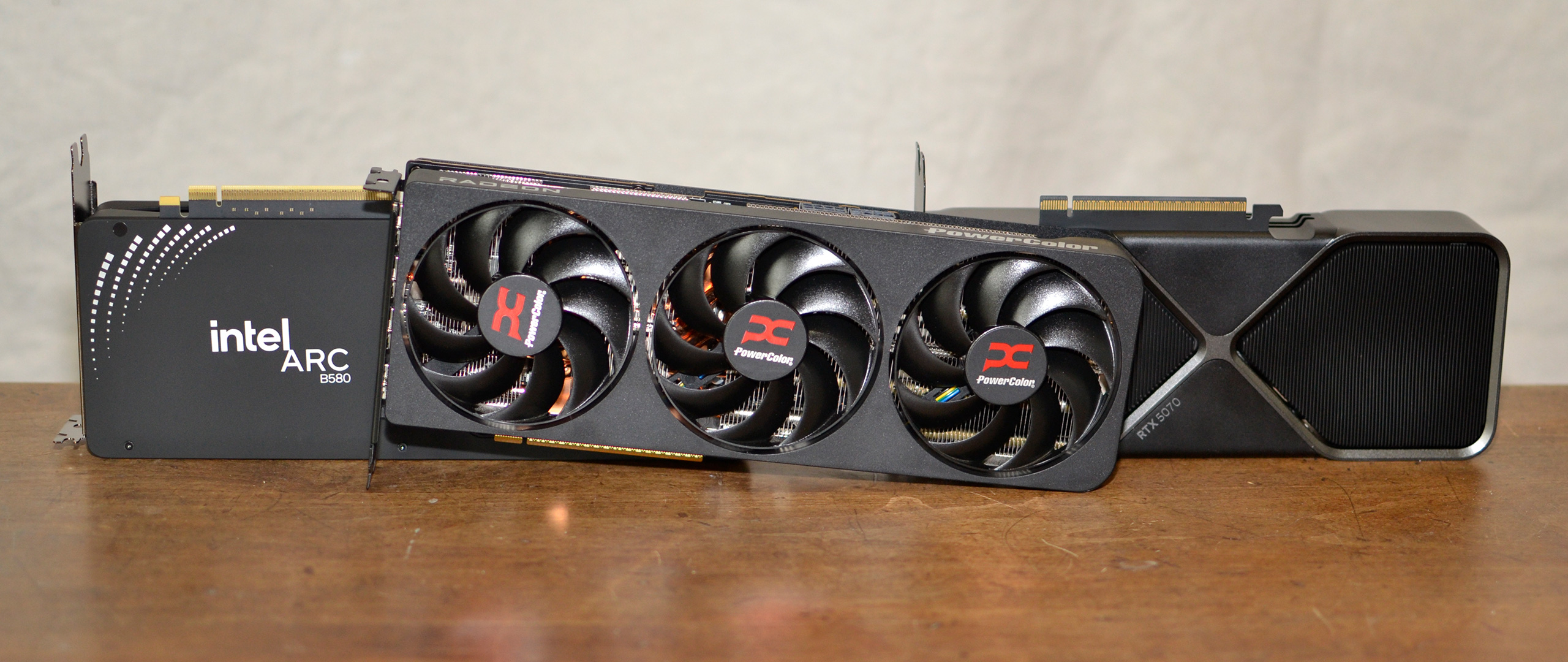
The best graphics cards and GPUs are the pixel-pumping hearts of any gaming PC, with everything else coming second. Without a potent GPU, even the best CPUs for gaming won't manage much. No one graphics card will be right for everyone, so we've provided options for every budget and mindset below. Whether you're after the fastest graphics card, the best value, or the best card at a given price, we've got you covered.
Where our GPU benchmarks hierarchy ranks all of the cards based purely on performance, our list of the best graphics cards looks at the whole package. Current GPU pricing, performance, features, efficiency, and availability are all important, though the weighting becomes more subjective. Factoring in all of those aspects, these are the best graphics cards that are currently available.
It's time to fully refresh our list of the best graphics cards. Given current market conditions, we've trimmed down the number of selections and mostly opted for latest generation products — there's no sense paying more for a slower previous gen part. Everything is fully new for this update.
Perhaps it goes without saying, but if you're not regularly following the graphics card market, prices are jacked up right now. Supply of previous generation GPUs mostly disappeared in late 2024 and the new generation parts haven't launched in sufficient quantities to match the demand. Tack on new tariffs in the U.S. and the demand for AI data center parts and we have a confluence of factors that all spell increased prices.
In the past four months, there have been eight new GPU launches. The Intel Arc B580 kicked things off in mid-December, with the new Arc Battlemage B-series GPUs, and we should have realized then that things were going to get bumpy. We called it the "$249 champion" in our review, but in general it's been selling for $400. The follow-up Intel Arc B570 wasn't nearly as impressive in terms of performance, but pricing has made it a far more attractive option in retrospect.
The Nvidia Blackwell RTX 50-series GPUs were teased at CES 2025, with the RTX 5090 and RTX 5080 launching at the end of January. Both immediately sold out and real-world scalper GPU prices have been up to twice (or more) the MSRPs. The RTX 5070 Ti and RTX 5070 mostly had the same fate, though the latter at least has been trending somewhat closer to its nominal $549 MSRP — we've seen cards pop up for $650 or so in the past week.
Not to be left out, after being pushed back a couple of months, the AMD RDNA 4 RX 9000-series GPUs landed on March 6. The RX 9070 XT at $599 looks like an awesome deal in terms of specs and performance, while the vanilla RX 9070 at $549 isn't quite as compelling. But both those MSRPs are a fantasy right now, with real-world pricing tending to be $700~$900.
What about previous generation GPUs? The supply of new Nvidia Ada Lovelace RTX 40-series, AMD RDNA 3 RX 7000-series, and Intel Alchemist Arc A-series GPUs has mostly dried up, with the exception of the lower-tier models that were selling at $300 or less. Prices went up on most of those as well, while the higher-tier cards often cost more (if you can find them) than the newer GPUs that replaced them. It would be dumb to buy an RTX 4080 Super for $1,698 when you can buy an RTX 5080 for $1,359. The newer GPU isn't massively faster, but it does manage about 10% higher performance (without MFG) and can generally be found for $1,500 or less now.
Best graphics cards for gaming, at a glance
| Graphics Card | 1080p FPS | 1440p FPS | 4K FPS | Price (MSRP) | Avg. Power |
|---|---|---|---|---|---|
| GeForce RTX 5090 | 168.3 | 138.0 | 98.2 | $3,999 ($2,000) | 394W |
| GeForce RTX 5080 | 149.7 | 105.4 | 64.8 | $1,400 ($1,000) | 253W |
| GeForce RTX 5070 Ti | 139.9 | 94.3 | 56.4 | $960 ($750) | 259W |
| Radeon RX 9070 XT | 136.3 | 90.9 | 54.6 | $850 ($600) | 280W |
| Radeon RX 9070 | 124.5 | 80.3 | 47.2 | $670 ($550) | 215W |
| GeForce RTX 5070 | 119.0 | 75.0 | 42.8 | $600 ($550) | 220W |
| Intel Arc B580 | 65.8 | 41.0 | 23.1 | $341 ($250) | 152W |
| GeForce RTX 4060 | 66.2 | 37.2 | 16.1 | $320 ($300) | 123W |
| Intel Arc B570 | 56.9 | 33.5 | 13.9 | $296 ($220) | 136W |
| Radeon RX 7600 | 52.9 | 24.5 | 11.3 | $260 ($270) | 144W |
| Intel Arc A750 | 47.2 | 29.4 | 15.2 | $200 ($200) | 184W |
Note: We're showing current online prices alongside the official launch MSRPs in the above table, with the GPUs sorted by performance. Retail prices can fluctuate quite a lot right now; the table lists the best we could find at the time of writing. Also note that the "average power draw" column is the average power across all of our testing for each GPU — so the 5090 in particular uses far less power when it's CPU limited at 1080p, and that skews the overall average down.
The above list shows all the latest generation graphics cards, along with a few prior generation parts that are still worth considering. These make up the short list of graphics cards we'd currently recommend. We've basically eliminated all but the least expensive prior generation GPUs — with those GPUs being of interest to potential budget builders, as well as anyone who just needs a modest GPU to get by until prices come down (which might take a while).
There are currently only eight latest generation GPUs, but we anticipate that at least five more will arrive in the coming months (RTX 5060 Ti 16GB/8GB, RTX 5060, RX 9060 XT, and RX 9060). If you want to see how all of the current and prior generation GPUs stack up, check our GPU benchmarks hierarchy.
The overall performance ranking incorporates 21 games from our updated test suite, which takes the geometric mean (i.e. equal weighting) for both rasterization and ray tracing games. Note that we are not including any upscaling or frame generation results in the table, which can skew things a lot depending on the selection of games and what "performance enhancing drug" versions are supported.
The short summary: DLSS 4 offers superior image fidelity, with multi-frame generation (MFG) on 50-series GPUs; DLSS 3 and DLSS 2 offer similar upscaling quality, with 40-series GPUs also getting framegen support. FSR 4 offers AI-enhanced upscaling and framegen, but only for RX 9000-series AMD cards; FSR 3.1 and earlier still work on any GPU, but the quality tends to be noticeably lower. XeSS 2 isn't widely supported yet and requires an Arc GPU, while XeSS 1.3.1 looks decent but isn't used in as many games as FSR or DLSS.
While performance can be an important criteria for a lot of gamers, it's not the only metric that matters. Our subjective rankings below factor in price, power, and features colored by our own opinions. Others may offer a slightly different take, but all of the cards on this list are worthy of your consideration.
1. Nvidia GeForce RTX 5070
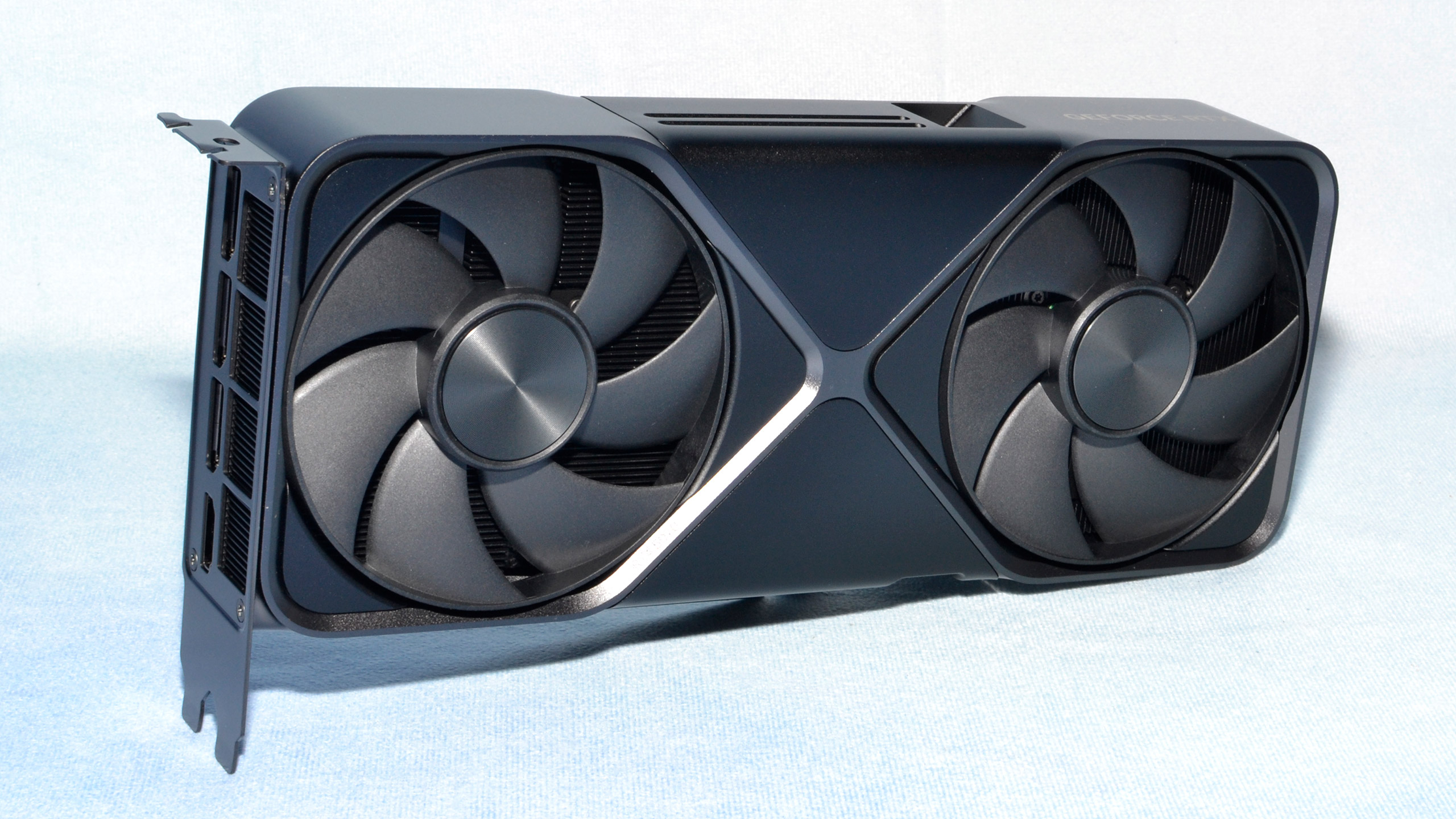
Specifications
Reasons to buy
Reasons to avoid
The GeForce RTX 5070 has plenty going for it. It's up to 20% faster than the prior generation RTX 4070, for the same nominal $549 asking price. If you can find it that cheap, you're not likely to do much better right now. The problem is that retail pricing and availability have been nothing like Nvidia's MSRP on most of the Blackwell RTX 50-series GPUs — but this one definitely looks to be the most available option at present.
We've seen a few 5070 cards go in and out of stock at $600–$650 over the past couple of weeks, which is only $50–$100 more than the base suggested pricing. Right now, we're tracking this MSI Ventus 3X at Newegg for $599, or there's even an MSI Shadow 2X OC direct from MSI for $549 — which has shockingly been available for several hours now. Maybe we're finally seeing sufficient inventory of the 5070. Considering brand-new 4070 and 4070 Super cards are basically gone (prices start at over $800), and there aren't any competing GPUs available with clearly better performance with a lower price, that makes the RTX 5070 the best graphics card right now — with the usual caveats concerning whatever price you can actually find.
The most direct competition comes from AMD's Radeon RX 9070, our second pick. It has the same nominal $549 base MSRP, but current prices start at around $669. That's 12% more money, for 33% more VRAM, but in our testing the 9070 is only 7% faster at 1440p ultra (and 3% faster at 1080p). There's not even much equivocation about Nvidia having faster ray tracing this round, thanks to improvements in AMD's RDNA 4 chips — though full RT games do still favor Nvidia hardware, and DLSS quality and support remain better.
$600 or more used to be the realm of high-end GPUs, but these days it's more of a mainstream price point for graphics cards. Nvidia (and AMD) have really stretched out the range of performance you can find. The RTX 3090 for example was only about 37% faster than the RTX 3070 while costing three times as much back in early 2021 (and we'll just ignore the real-world pricing that was going on during those dark days). The RTX 4090 was basically twice as fast as the RTX 4070, still for triple the price. Today, the RTX 5090 continues that trend and effectively doubles the performance of the 5070 for more than triple the price.
If $600 — or $650~$700 — is too rich for your gaming blood, we've got a bunch of more reasonably priced GPUs listed below. Several are overpriced compared to last year, but outside of our top two picks, the current GPU climate consists of lots of "overpriced" cards. Check some of our other picks if you're after something that will suffice until prices come down (assuming they do, which might be wishful thinking at this point).
Read: Nvidia GeForce RTX 5070 review
2. AMD Radeon RX 9070
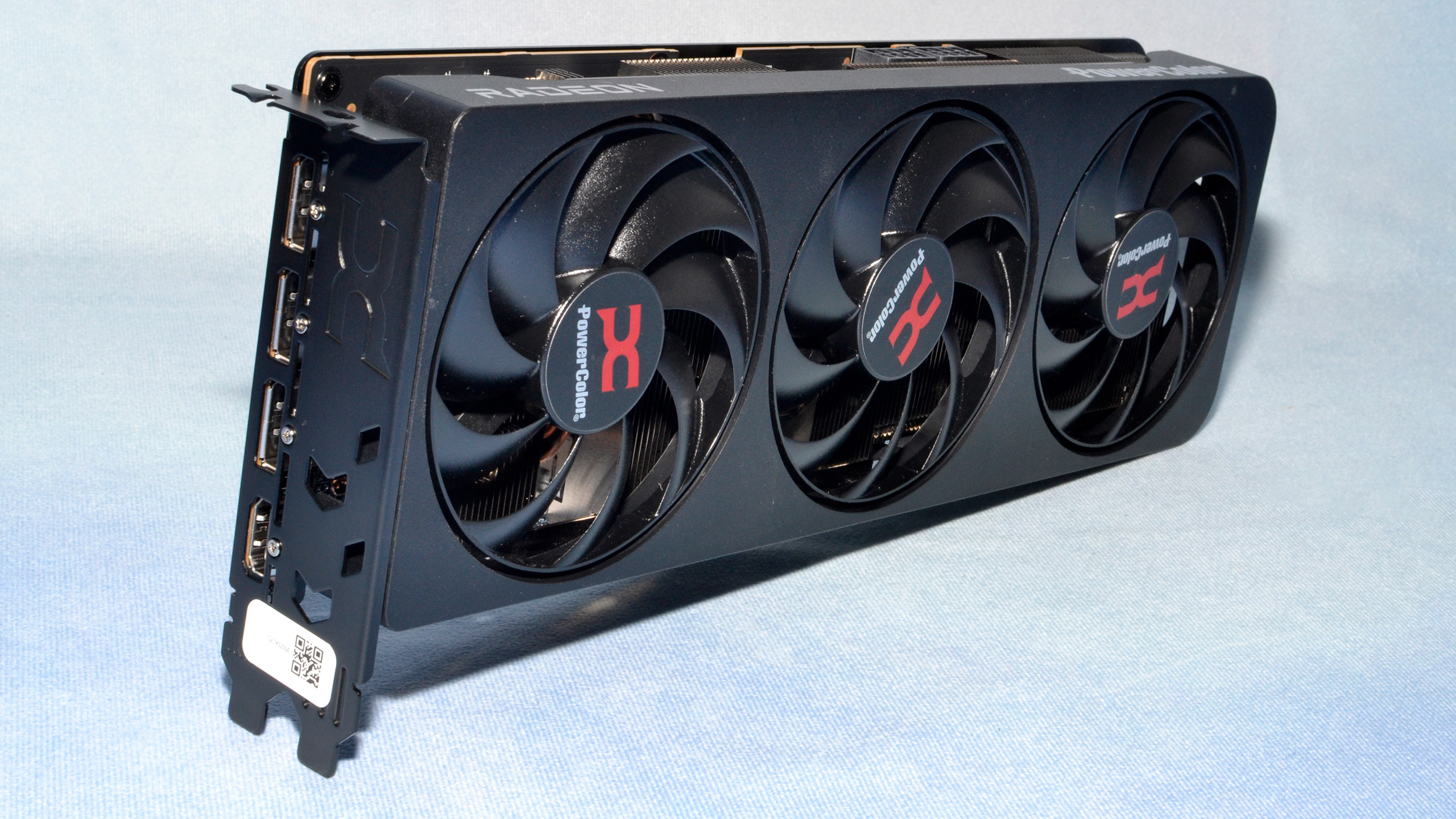
Specifications
Reasons to buy
Reasons to avoid
The AMD Radeon RX 9070 ranks as the second best graphics card right now, based on performance, pricing, and availability. On paper, it's the same price as the above 5070 and offers up to 10% higher performance (at 4K — 7% faster at 1440p). In practice, the best prices we're currently seeing are 12% higher, and Nvidia still wins on the software and features side of the equation. Either way, these are two potentially great graphics cards and it comes down to what retail prices you can find.
AMD dramatically overhauled its RDNA 4 GPU architecture compared to RDNA 3, and all we can say is: It's about damn time. RDNA 3 was more of a lateral move from RDNA 2, and GPU chiplets were a cost-saving measure rather than a performance boosting choice. RDNA 4 moves back to a monolithic design, targeting mainstream performance rather than chasing the high-end and enthusiast markets. If AMD can keep supply coming and meet the demand, it should move a lot of GPUs.
Key changes per GPU compute unit (CU) involve double the ray tracing performance, up to quadruple the AI performance, and improved shader performance as well — though the latter is a bit more nebulous. In our testing, the 56 CU RX 9070 completely eclipses the previous generation 60 CU RX 7800 XT, both with basically the same 16GB of GDDR6 memory (clocked at 20 Gbps vs 19.5 Gbps). It's 30% faster in our overall performance metric, 26–31 percent faster in rasterization games, and 40–42 percent faster in ray tracing performance.
AI and Stable Diffusion performance also show improvements of 38% to as much as 73%, depending on the workload — with 73% being the improvement in a Stable Diffusion XL benchmark that's arguably more representative of a heavy AI task. AMD also improved both the encoding quality and performance of its video engine with RDNA 4.
The only real question will be real-world GPU pricing, which is in a constant state of flux right now. Earlier this week, we couldn't find an RX 9070 for less than $870, 58% more than AMD's official MSRP — though note that AMD doesn't make any 9070-series cards so it's up to the AIBs to determine how much to charge. Two days later, we're currently seeing a Gigabyte RX 9070 Gaming OC for $669, 'only' a 22% markup. Obviously, whatever prices you can find when you're ready to purchase can heavily shift the relative value of the 5070 and 9070.
Read: AMD Radeon RX 9070 review
3. Intel Arc B580
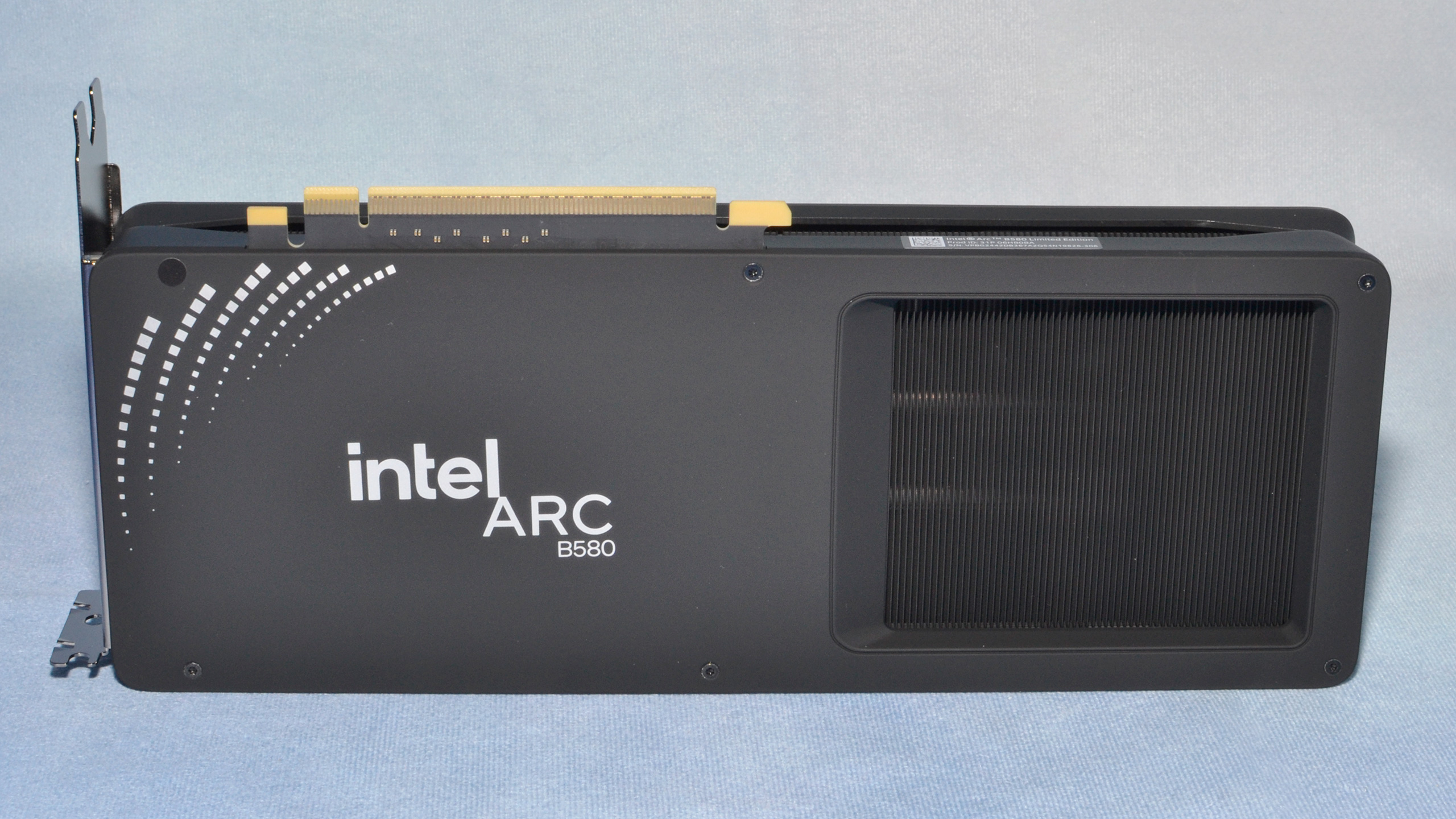
Specifications
Reasons to buy
Reasons to avoid
The best graphics card right now doesn't need to be the fastest option, nor does it need to be incredibly cheap. All we really want is a great balance of price, performance, and features. The Intel Arc B580 hits two out of three, with price still being the wild card. It has a nominal $249 MSRP, which we generally haven't seen at retail since the card launched in December. That tempered our enthusiasm a bit, until the AMD and Nvidia cards sold out and made a $100 markup seem less terrible.
We're not saying you can always find the Arc B580 for $350, though right now there's this Gunnir Arc B580 for $341. Most of the latest generation GPUs are either out of stock or cost significantly more than their base MSRPs. Intel's Arc B580 at current pricing strikes a good balance, with improved drivers and an attractive blend of performance and features. Where this actually ranks will depend greatly on what price you can find on any given day. Sub-$300 is great, over $400 is bad, and everything else falls somewhere in between.
The B580 trades blows with Nvidia's RTX 4060 at 1080p, and pulls ahead at 1440p and especially 4K — not that either usually works well as a native 4K gaming option. It's also up to twice as fast as AMD's RX 6600, and 67% faster than the RX 7600. That's all thanks to having 12GB of VRAM on a 192-bit interface, where current competing GPUs from the red and green teams are generally providing 8GB on a 128-bit interface.
Drivers remain a bit of a concern, but Intel's driver team has been cranking out updates on a regular cadence, and most of the issues we encountered have been addressed. There are still occasional niggles with day 0 drivers on new releases, and support for Intel's XeSS upscaling (and XeSS 2 with framegen) lags far behind AMD and Nvidia in terms of current game counts — FSR 3 tends to work just fine, however.
Depending on the current price, the ranking can and will change. If Intel can increase its output of Arc B580 silicon, though, and stay below Nvidia and AMD pricing, the Battlemage architecture warrants consideration. We just wish there was a step up B750 or B770 with equally reasonable pricing.
Read: Intel Arc B580 review
4. Nvidia RTX 4060
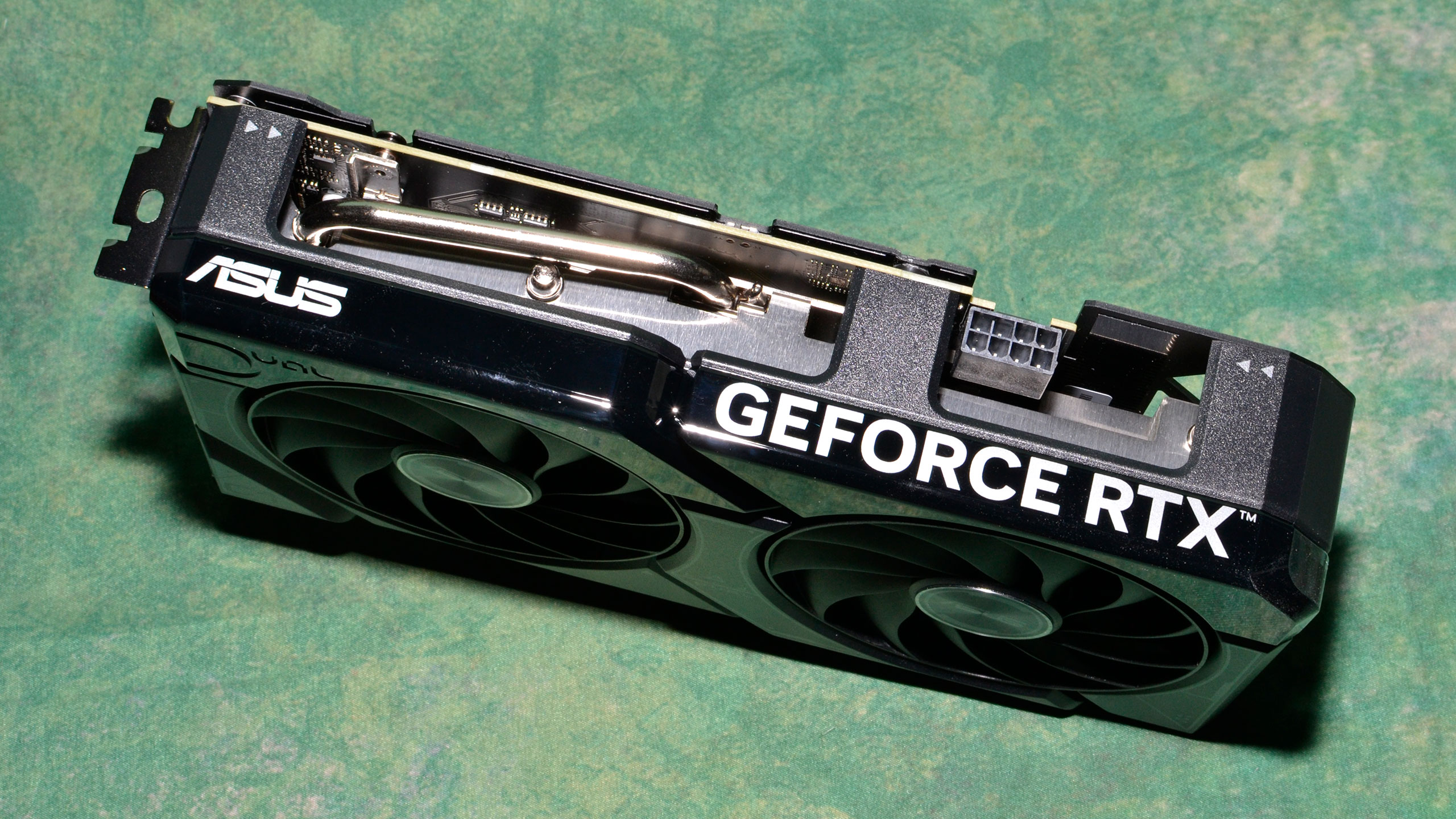
4. Nvidia GeForce RTX 4060
Our expert review:
Specifications
Reasons to buy
Reasons to avoid
The GeForce RTX 4060 now approaches its two year anniversary, and it was never one of our favorite GPUs. After an impressive RTX 3060 12GB solution, we hoped that would continue as the future minimum... and then Nvidia decided 8GB was "enough" for a budget GPU and even came out with a cut-down RTX 3060 8GB.
And 8GB of VRAM sort of kind of is workable, to be fair. Most games will run decently at 1080p with a blend of high to ultra settings, but there are definitely titles where you'll need to reduce the settings to keep from exceeding the 4060's VRAM. DLSS upscaling works great at least, while framegen can increase the VRAM load and at times ends up failing to run well on the budget Ada solution.
Compared to Intel's Arc B580 above, the lack of VRAM is the biggest issue, but the 4060 continues to be more efficient, and it's often available for a slightly lower price. You also get Nvidia's generally better driver support, DLSS, and other extras, and performance at 1080p is basically tied. As long as the 4060 costs closer to $300 (or less) and remains available, it's worth a look in the current market conditions — we'll have to wait and see where the rumored RTX 5060 lands in pricing and performance later this year.
AMD's direct competition would be the RX 7600 XT, except pricing and availability for that card have become problematic, with prices of $420 or more. The 4060 easily beats the lesser RX 7600, by 40–50 percent, and is still slightly faster than the more expensive 7600 XT at 1440p and 1080p. That's not a resounding endorsement, but right now this might be the best of the worst for Nvidia GPU deals.
Read: Nvidia GeForce RTX 4060 review
5. AMD RX 7600
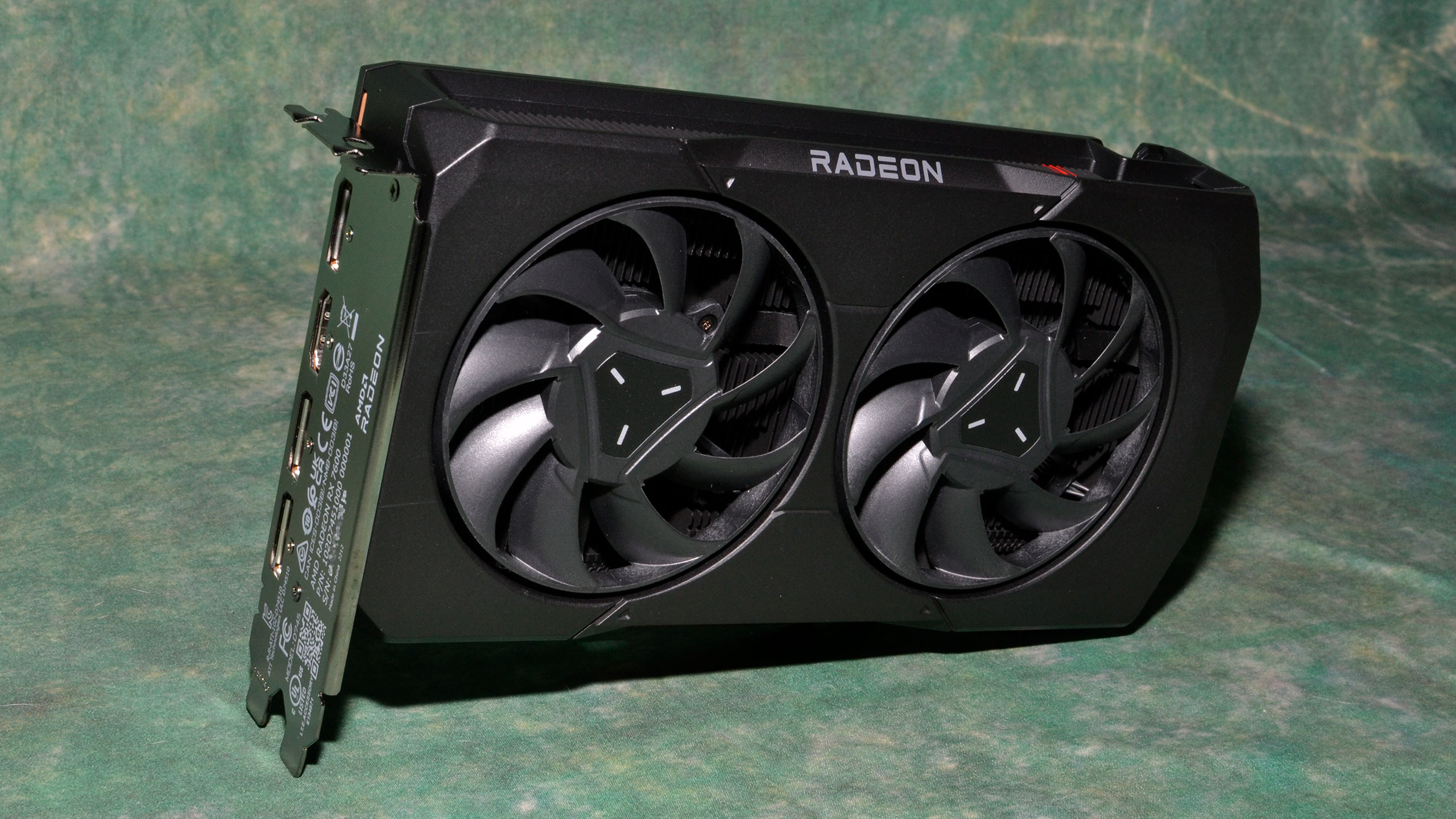
Specifications
Reasons to buy
Reasons to avoid
Continuing the trend of older but still viable GPUs, the Radeon RX 7600 and its Navi 33 GPU replaced the previous generation Navi 23 parts, mostly as a sideways move with some extra features. Performance ends up just slightly faster than the RX 6650 XT, while using about 20W less power, for a nominal $10~$20 price increase. The extras include superior AI performance (if that matters to you in a budget GPU), AV1 encoding and decoding hardware, and DisplayPort 2.1 UHBR13.5 outputs.
The most important thing right now with the RX 7600 is that it remains available at a reasonable price. Even Nvidia's RTX 4060, the closest direct competitor, has crept up $20–$30 in price over the past two months. The 7600 however can still be picked up for $259. And, for the most part, you get what you pay for. This is most definitely a budget GPU and should be approached as such — something to tide you over if you're putting together a new PC, or a card that's mostly fit for 1080p gaming (without ray tracing).
Nvidia's RTX 4060 costs $60 more (a 23% price increase) and delivers about 40% more performance, while using less power. It also supports DLSS, which looks better than FSR in all the tests we've conducted. Both GPUs only have 8GB of VRAM, but Nvidia seems to manage that limited memory a bit better than AMD. We wouldn't generally recommend turning on ray tracing for a $250~$350 GPU, but if you want to try that then the 4060 can be nearly twice as fast — still playable even at 1440p.
You should buy the RX 7600 if you're mostly looking for acceptable performance and decent efficiency at the lowest price possible — and you don't want to deal with Intel drivers, don't like Nvidia, and don't care about ray tracing. Otherwise, give the Arc B580/B570 and RTX 4060 a thought. The newer RX 7600 XT doubles the VRAM to 16GB and could be worth a thought, but current prices make it a poor value.
Further reading:
AMD Radeon RX 7600 review
AMD Radeon RX 7600 XT review
6. Intel Arc B570
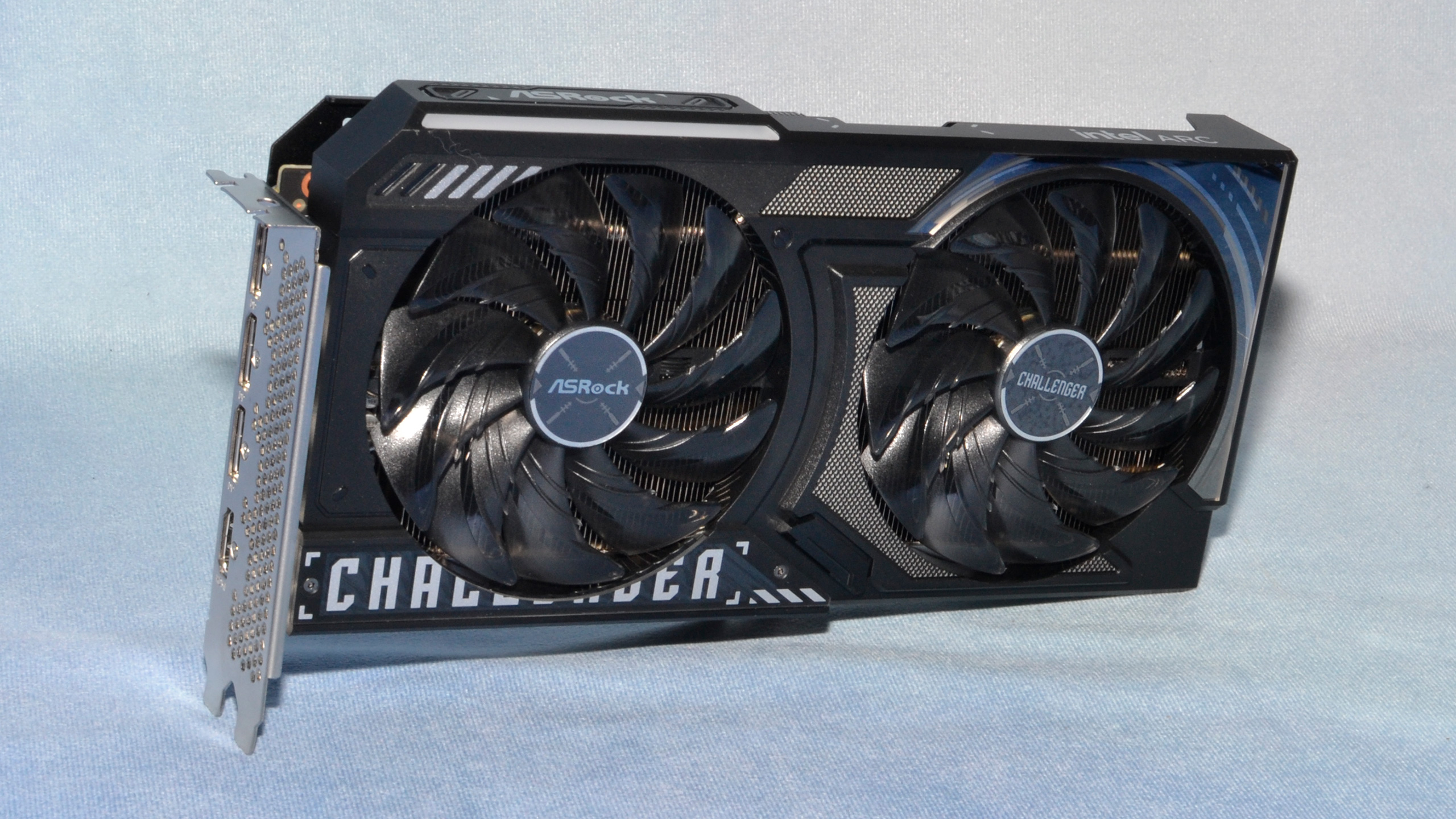
Specifications
Reasons to buy
Reasons to avoid
On paper, the Intel Arc B570 looks like a bigger step down than we'd like. It takes the same GPU as the B580 and cuts the memory bandwidth and capacity by 17%, also disables 10% of the GPU processing units, and drops the GPU clocks by 3.5%. All that with a nominal 12% decrease in price? That's not really that great. But in practice things favor the B570 more than the paper specs might suggest, and that comes down to pricing.
The B570 officially has a $219.99 MSRP, set by Intel — but Intel doesn't make any B570 cards itself so that means it's up to the AIB partners. Since its launch in January 2025, the B570 has mostly been available at prices reasonably close to the MSRP, like $220~$250. Even right now, a quick search suggests the best price you can find is around $325, but a bit more digging deals up stuff like this $279 Newegg combo that gives you an ASRock Arc B570 along with an ASRock 650W Bronze PSU. Now, that's probably a $50 PSU at best (non-modular, Bronze, etc.) but that still suggests the graphics card is available for under $250.
What's performance look like in practice? The Arc B570 ends up being about 15% slower than the B580, more or less as expected. Curiously, the 4K results drop off precipitously — it's 39% slower at 4K — so the 10GB vs 12GB still seems to be a lot like 8GB vs 12GB. The B570 is also about 14% slower than the RTX 4060 in our testing, even though based on specs we would expect them to be tied. The answer to why that happens likely comes down to drivers.
Intel's drivers have improved significantly since the Arc A380 launched in mid-2022 (it first became available in China at the start of 2022). The improvements since the Arc A770 launch in October 2022 aren't quite as impressive, but there have been a lot of bug fixes and "broken" games that now work fine on the various Arc GPUs. But even when games might work fine, there are still plenty of instances where performance seems to be lower than expected, and further optimization opportunities remain.
Given everything else you get from an Nvidia GPU — chiefly DLSS, but also better driver support in general over time — you can even make the argument that the B570 really just trades blows with the old RTX 3060 12GB, which you can still find online for a relatively similar price. But if you want a brand-new GPU with more modern features (like AV1 encoding and DisplayPort 2.1), the B570 represents a another reasonable option in today's market, with caveats.
Read: Intel Arc B570 review
7. Nvidia GeForce RTX 5080

Specifications
Reasons to buy
Reasons to avoid
Nvidia's GeForce RTX 5080 might be the best high-end graphics card you can currently buy, but you'll pay dearly for the privilege. Nominally carrying a $999 MSRP (for Nvidia's Founders Edition that's not expected to be widely mass produced), the 5080 cards have been selling out almost immediately at anything approaching a "reasonable" price. In this case, that means anything below $1,400 isn't likely to stay in stock long. It's a harsh reality check for anyone that figured there would be big performance gains with Blackwell RTX and held off buying an RTX 4080 Super for as little as $950 last November.
Gen-on-gen performance improvements — without factoring in AI tasks that leverage the new FP4 support (a relatively uncommon thing right now), or Nvidia's DLSS 4 Multi Frame Generation (MFG) — are incredibly mild, with our testing showing a slim 7–9 percent increase compared to the RTX 4080 Super. That would make the 5080 about 9–12 percent faster than the original RTX 4080, if you're wondering. It's also up to 18% faster than AMD's prior generation RX 7900 XTX, which continues to be AMD's fastest solution.
The biggest complaint many will have, besides the retail prices, is that the 5080 takes a rather large step down from the halo RTX 5090 card. It's 34% slower overall, where the 4080 was only 24% slower than the 4090. Incidentally, the 5080 is also 18% slower than the RTX 4090. But then all you need to do is look at current RTX 5090 pricing and suddenly the performance gap doesn't look that bad.
Nvidia does have some ways to boost "performance," this time with MFG (Multi Frame Generation). The previous frame generation used a fixed function OFA (Optical Flow Accelerator) unit for the 40-series, and that unit still exists in the 50-series. But the new DLSS 4 frame generation and MFG algorithms rely on the AI tensor cores, boasting higher performance and higher image fidelity — thanks in part to the use of FP8 inference calculations, along with other AI improvements from the past two years.
It's not that MFG is bad, but comparing MFG running at 200 FPS versus framegen running at 120 FPS, as an example that we've seen in actual testing, MFG really only looks and feels slightly better. It certainly doesn't match the "67% faster!" performance claims that you'd see from Nvidia for such a scenario. Like framegen before it, MFG feels more like a 20% improvement in smoothness for an 80% increase in framerates, and it needs a sufficiently high (we'd say 40 FPS) input rate to work well.
Supply is catching up to demand, which means prices are starting to come down and cards are staying in stock. We've seen cards for as 'little' as $1,379 in the past week, though right now the best we can find is $1,399 for a Zotac RTX 5080 Solid OC — there are also MSI Ventus variants for $1,399 to $1,409. In the coming days we might actually start seeing 5080 cards selling for under $1,200, which frankly is where we think they belong based on their incremental generational performance gains.
Read: Nvidia GeForce RTX 5080 review
8. AMD Radeon RX 9070 XT
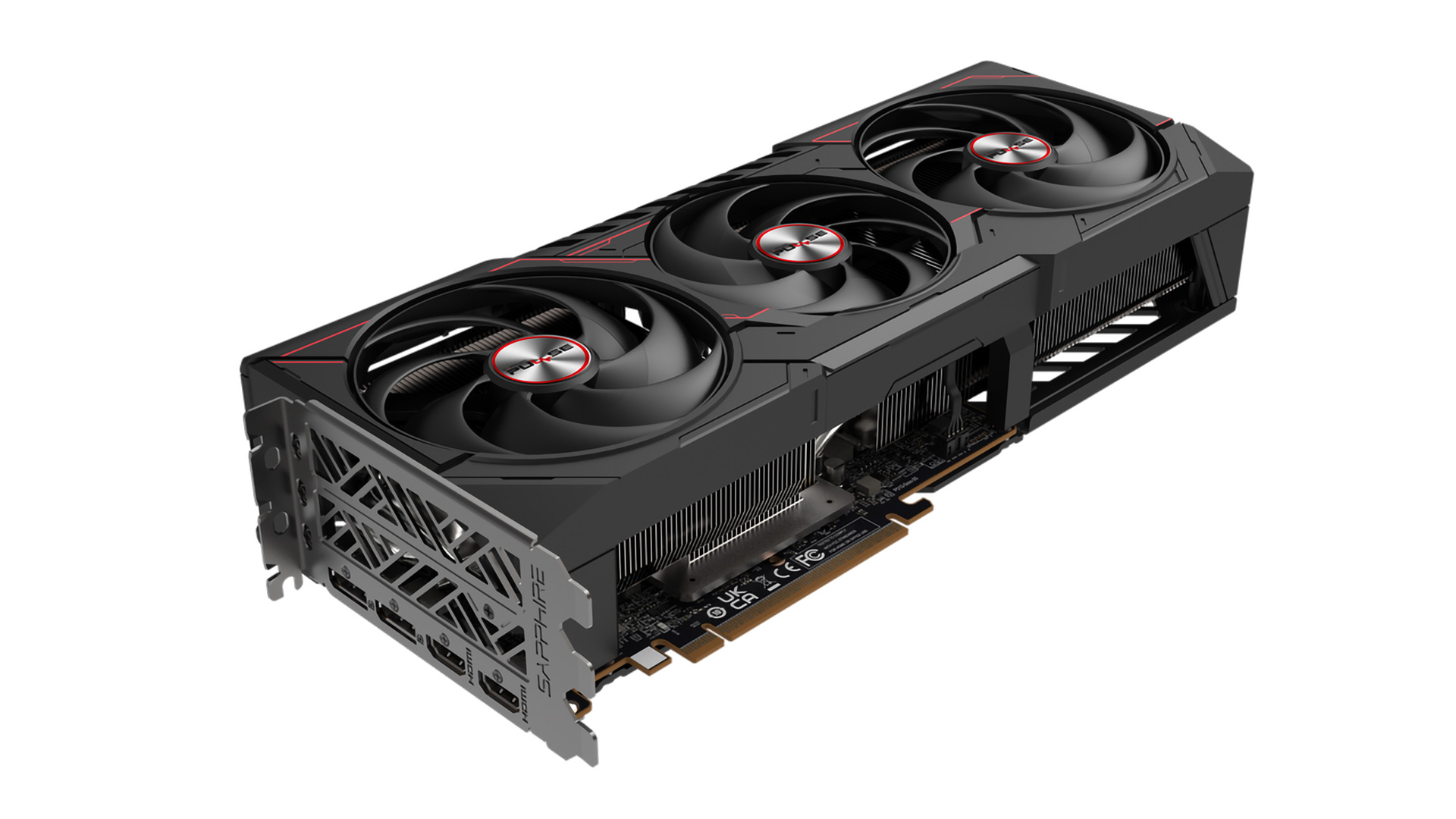
Specifications
Reasons to buy
Reasons to avoid
We picked the AMD Radeon RX 9070 as our second overall choice, mostly because it's real-world pricing (in the U.S.) is much better than the RX 9070 XT. AMD gave MSRPs of $549 and $599 at launch, where the 9% increase in price would come with a 15% improvement in performance. Retail pricing right now puts the two GPUs at $669 and $849, however, a 27% price increase for the same 15% performance boost. But prices can and will continue to change, and if the 9070 XT can get below $750 it would be the better pick again.
As above, the RDNA 4 GPU architecture greatly improves AMD's competitive positioning. The RX 9070 XT beat the RTX 5070 by 24% in our testing, and it was only 4% behind the more expensive RTX 5070 Ti. Granted, Nvidia still does better in heavy ray tracing games and its DLSS upscaling and frame generation technologies are also superior. Are they worth the additional $100 or more, though? That's a more difficult call and will depend in particular on individual feelings about upscaling, framegen, and proprietary software solutions.
Pricing may be better on the 9070 XT in non-U.S. markets as well, so if there's less than a 15% difference in price between the vanilla 9070 and the 9070 XT, we'd again opt for the faster GPU. That explains why demand remains higher for AMD's top RDNA 4 solution, and questions of long-term supply and availability remain. AMD apparently sold through about three or four months of inventory stockpiling in short order when the GPUs launched on March 6.
The best price we've found, recently, for the RX 9070 XT is $789 at Newegg, which is now sold out. There's an $849 third-party listing on Amazon, or you can wait and see if prices come down from there. With the impending tariffs and continued supply shortages, it's still not clear where exactly retail prices will settle.
Read: AMD Radeon RX 9070 XT review
9. Nvidia GeForce RTX 5070 Ti
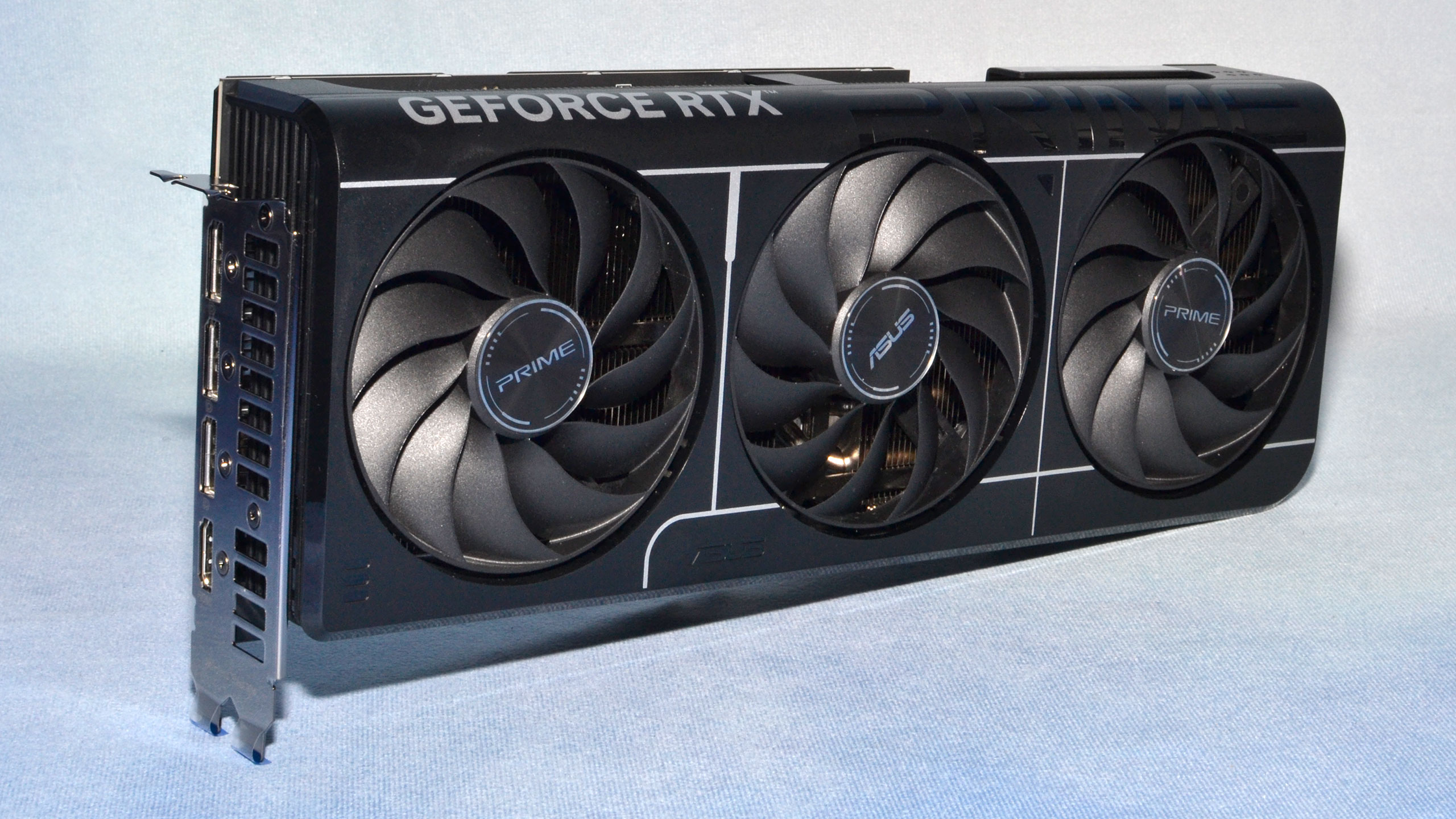
Specifications
Reasons to buy
Reasons to avoid
The Nvidia GeForce RTX 5070 Ti could have been great, and it may yet achieve greatness. As with so many other GPUs right now, it all comes down to pricing and availability. The $749 base MSRP originally given at launch would make this a decent card. Unfortunately, it hasn't really seen sub-$1,000 pricing in the days following its release.
Performance isn't too surprising. In our test suite, the RTX 5070 Ti offers about 90% of the performance of the 5080, for 75% of the price. However, it's also only about 12% faster than the prior generation RTX 4070 Ti Super, ostensibly for $50 less. That might seem like a nothingburger generational upgrade, but keep in mind that Blackwell RTX 50-series GPUs are using the same TSMC 4N process node as the RTX 40-series, so even a modest improvement at least gives a step in the right direction.
Nvidia points to MFG as the way forward, and the pre-launch claims that the RTX 5070 could beat and RTX 4090 went over about as well as you'd expect. Multiplying framerates by AI-based frame interpolation and smoothing can help, but not nearly as much as the numbers imply. Start with 50 FPS and apply 2X framegen to get to 90 FPS, and it looks smoother but feels more like 60~65 FPS. With 4X MFG Nvidia can push that to perhaps 160 FPS... and it still feels more like 75~80 FPS. Better, perhaps, but not at all the same as what you'd feel from a native (non-framegen) 160 FPS!
But we also need to consider that the feel of games running natively at extremely high framerates also hits a plateau. I can tell the difference between 120 FPS and 60 FPS, but move from 120 to 180 FPS or even 240 FPS and you get greatly diminishing returns. The reality is that for most gamers, it's less about getting a game to go from 120 to 240 FPS and more about getting games to move from 30 FPS to 60 FPS or higher. That's noticeable, but framegen doesn't help as much with games running at closer to 30 FPS.
Where does that leave the RTX 5070 Ti? It has enough VRAM to be able to handle most games at maxed out settings (though Indiana Jones and the Great Circle with full RT effects and framegen can exceed 16GB of memory use and collapse in a stuttering heap). It's also about 4% faster than the 9070 XT, with support for Nvidia's various DLSS technologies. In short, we do feel it's worth more than the 9070 XT... but not a ton more.
Wait for this one to fall below $850 is our advice, and $800 or lower is really where it belongs — even if it may not reach that level for the U.S. market.
Read: Nvidia GeForce RTX 5070 Ti review
10. Nvidia GeForce RTX 5090
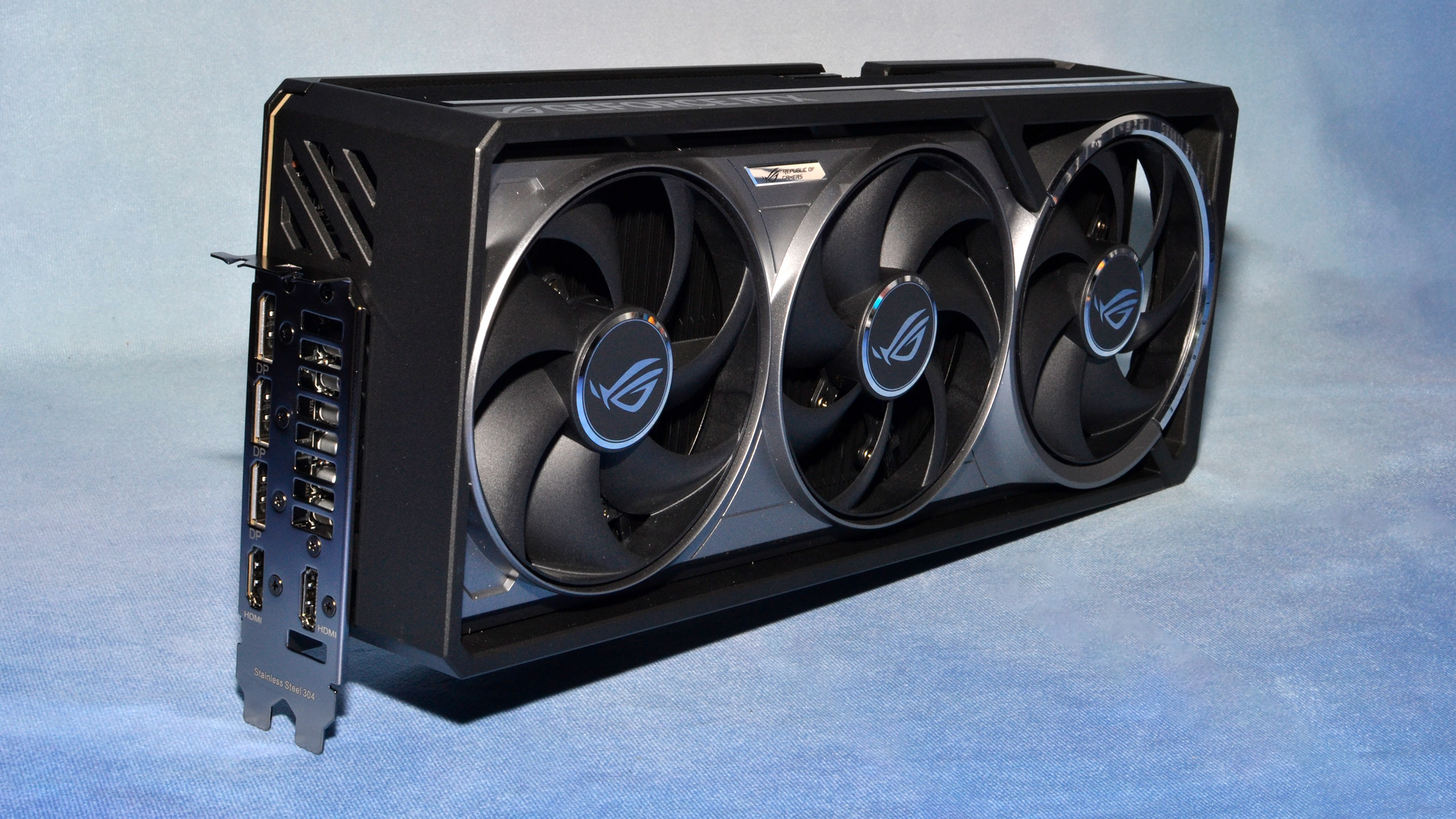
Specifications
Reasons to buy
Reasons to avoid
And here we are: Nvidia GeForce RTX 5090, the Grand Poobah, King of the Hill, pole position holding fastest consumer graphics card ever released (so far). If you want the no-holds-barred fastest GPU for gaming, this is it. Nominally priced at $1,999, it's about 25% faster than the prior generation RTX 4090 and has a 25% higher base MSRP — that's right in line with sticking to the same process node and the lack of Moore's Law advances. But the retail pricing from around the globe has been a joke, and it's not at all clear how many 5090 GPUs have even shipped.
Some people put together details from Micro Center suggesting all 28 stores combined had a total inventory of just 233 RTX 5090 cards on January 30, 2025. Online stores basically didn't show any cards in stock for weeks. Even eBay doesn't suggest there have been a lot of 5090 cards produced, with only 209 sales in the U.S. over the past month. Perhaps that's because most buyers aren't looking to sell, but if you want a card, be prepared to pony up in a big way.
There's a $3,999 4090 listing on Amazon right now, double the supposed MSRP. Can the AIB partners make a reasonable profit at $1,999? We couldn't say, as we don't know how much they pay Nvidia for the GPU and memory, but we'd guess the answer is likely yet... provided they ship enough units. But if they can't even buy enough 5090 GPUs to go around? Well, then MSRPs are going to skyrocket, as we've already seen.
If you really want an RTX 5090, it might be easier to just buy a new PC from a system builder. Newegg doesn't show any 5090 cards in stock right now, but you can get a complete Ryzen 7 7800X3D PC with 64GB of memory and a 2TB SSD, plus an RTX 5090, for 'only' $4,579. The memory, motherboard, cooler, case, power supply, storage, and OS would cost about $1,300 (give or take $100), so in that case it would be like paying more like $3,000 for the 5090 graphics card, and $250 for system testing and assembly.
We love the theoretical performance the 5090 offers, even if it's often held back by the CPU. But the current pricing means we can't recommend it to most people. If you have the funds to buy one and the price tag doesn't scare you away, enjoy having Nvidia's top GPU for the next two years while we wait for the inevitable RTX 6090.
Read: Nvidia GeForce RTX 5090 review
11. Intel Arc A750
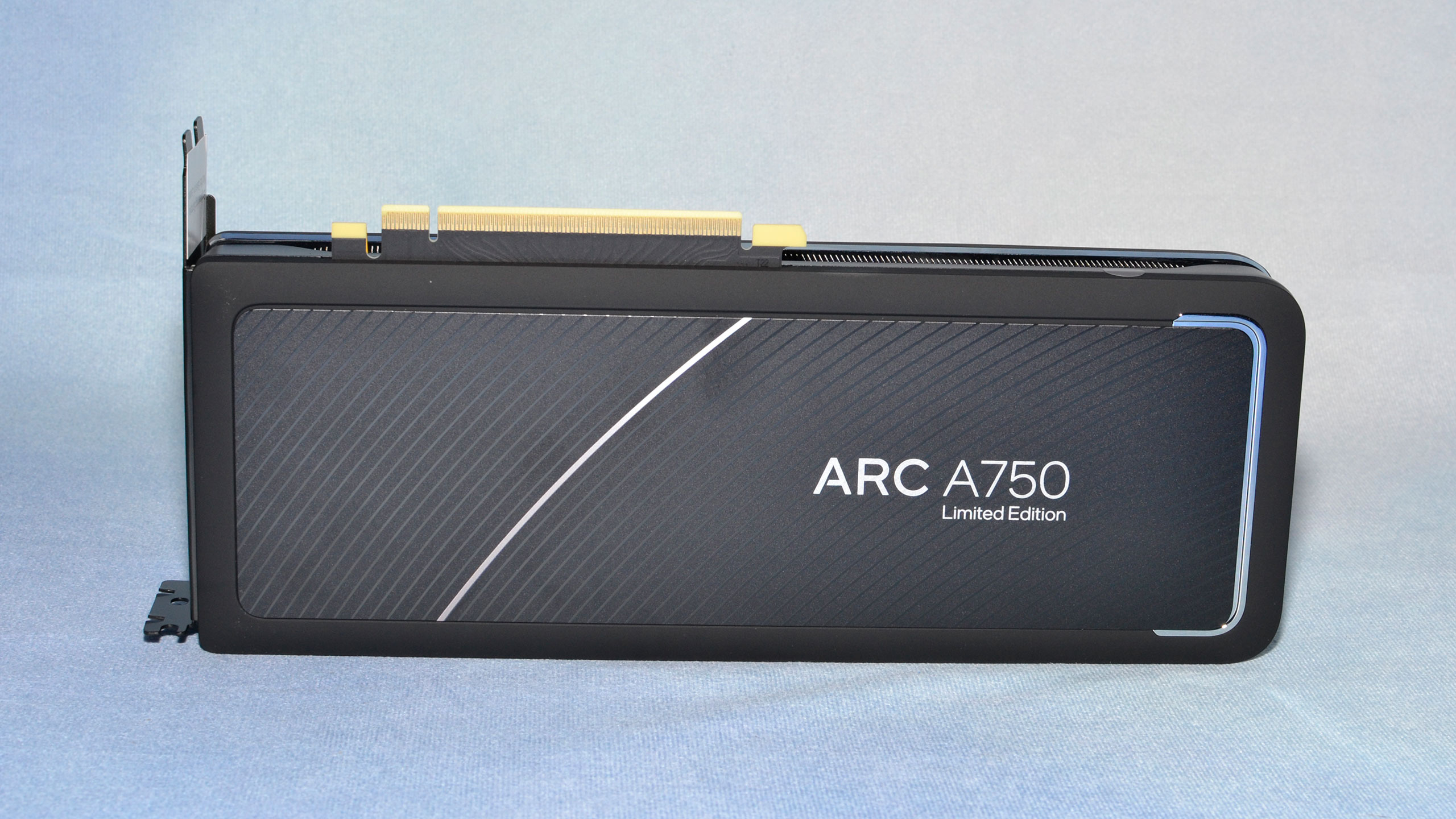
Specifications
Reasons to buy
Reasons to avoid
The Intel Arc A750 at launch was a bit like dealing with Dr. Jekyll and Mr. Hyde. At times, performance looked excellent; other times, Arc came up far short of expectations. The drivers continued to improve, however, and with prices still starting at $200, this represents the best overall GPU value — if you ignore the cost of other PC components in your build.
There are compromises you'll need to make, like the 8GB of VRAM, relatively inefficient architecture, and occasional driver oddities — all things justifiable by the $200 price tag. The A750 actually comes out ahead at 1080p ultra, as well as 1440p and 4K where performance is questionable on both cards, but AMD's 7600 runs 29% faster at 1080p medium. Again, that's more down to drivers and architecture.
Intel was the first company to deliver hardware accelerated AV1 encoding and decoding support, and QuickSync continues to deliver an excellent blend of encoding performance and quality. There's also XeSS, basically a direct competitor to Nvidia's DLSS, except it uses Arc's XMX matrix cores when present, and can even fall back into DP4a mode for non-Arc GPUs. But DLSS 2 still comes out on top, never mind DLSS 3 and DLSS 4, and those are all far more widely supported.
For an ultra-budget GPU to tide you over, the Arc A750 can work, and it's nice to have a third player in the GPU arena. The supply of Arc Alchemist seems to have been far more than the market wanted, and even more than two years after the initial launch, it's still available. That could change in the coming days, at which point the Arc B570 above offers 15% more performance and greatly improved efficiency and hopefully will have come down in price.
Read: Intel Arc A750 Limited Edition review
How we test the best graphics cards
Determining pure graphics card performance is best done by eliminating all other bottlenecks — as much as possible, at least. To that end, our updated 2025 graphics card testbed consists of an AMD Ryzen 7 9800X3D CPU, ASRock X670E Taichi motherboard, 32GB G.Skill DDR5-6000 CL28 memory, Crucial T700 4TB SSD, Corsair HX1500i Platinum PSU, and a Cooler Master 280mm CPU cooler. The newer Ryzen 9 9950X3D might be slightly faster in some cases, but otherwise we've got just about the fastest components available so that our focus can be on the graphics cards.
We test across the three most common gaming resolutions, 1080p, 1440p, and 4K, using 'medium' and 'ultra' settings at 1080p and 'ultra' at 1440p and 4K. Where possible, we use 'reference' cards for all of these tests, like Nvidia's Founders Edition models and AMD's reference designs. Most midrange and lower GPUs do not have reference models, however, and in some cases we only have factory overclocked cards for testing. We do our best to select cards that are close to the reference specs in such cases.
For each graphics card, we follow the same testing procedure. We run one pass of each benchmark to "warm up" the GPU after launching the game, then run at least two passes at each setting/resolution combination. If the two runs are basically identical (within 0.5% or less difference), we use the faster of the two runs. If there's more than a small difference, we run the test at least twice more to determine what "normal" performance is supposed to be.
We also look at all the data and check for anomalies, so for example we expect the RTX 5080 to be faster than the RTX 5070 Ti; if it's not, and we're not in a CPU limited situation, we'll recheck both cards. (We did drop several games from our initial test suite after determining there was too much variability between tests, due to things like dynamic weather and time of day.)
Due to the length of time required for testing each GPU, updated drivers and game patches inevitably come out that can impact performance. We periodically retest a few sample cards to verify our results are still valid, and if not, we go through and retest the affected game(s) and GPU(s). We may also add games to our test suite over time, if one comes out that is popular and conducive to testing — see our what makes a good game benchmark for our selection criteria.
Best graphics cards performance results
Our updated test suite of games consists of 18 games at present, four of which have ray tracing enabled (seven of the games support DXR, but we only turn it on in cases where we feel the visual upgrades are worthwhile). The other 14 games are run in pure rasterization mode, whether or not they support ray tracing.
We also test everything without any upscaling or frame generation technologies. The difficulty with both upscaling and frame generation is that they're not universally supported, and the resulting image quality can vary quite a lot between the various algorithms. But if you want a quick and dirty summary: DLSS wins on image quality, with DLSS 4 offering enhanced upscaling and framegen support. FSR 3 gets more of a performance uplift from framegen but often looks more like bad interpolation; 3.1 mostly fixes that but isn't supported in as many games, while FSR 4 requires a 9070 card and seems to offer comparable image fidelity to DLSS 2. XeSS 1.3 and later are also comparable to DLSS 2/3 but aren't as widely supported.
The data in the following charts is from testing conducted during the past several months. We've tested all of the latest GPUs at every resolution and setting, even where it generally doesn't make sense (e.g. 4K with ray tracing at single digit framerates). For each resolution and setting, the first chart shows the geometric mean (i.e. equal weighting) for all tested games. The second chart shows performance in the 14 rasterization games, and the third chart focuses in on ray tracing performance in four games. Then we have the 18 individual game charts, for those who like to see all the data.
The charts below contain all the current Nvidia RTX 50-series, AMD RX 9000-series, and Intel Arc B-series graphics cards, plus a few prior generation cards that are still worth considering. Our GPU benchmarks hierarchy contains additional data for other tested GPUs if you want to see that. The charts are color coded with AMD in red, Nvidia in blue, and Intel in gray to make it easier to see what's going on.
The following charts are up to date as of March 28, 2025. Additional GPUs will be tested and added as needed.
Best Graphics Cards — 1080p Medium
Why you can trust Tom's Hardware
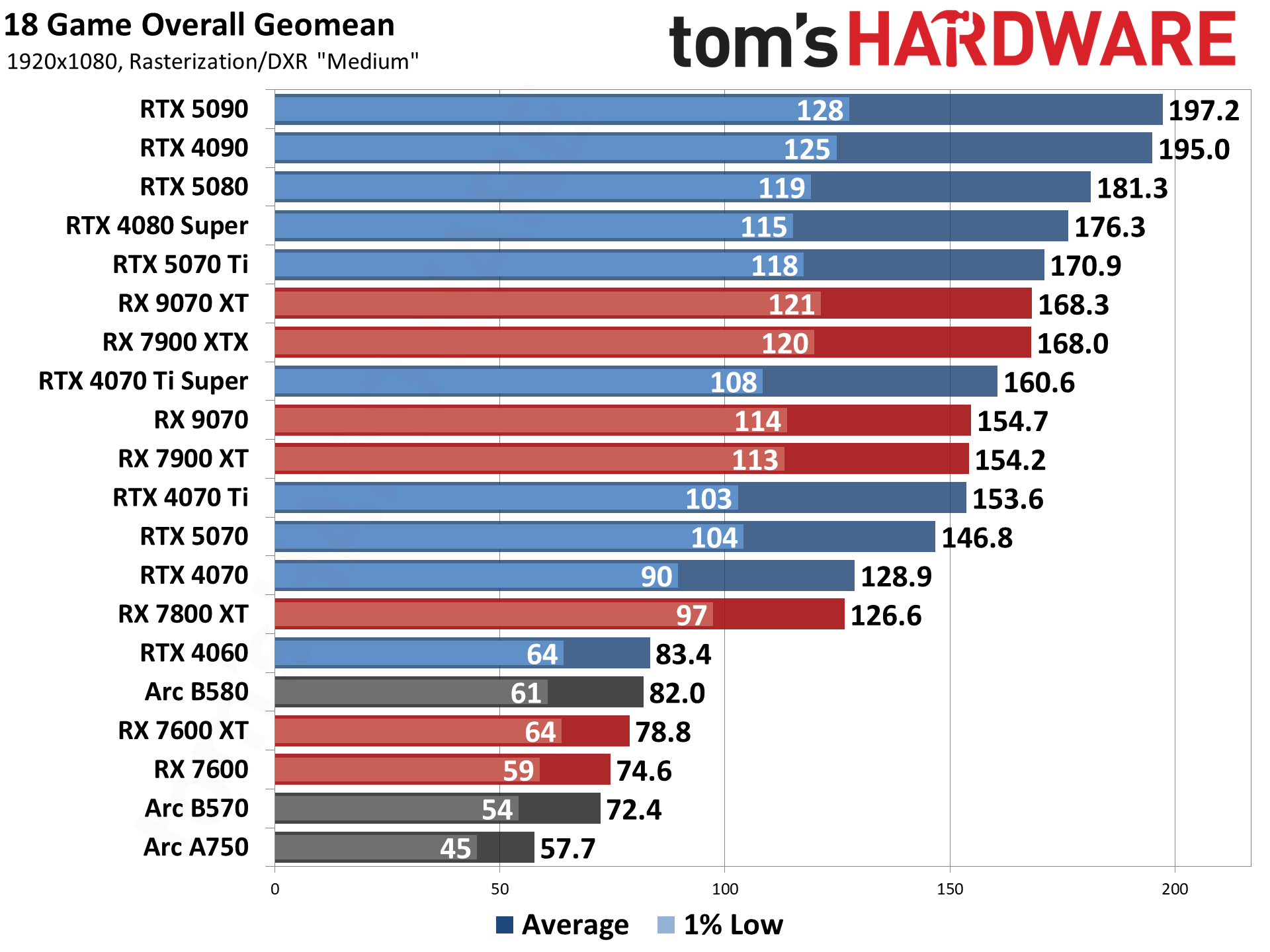
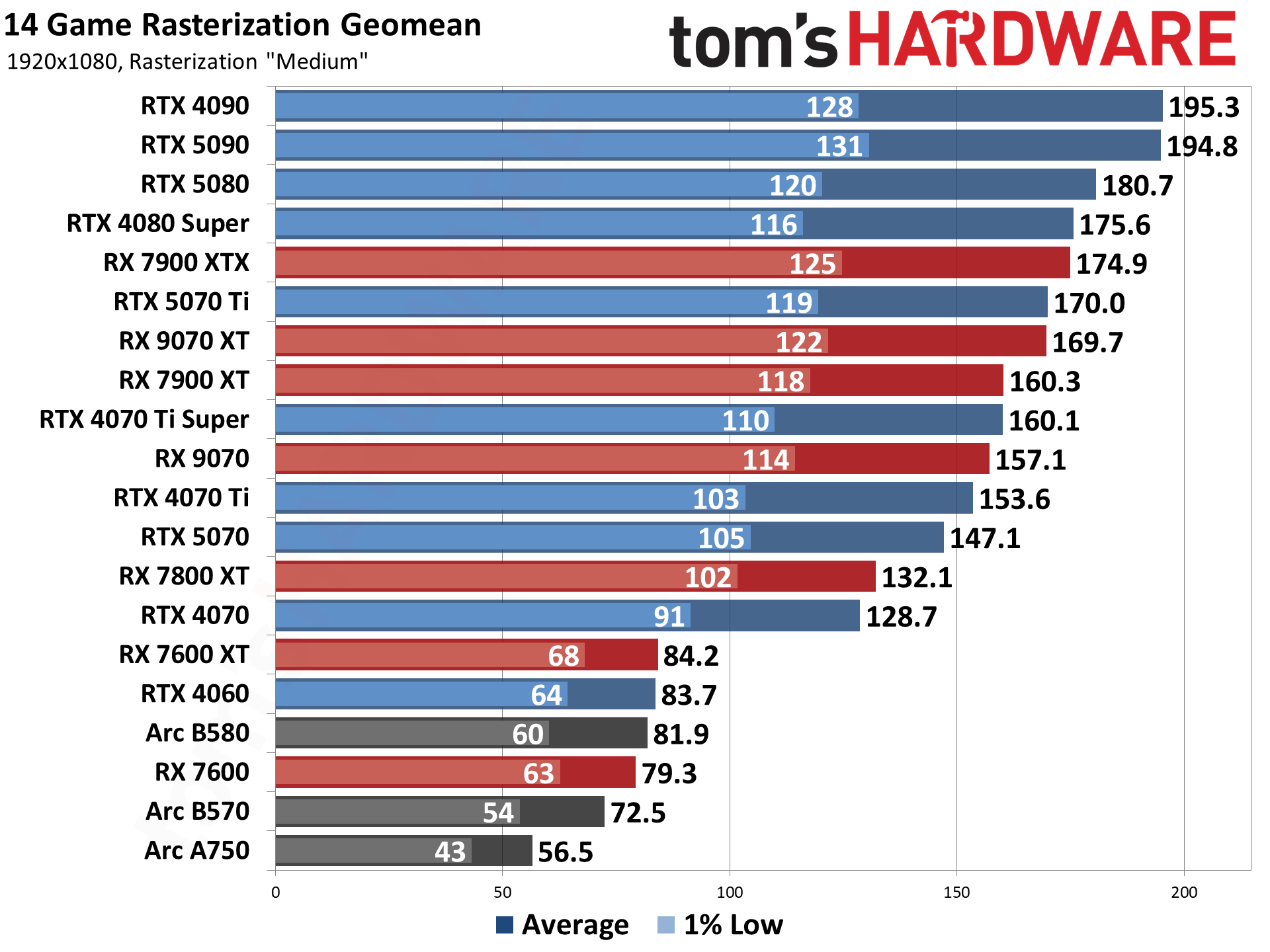
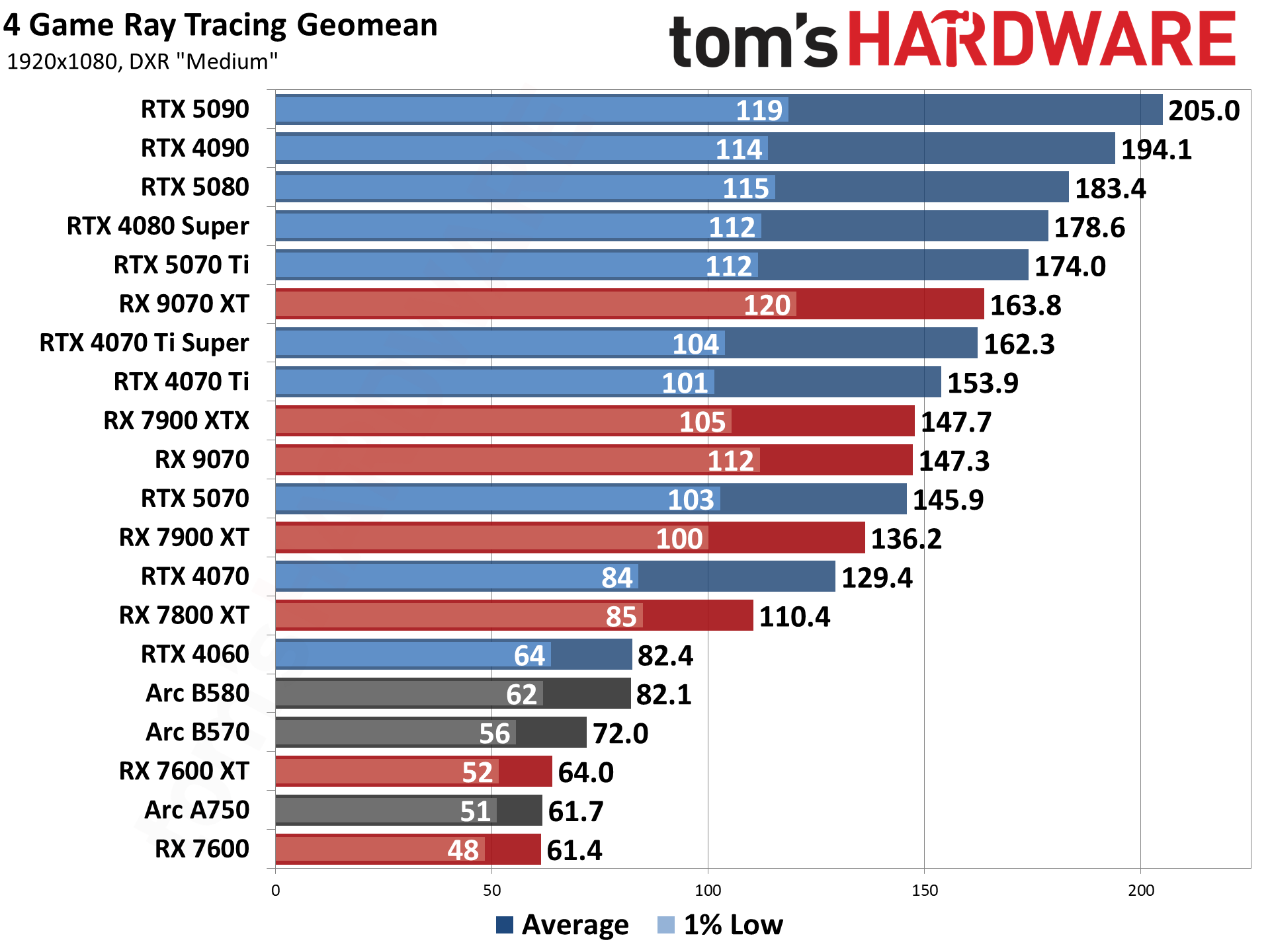
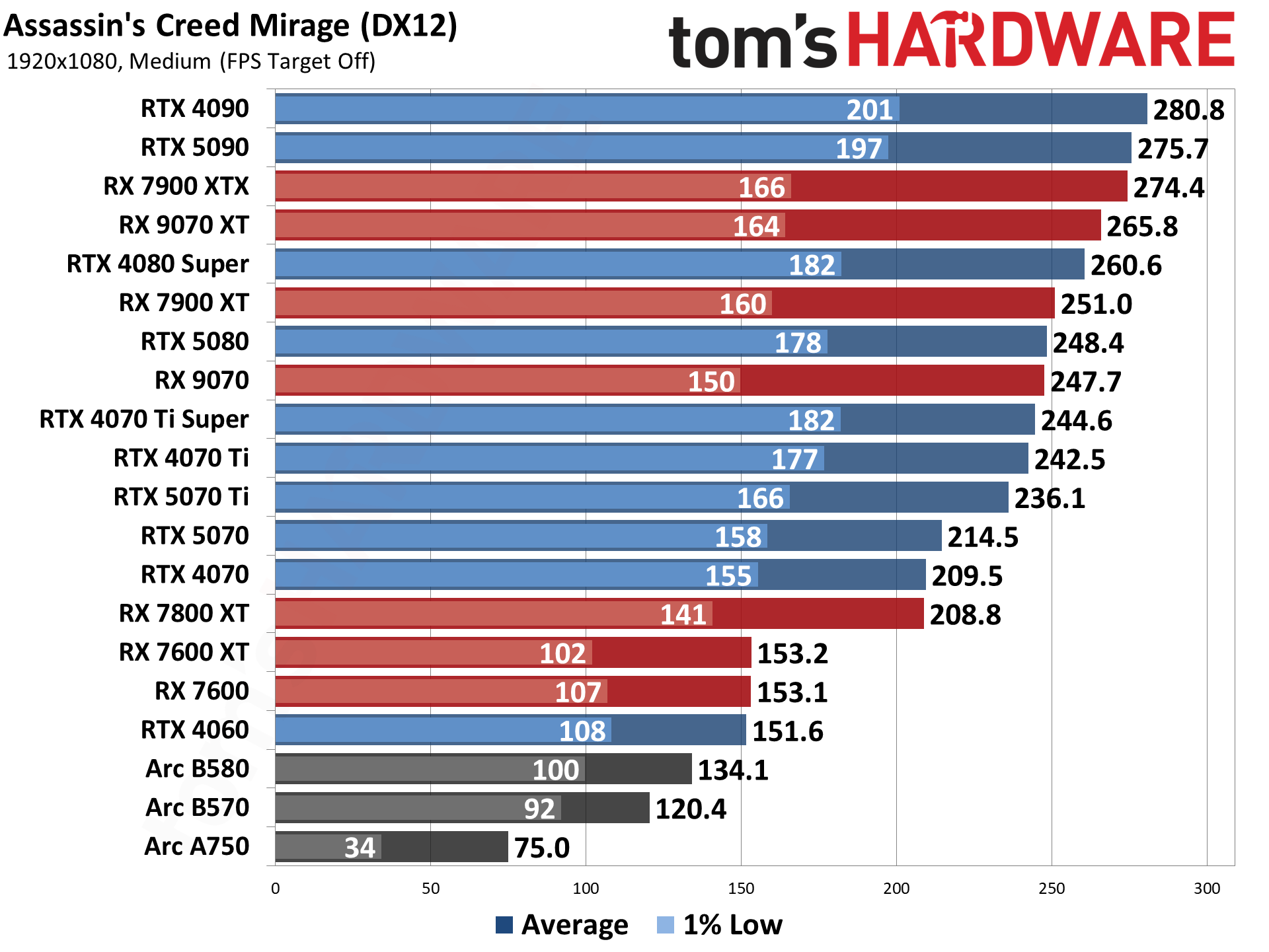
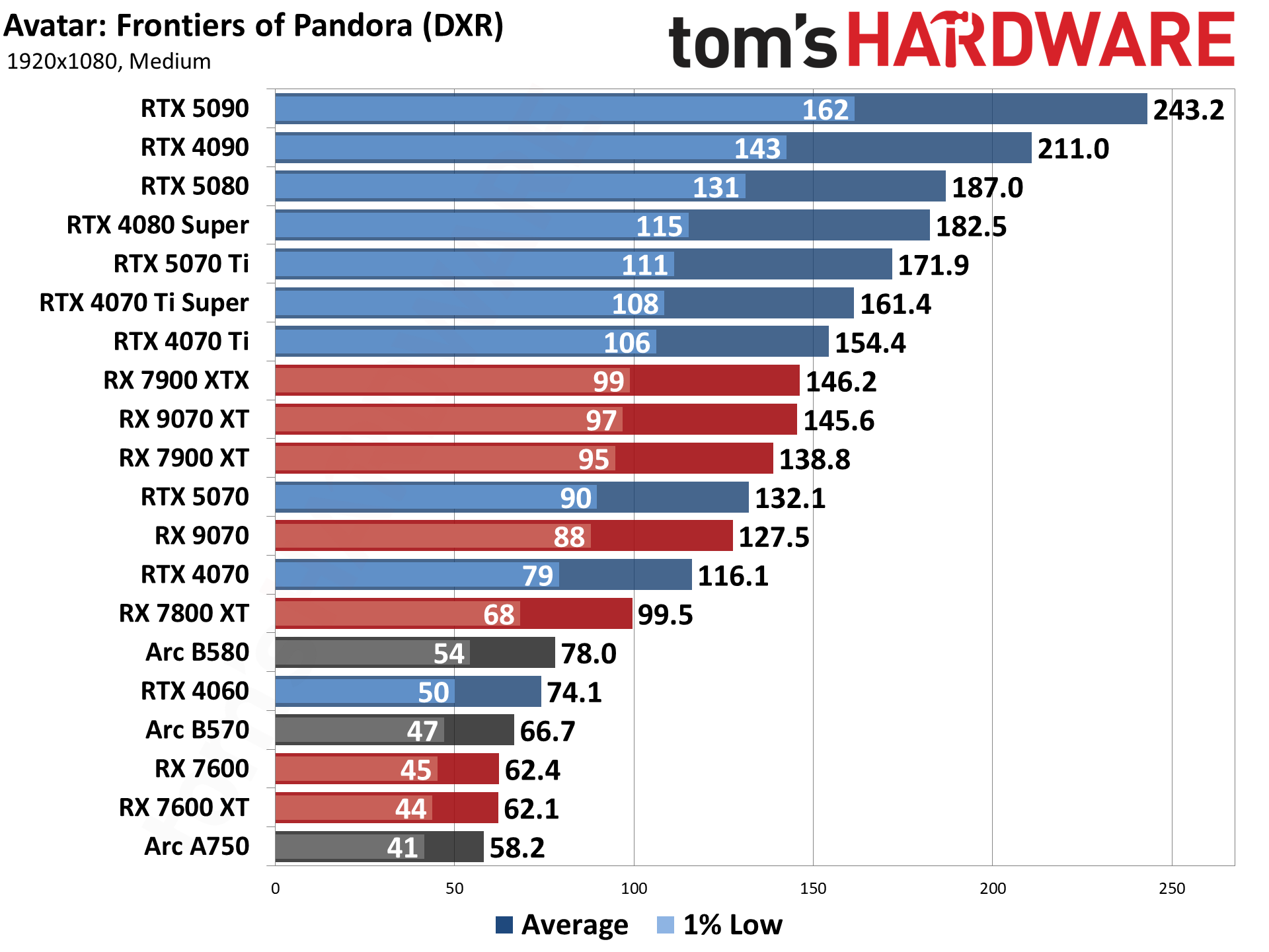
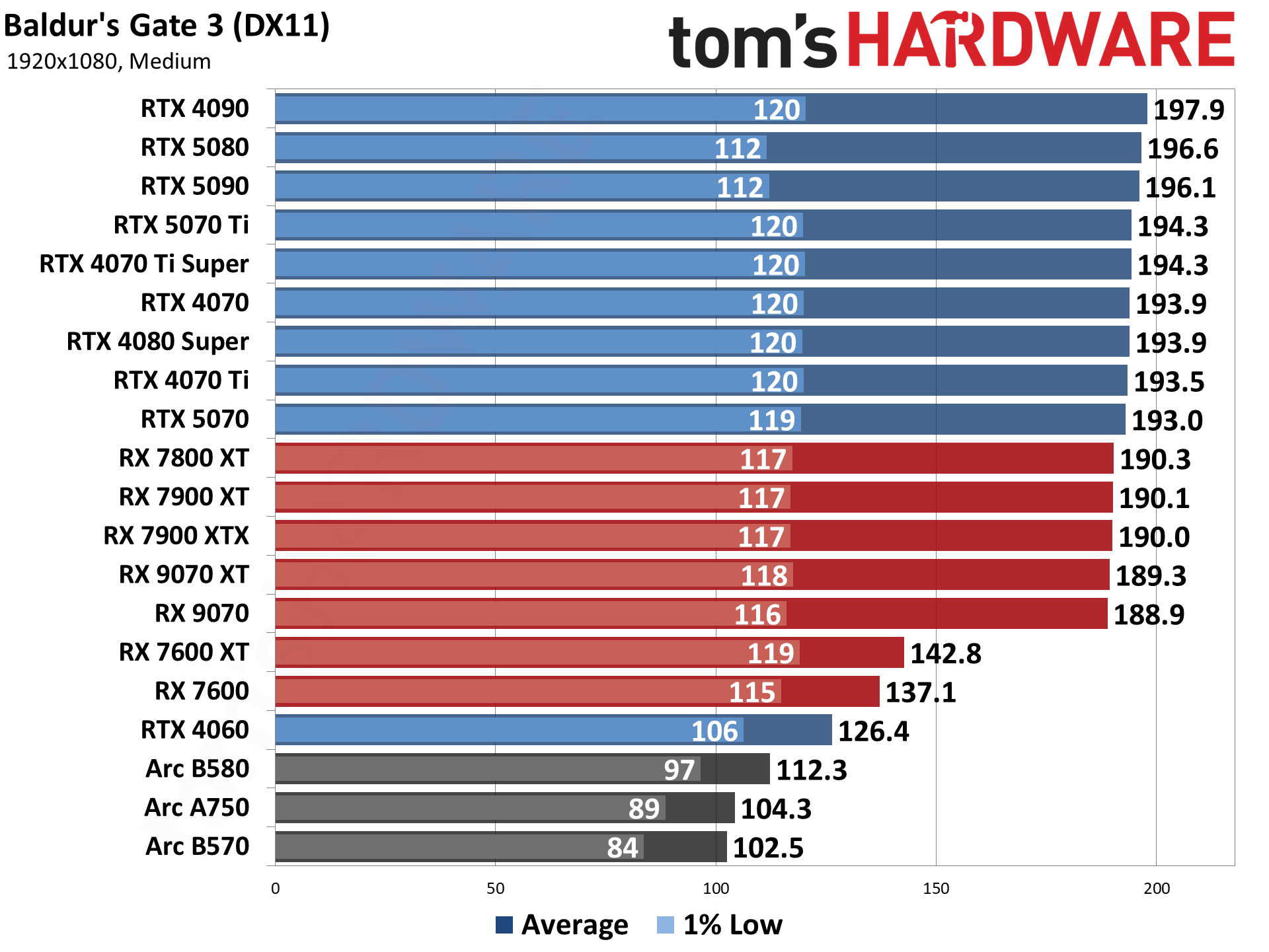
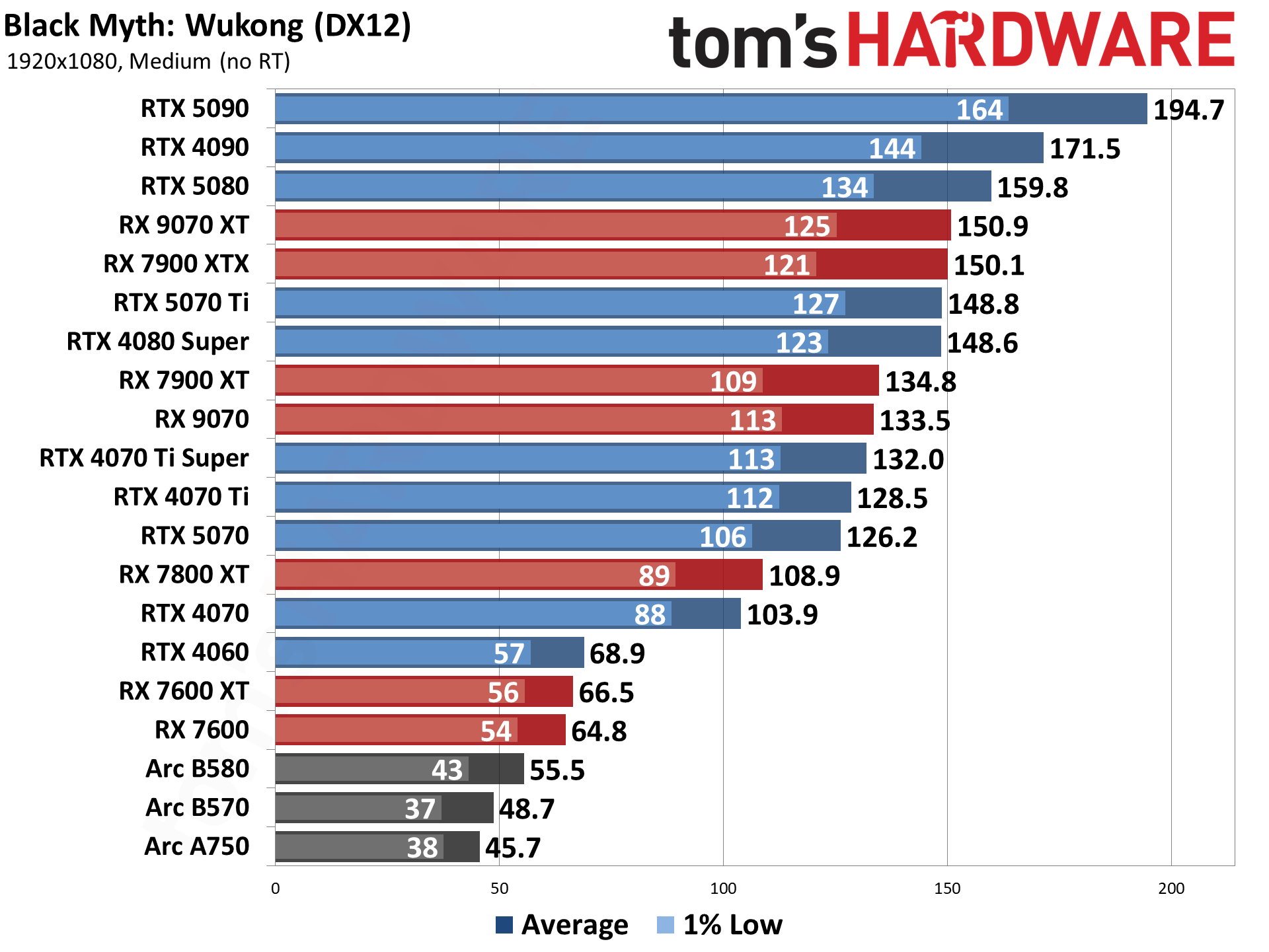
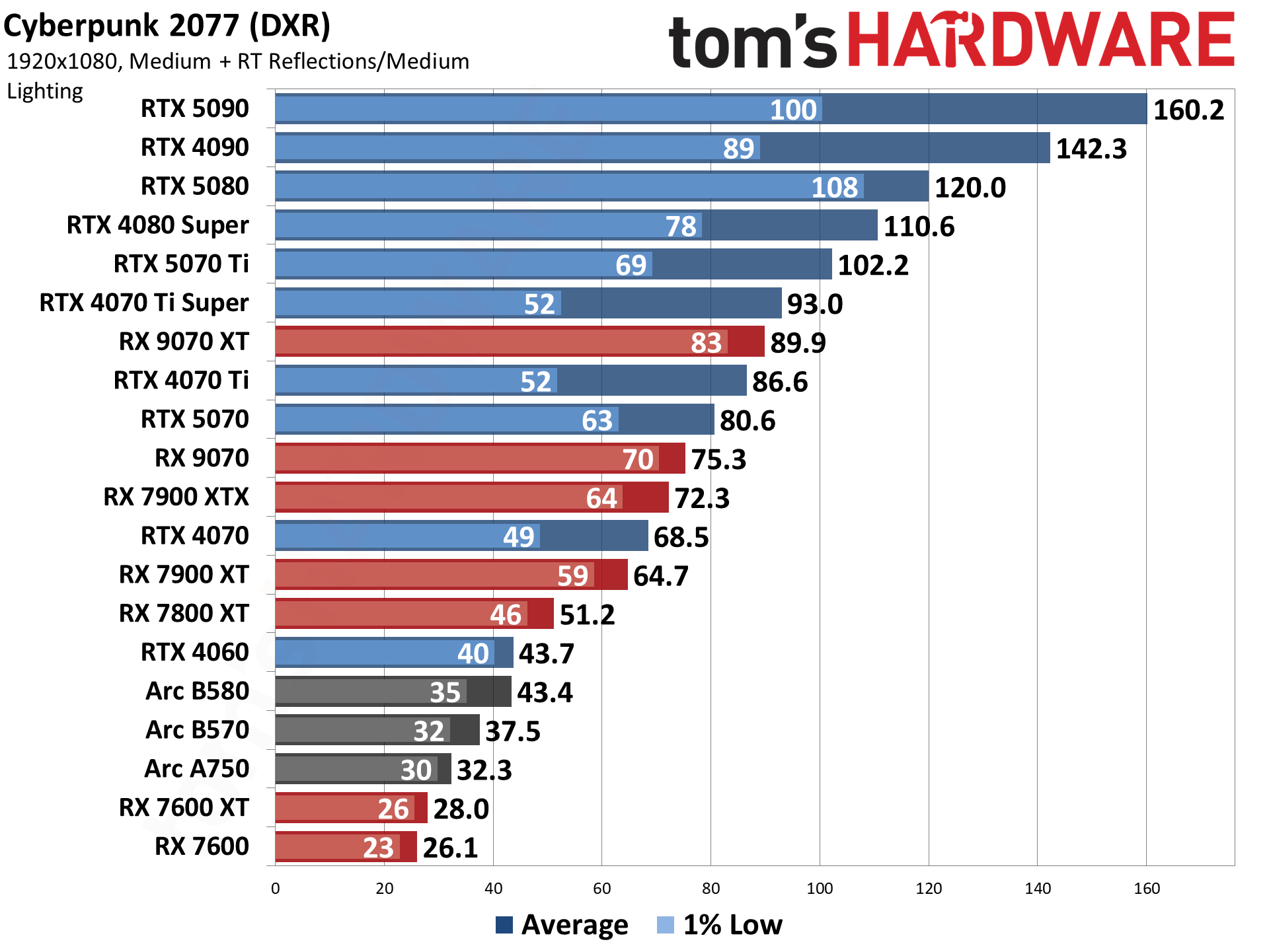
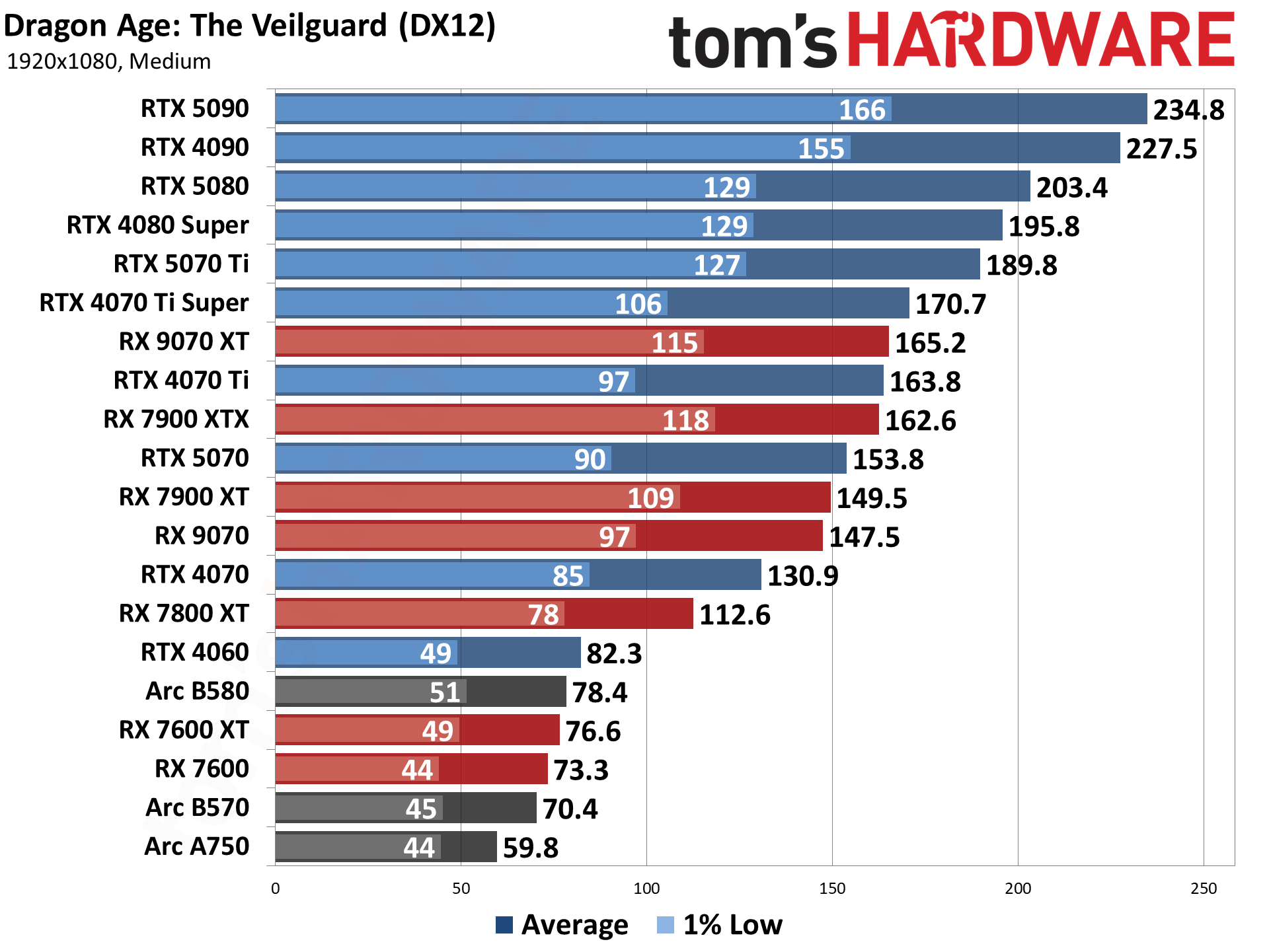
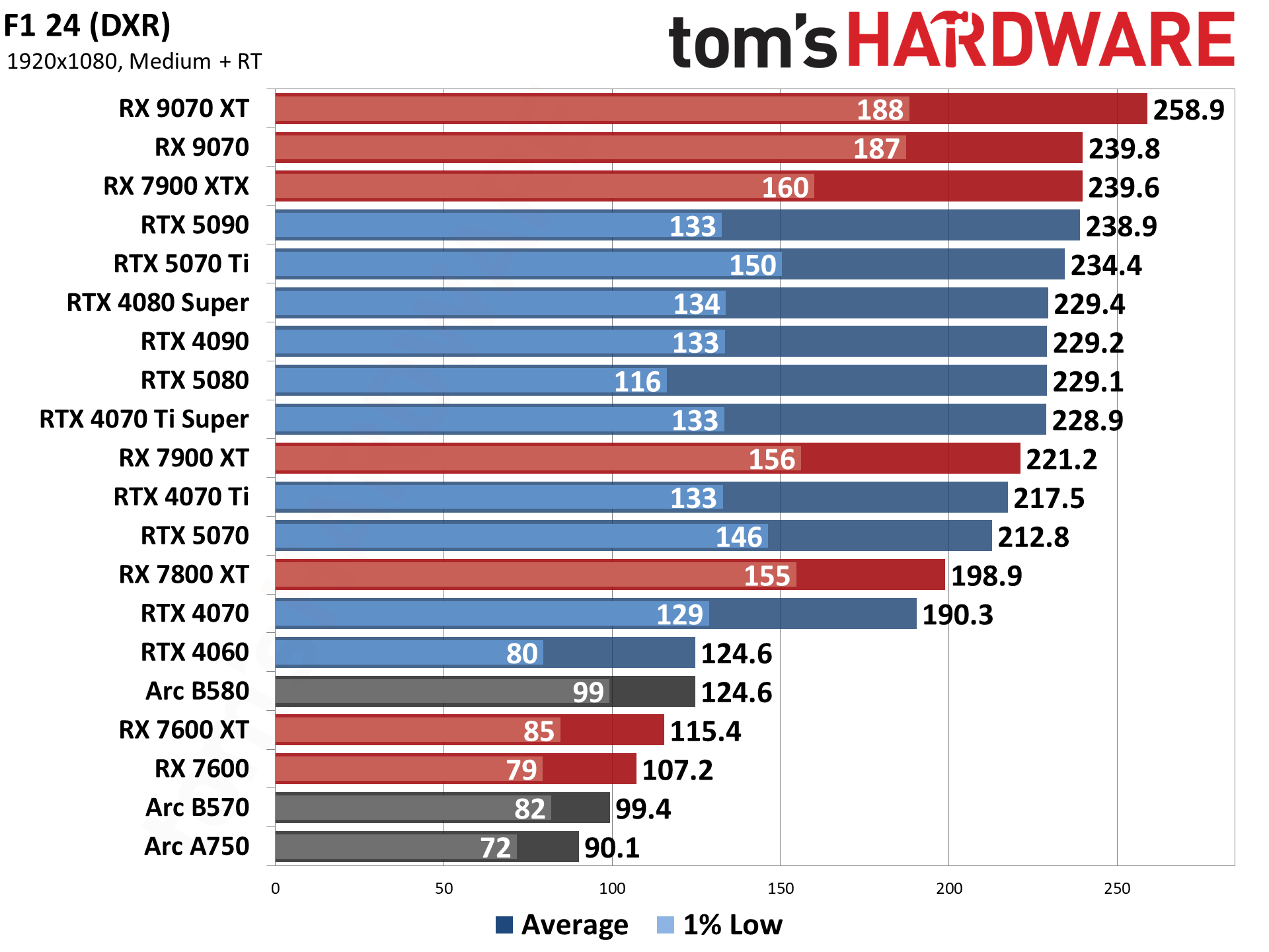
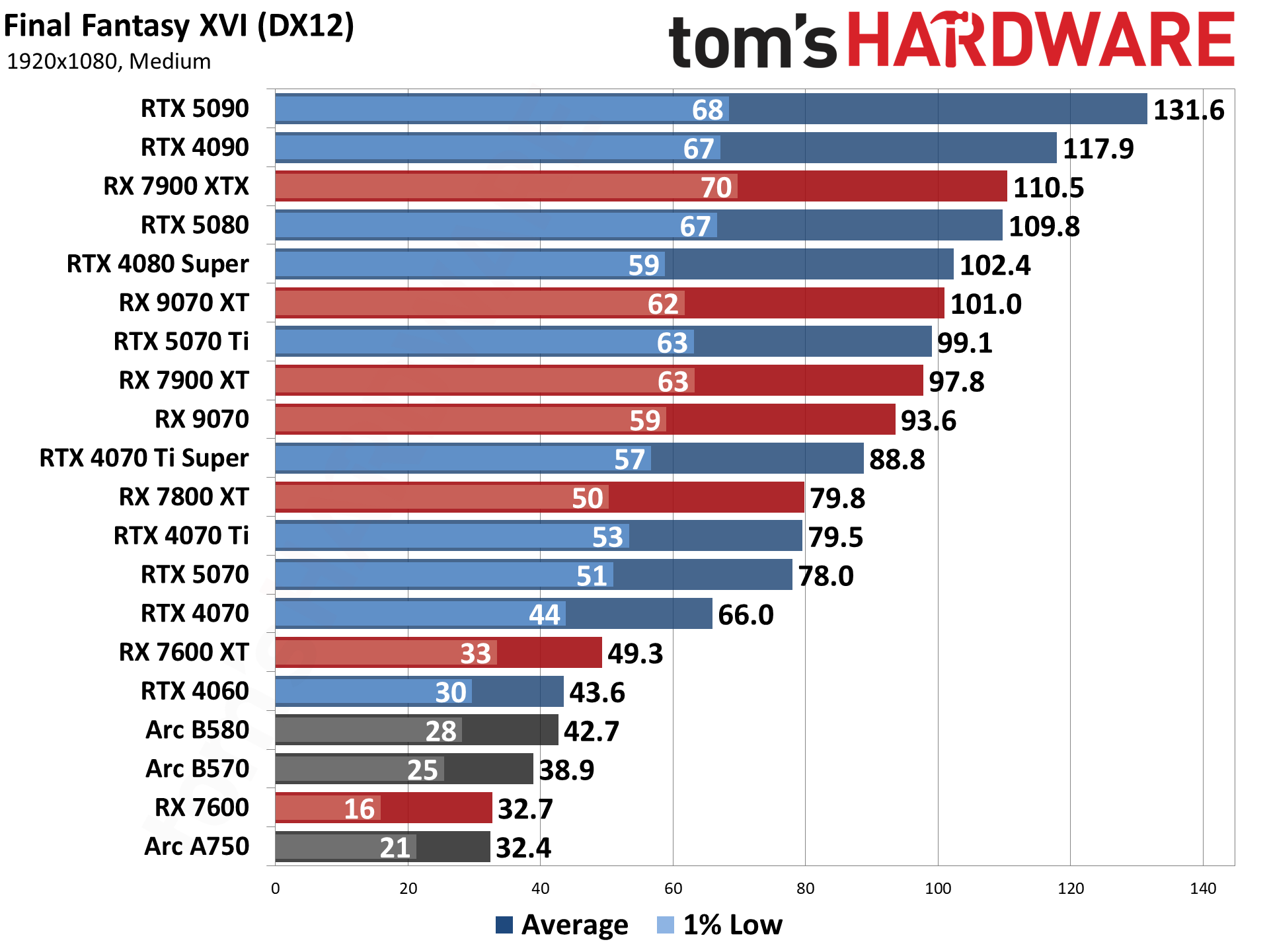
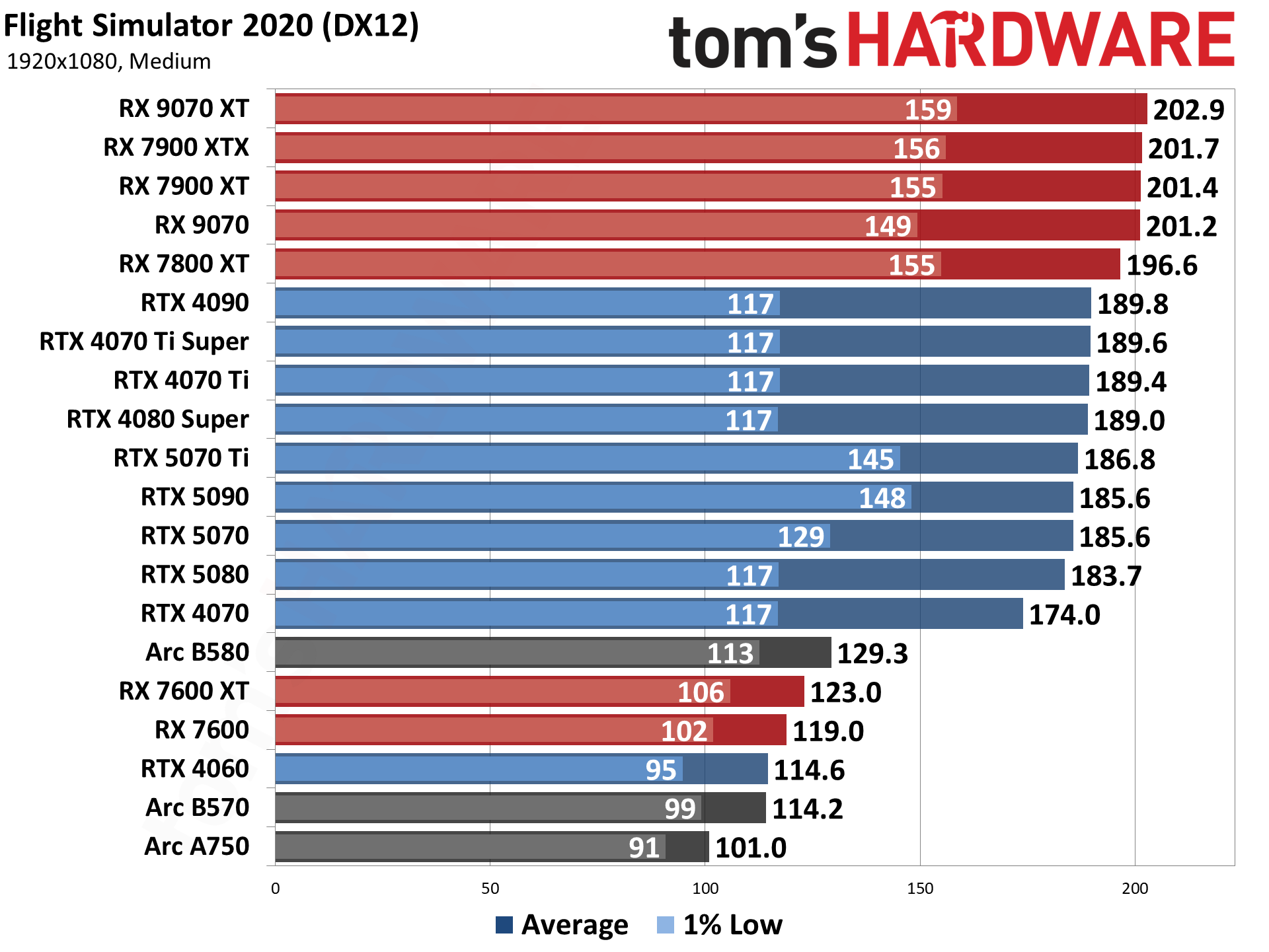
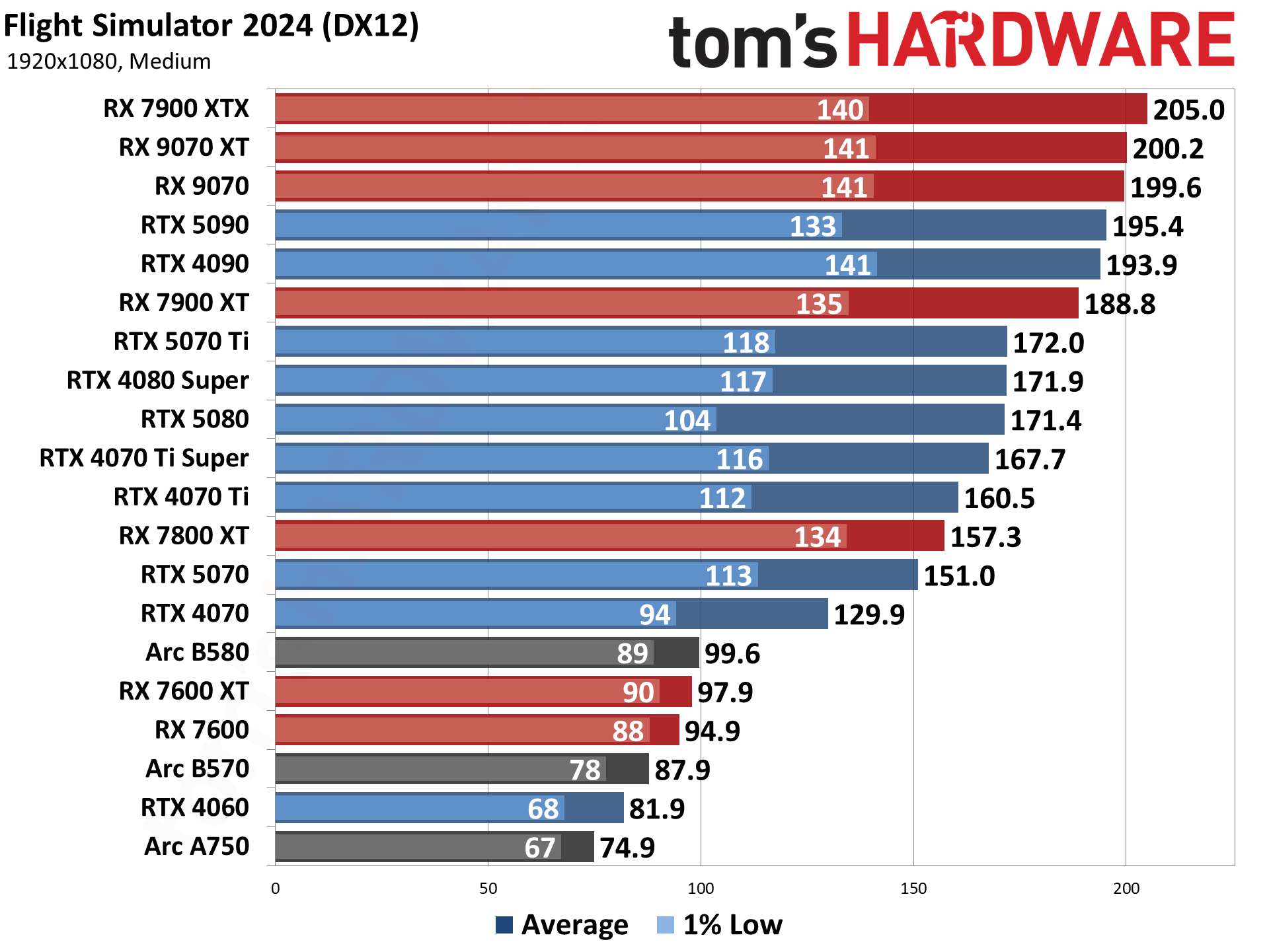
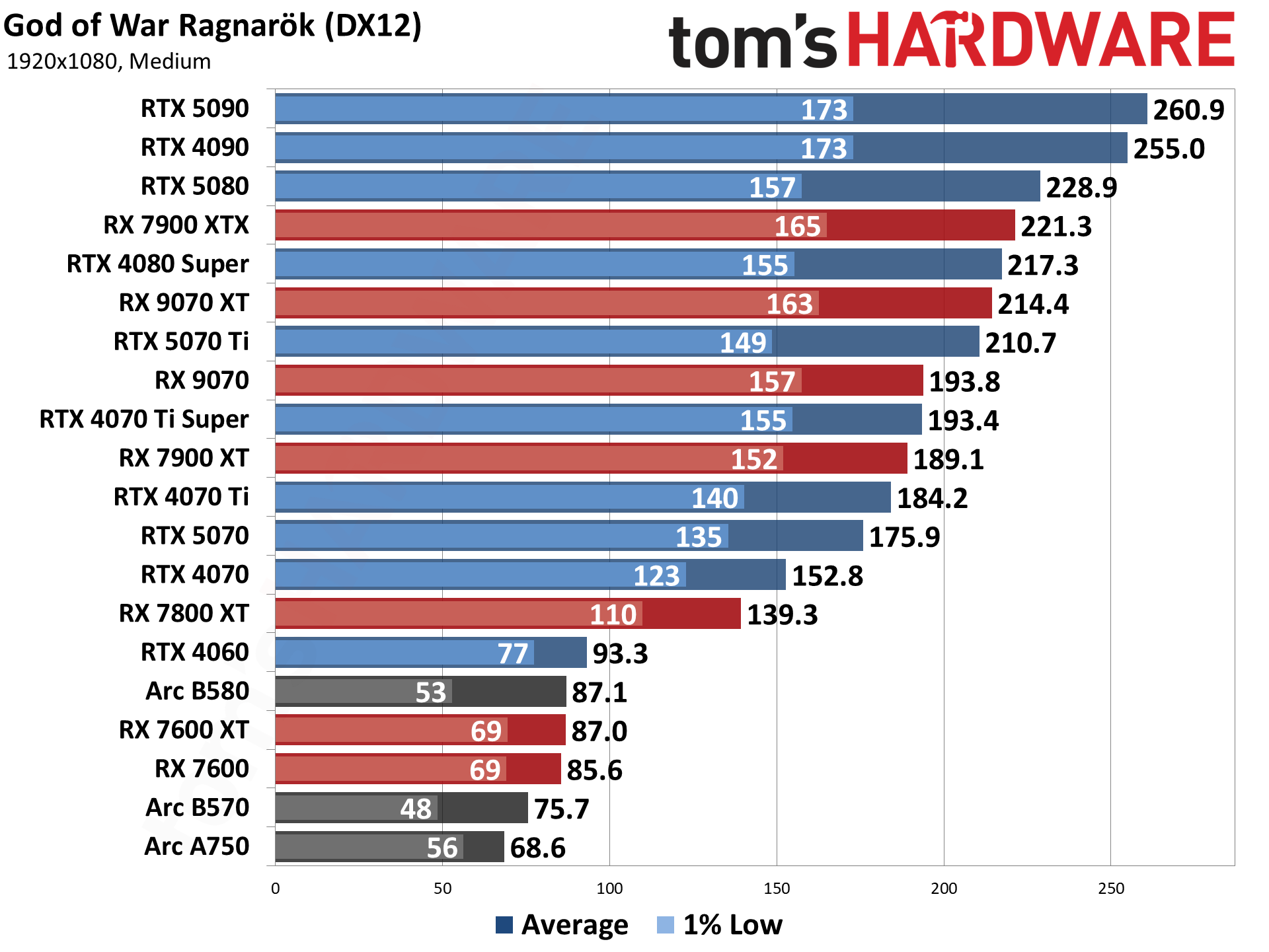
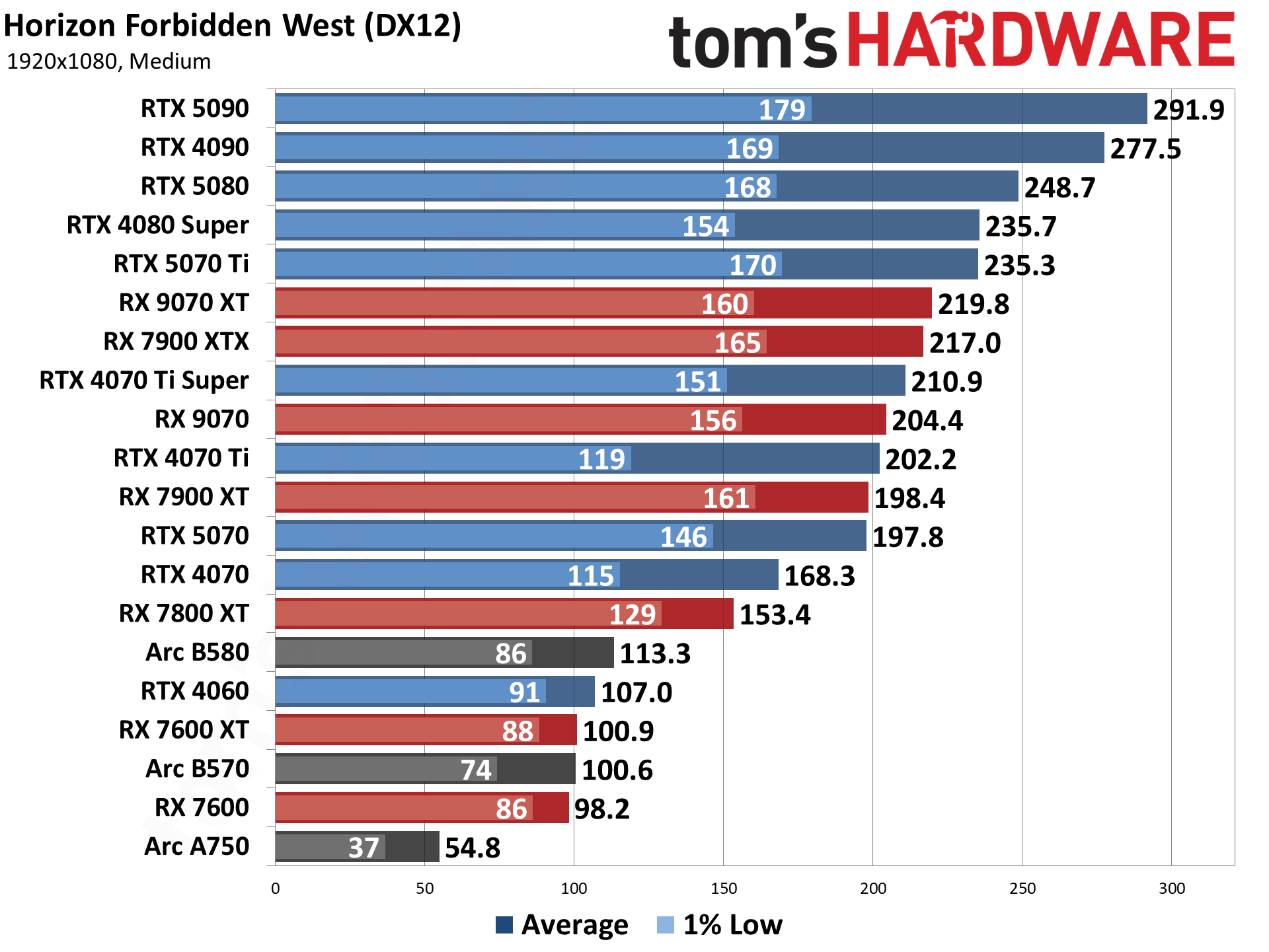
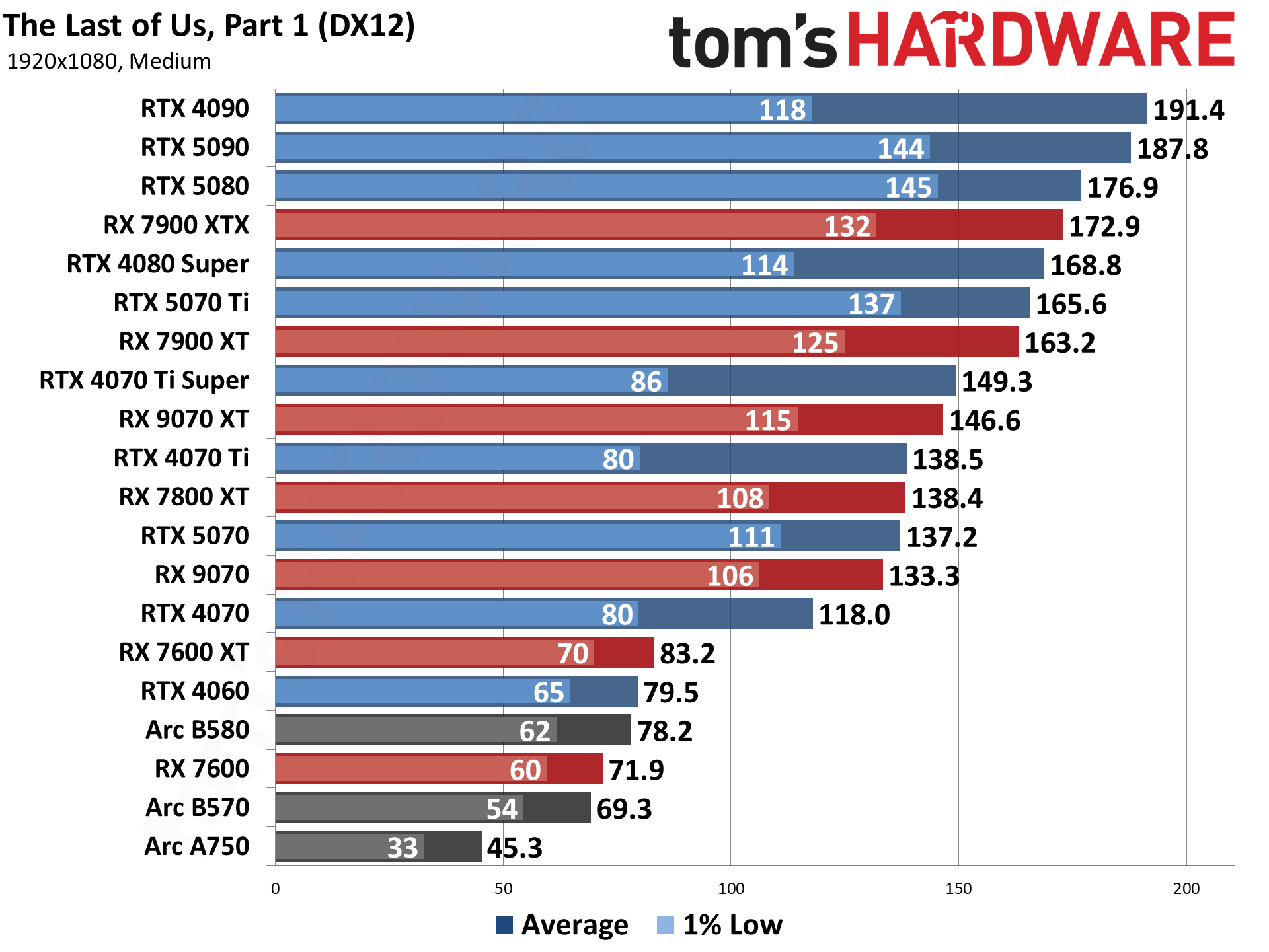
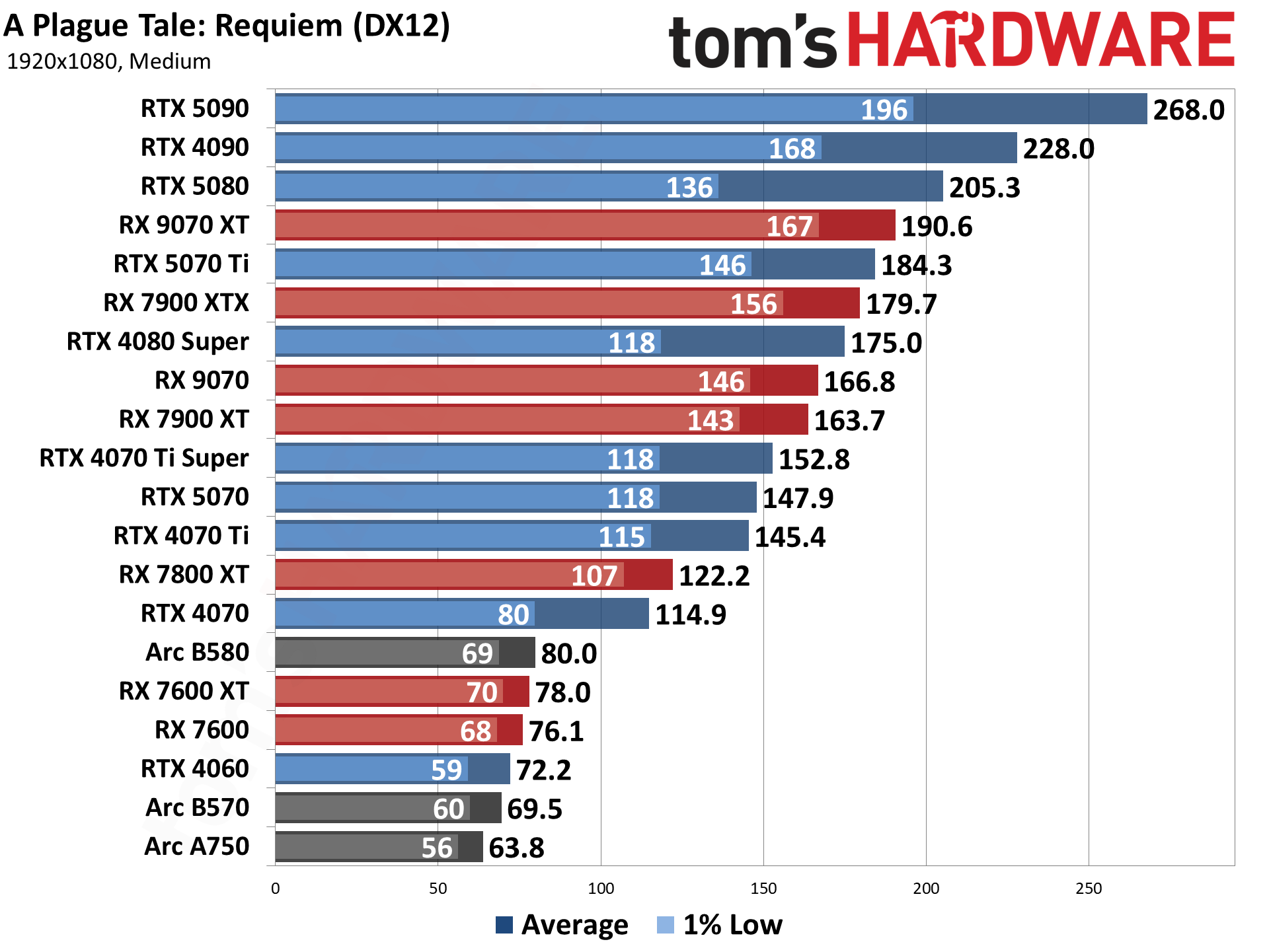
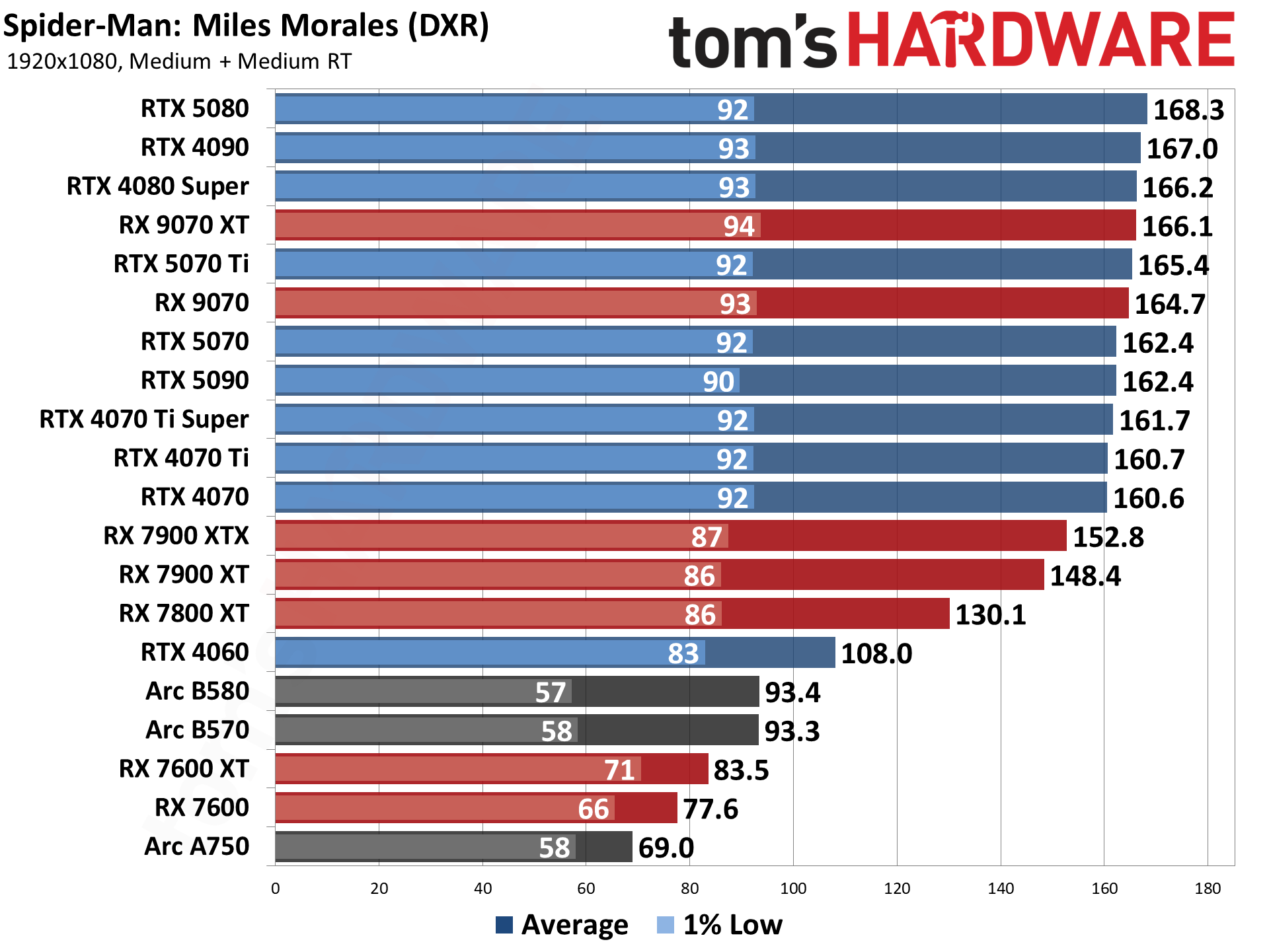
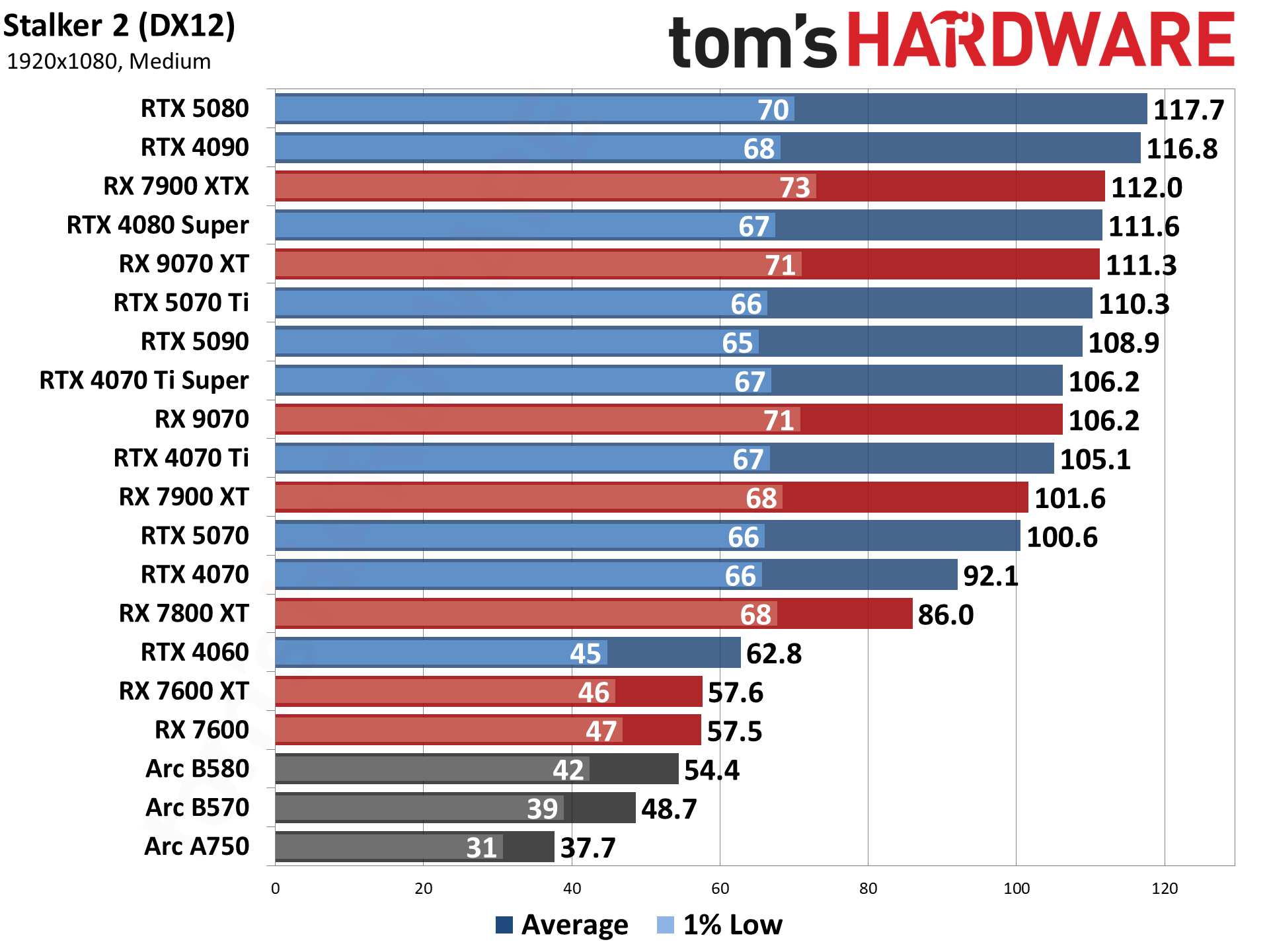
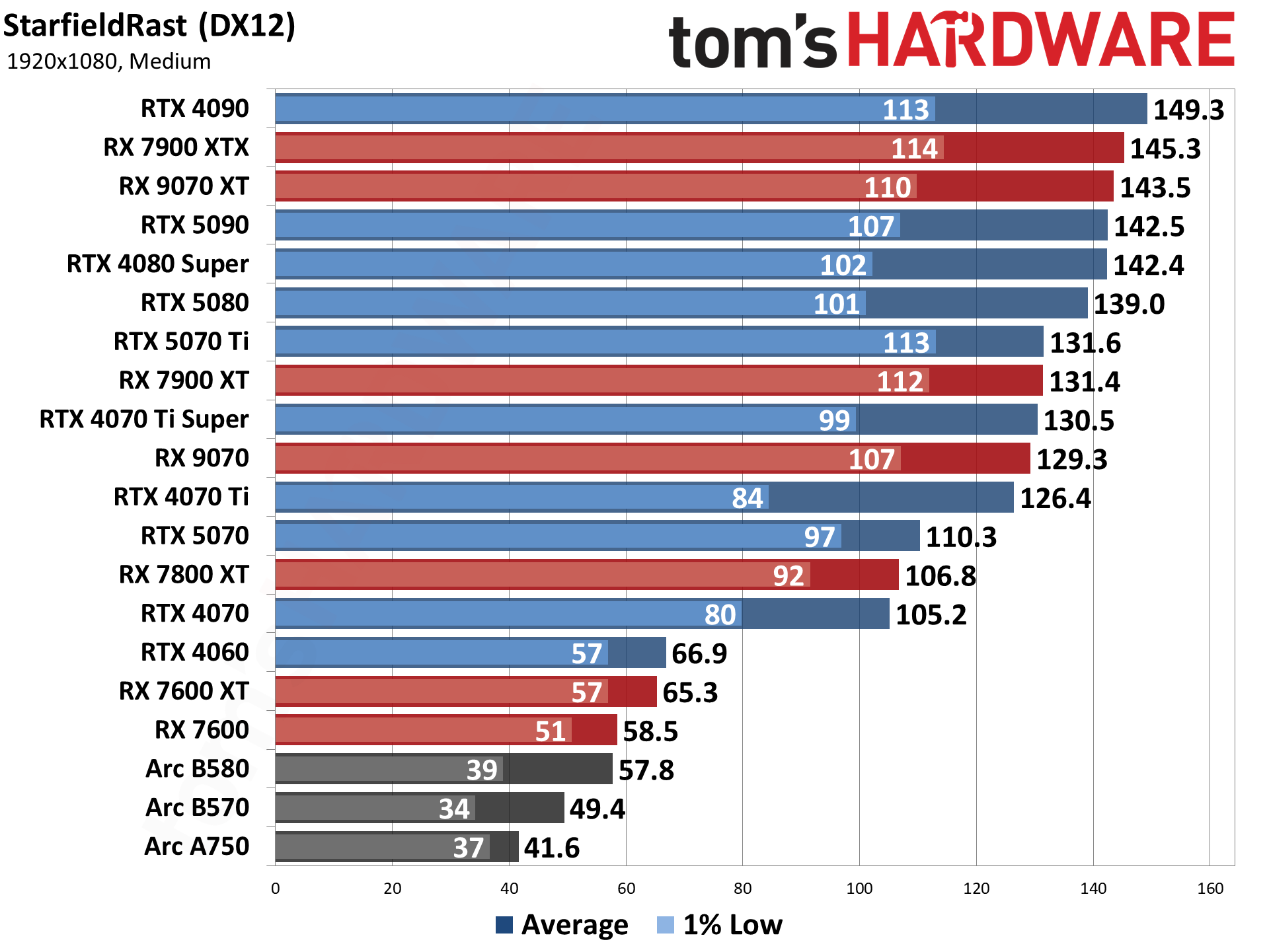
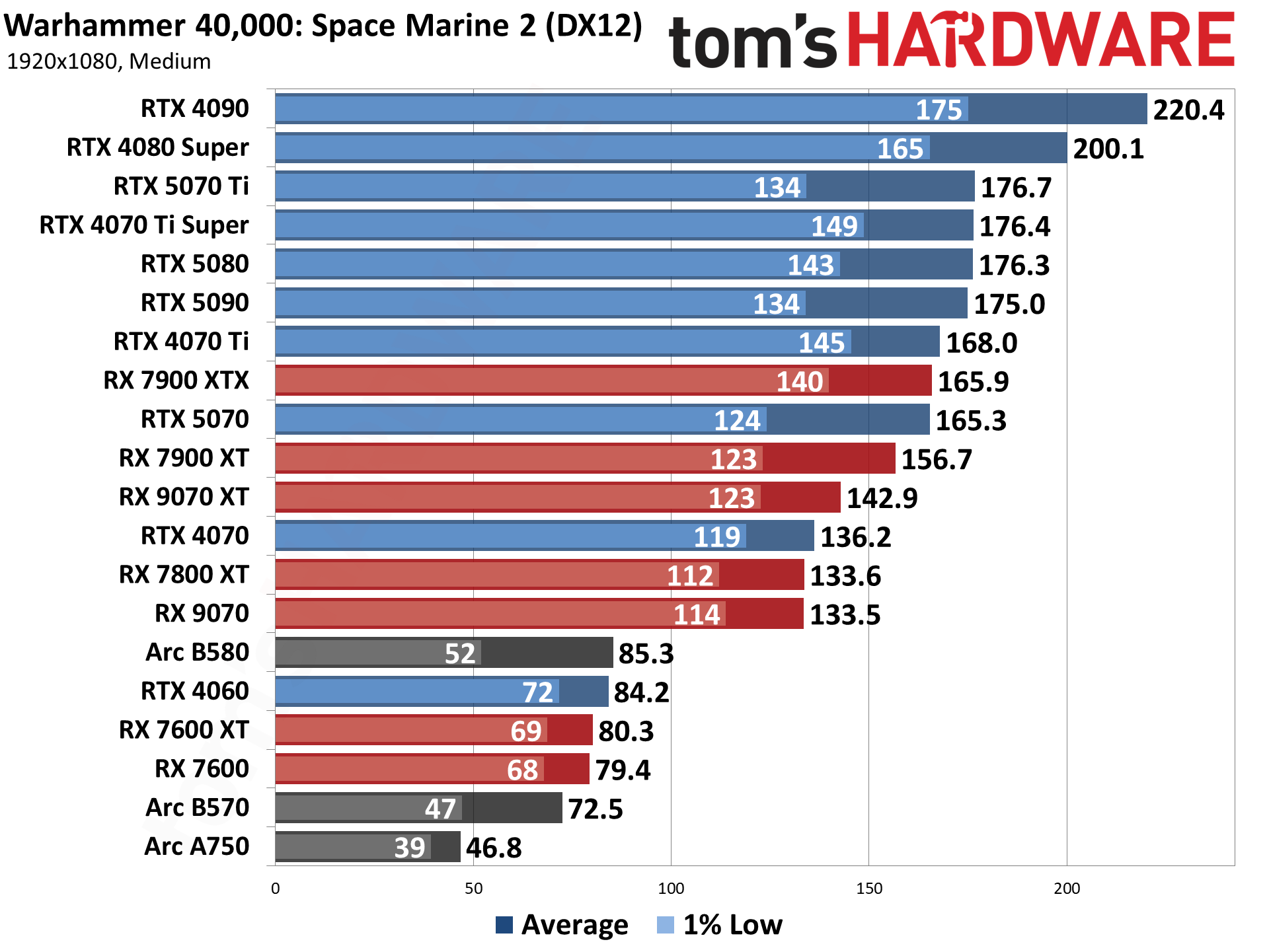
Best Graphics Cards — 1080p Ultra
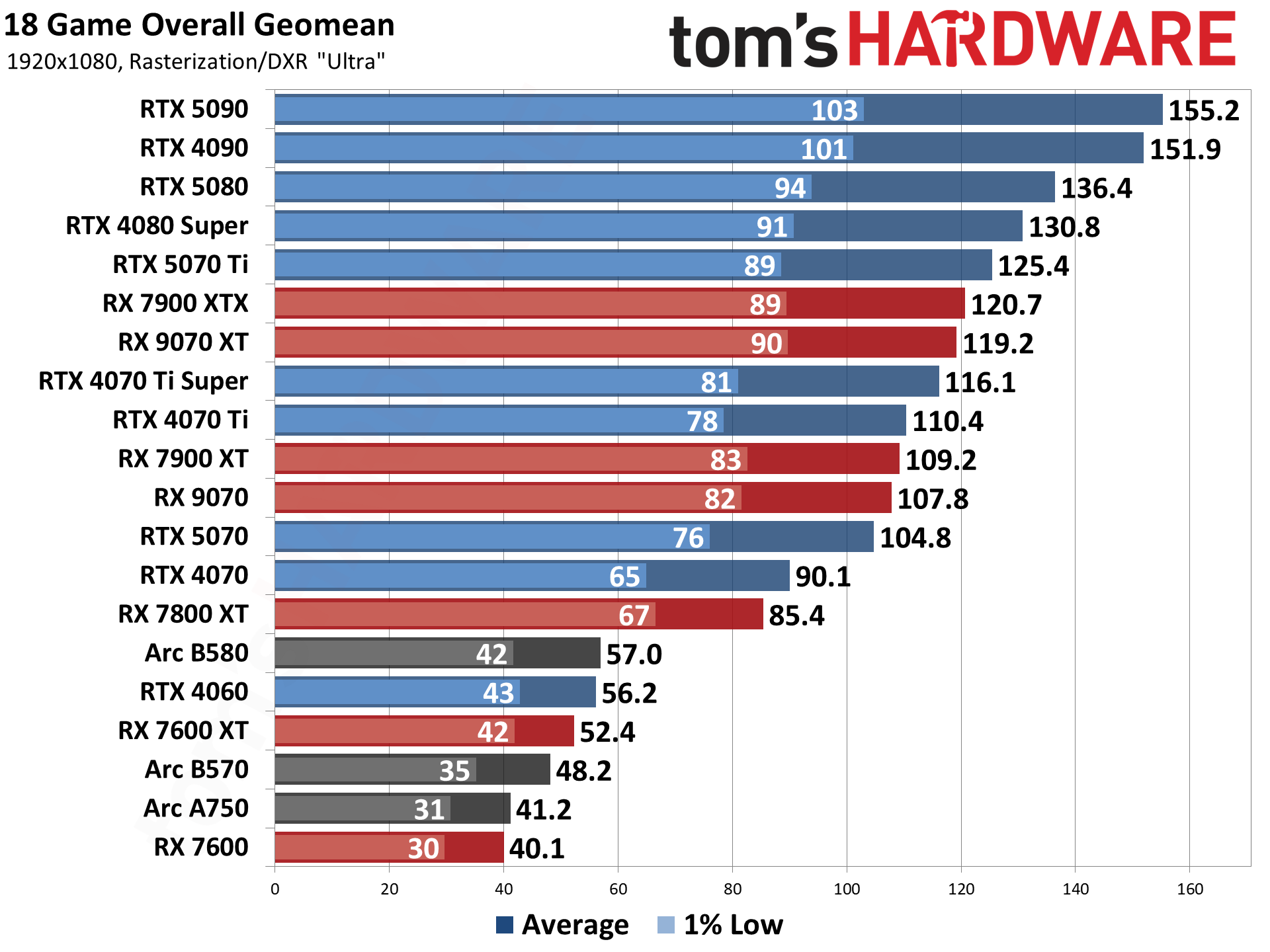
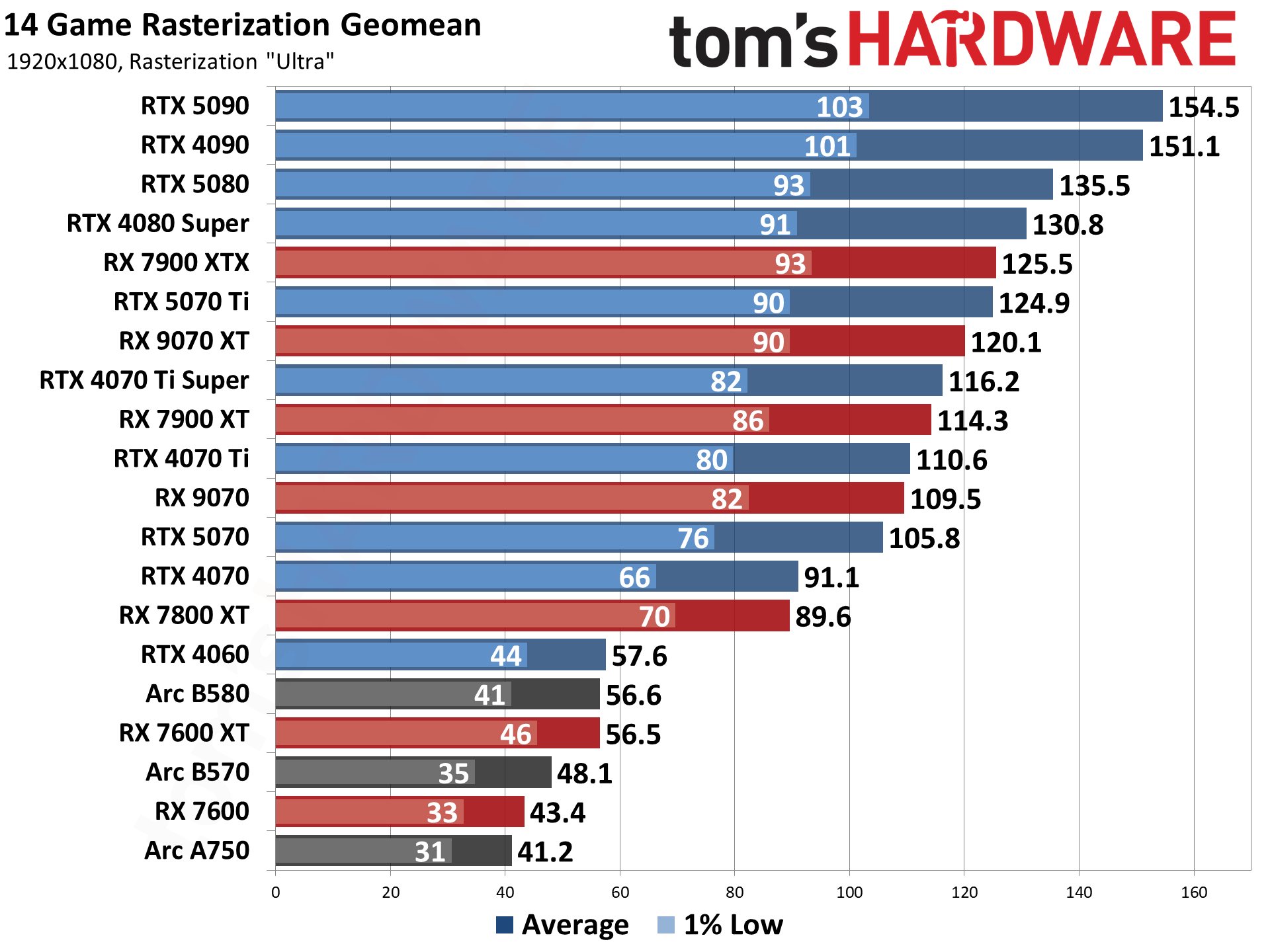
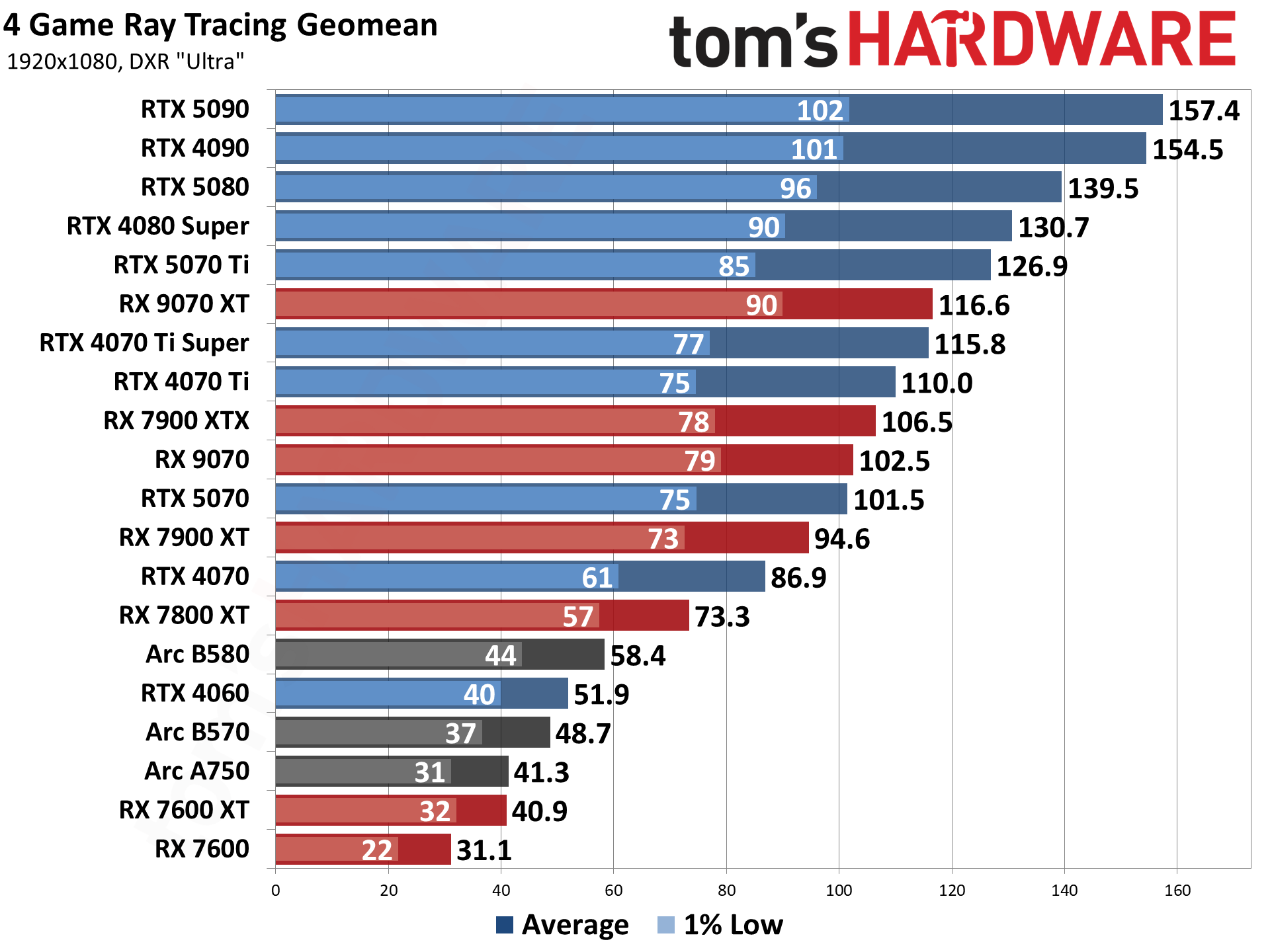
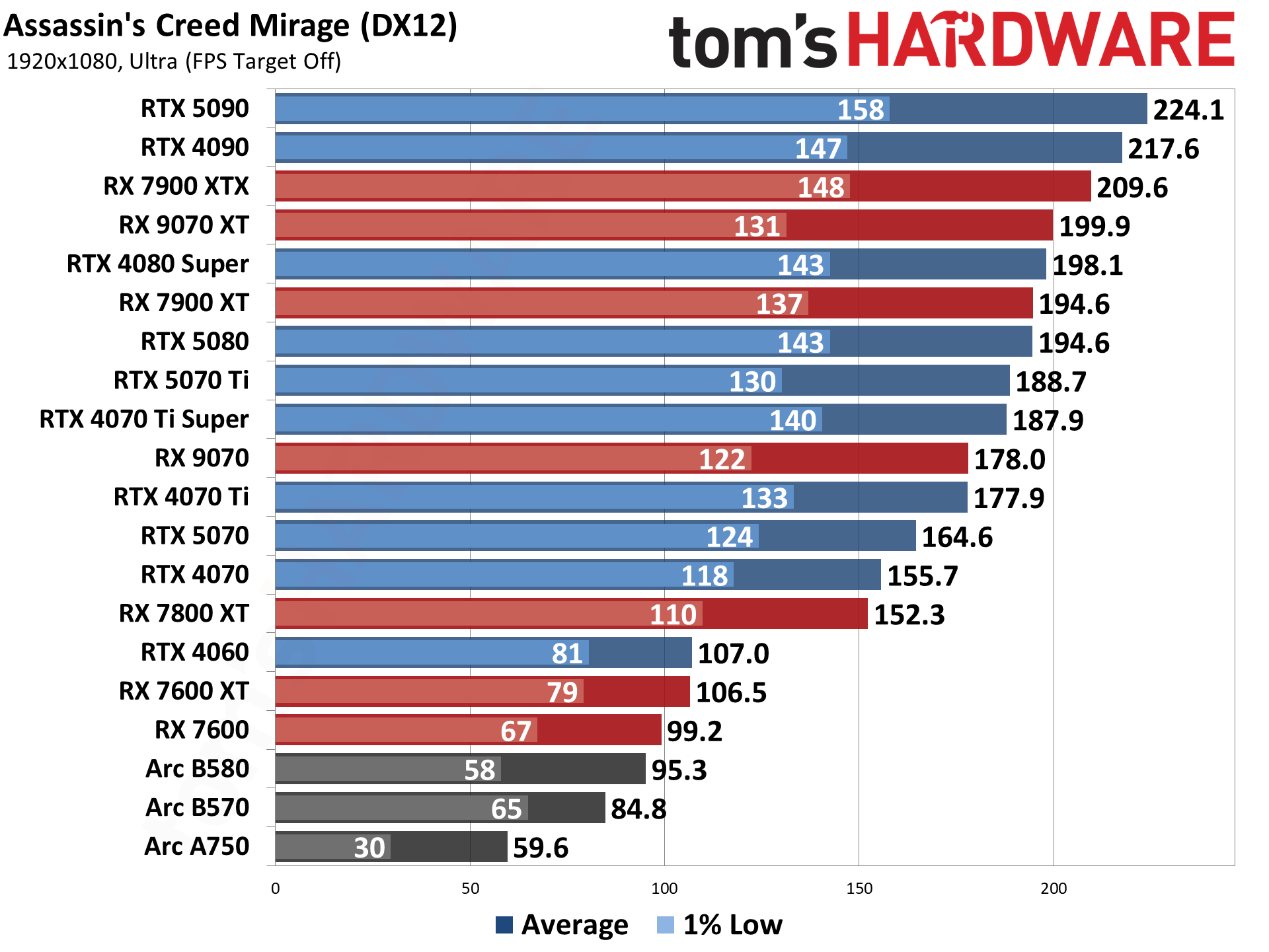
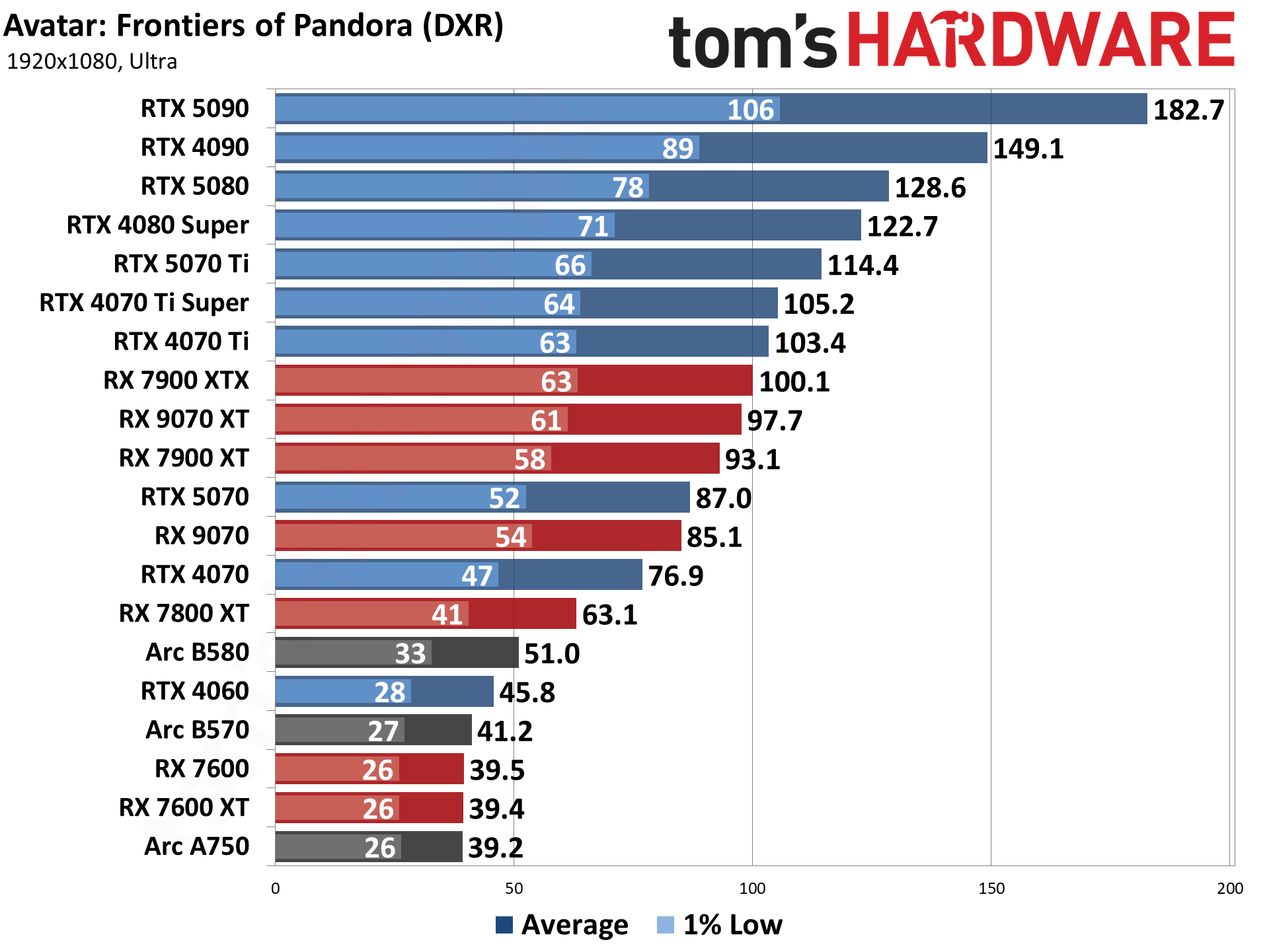
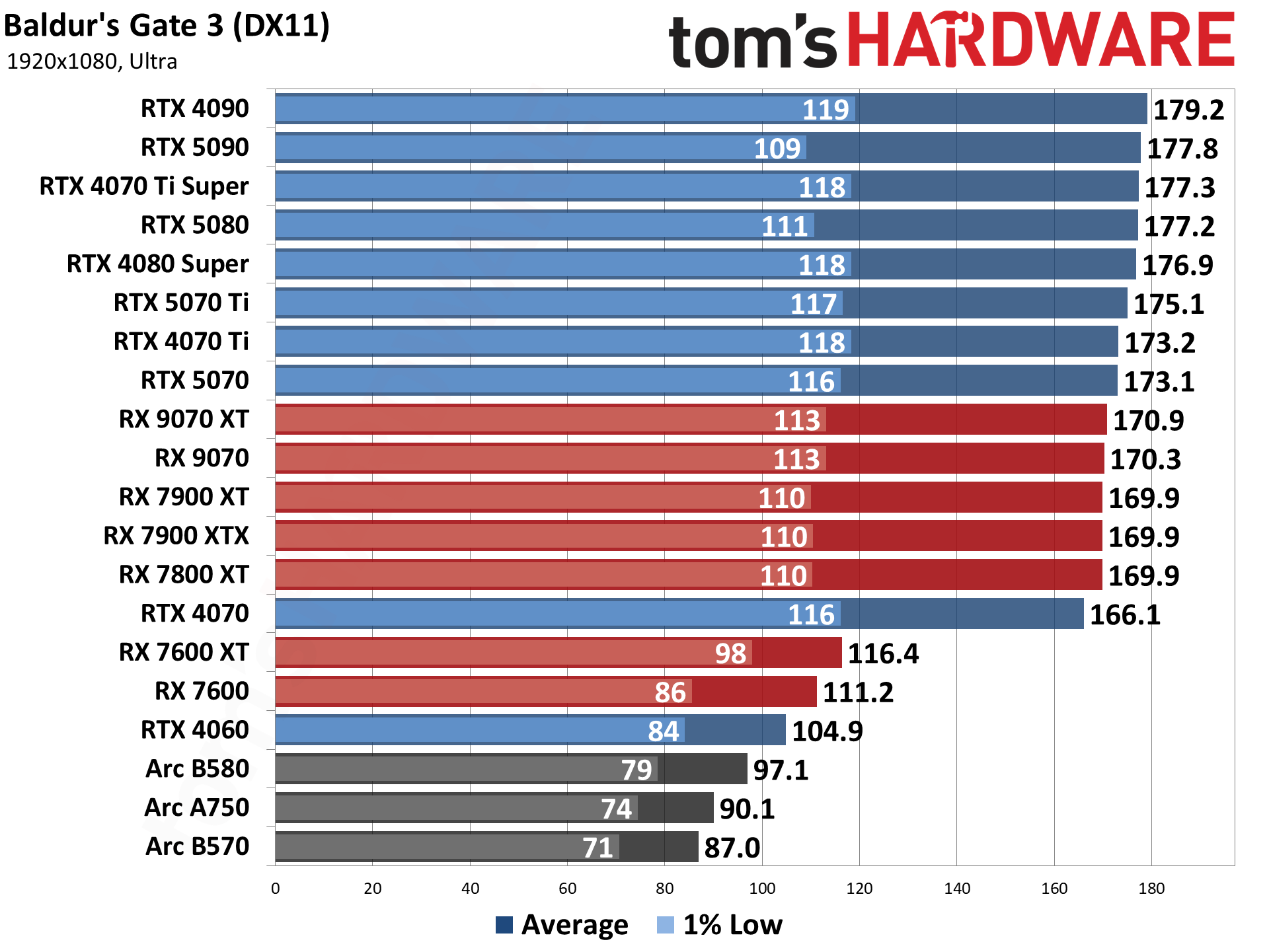
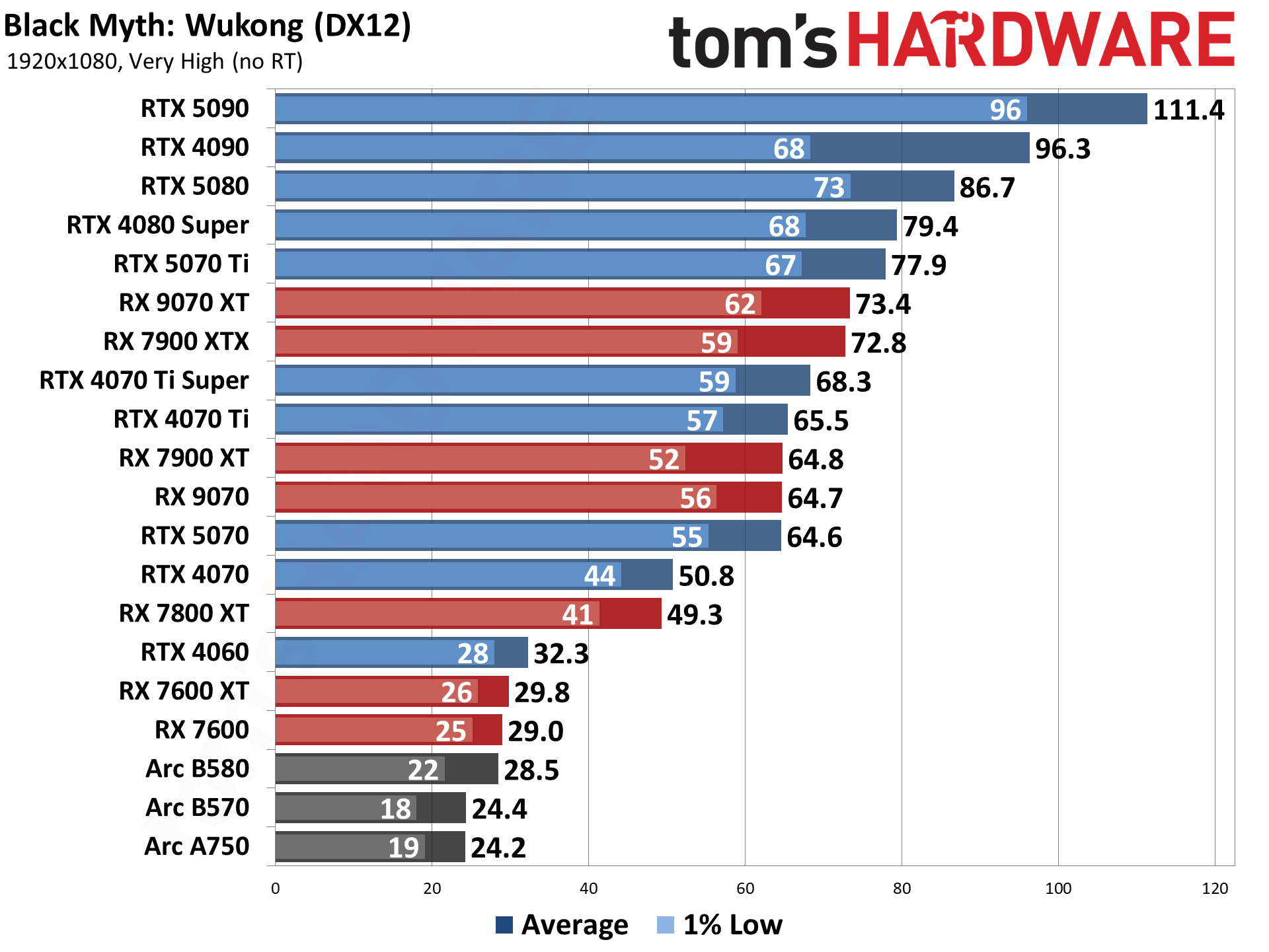
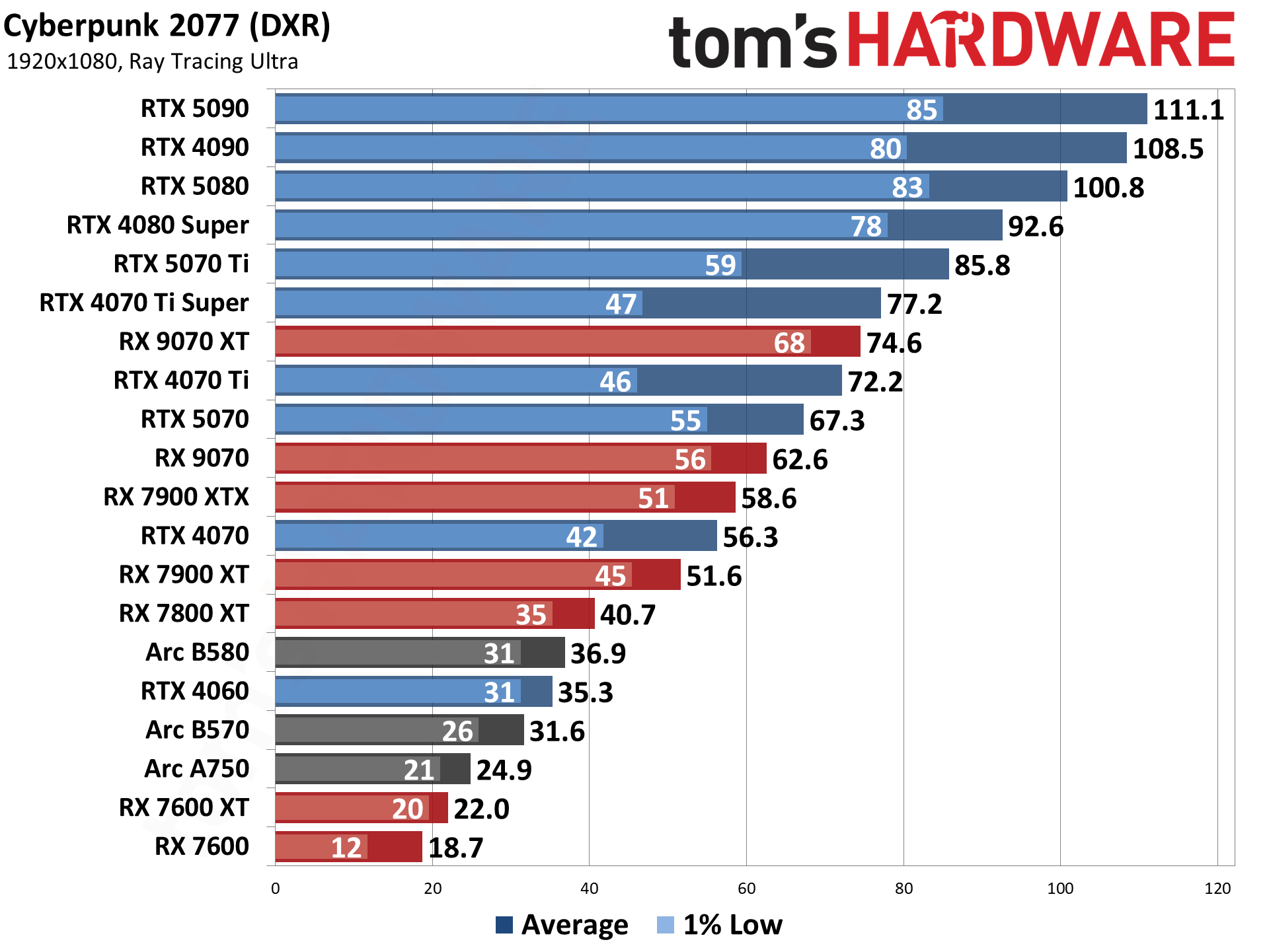
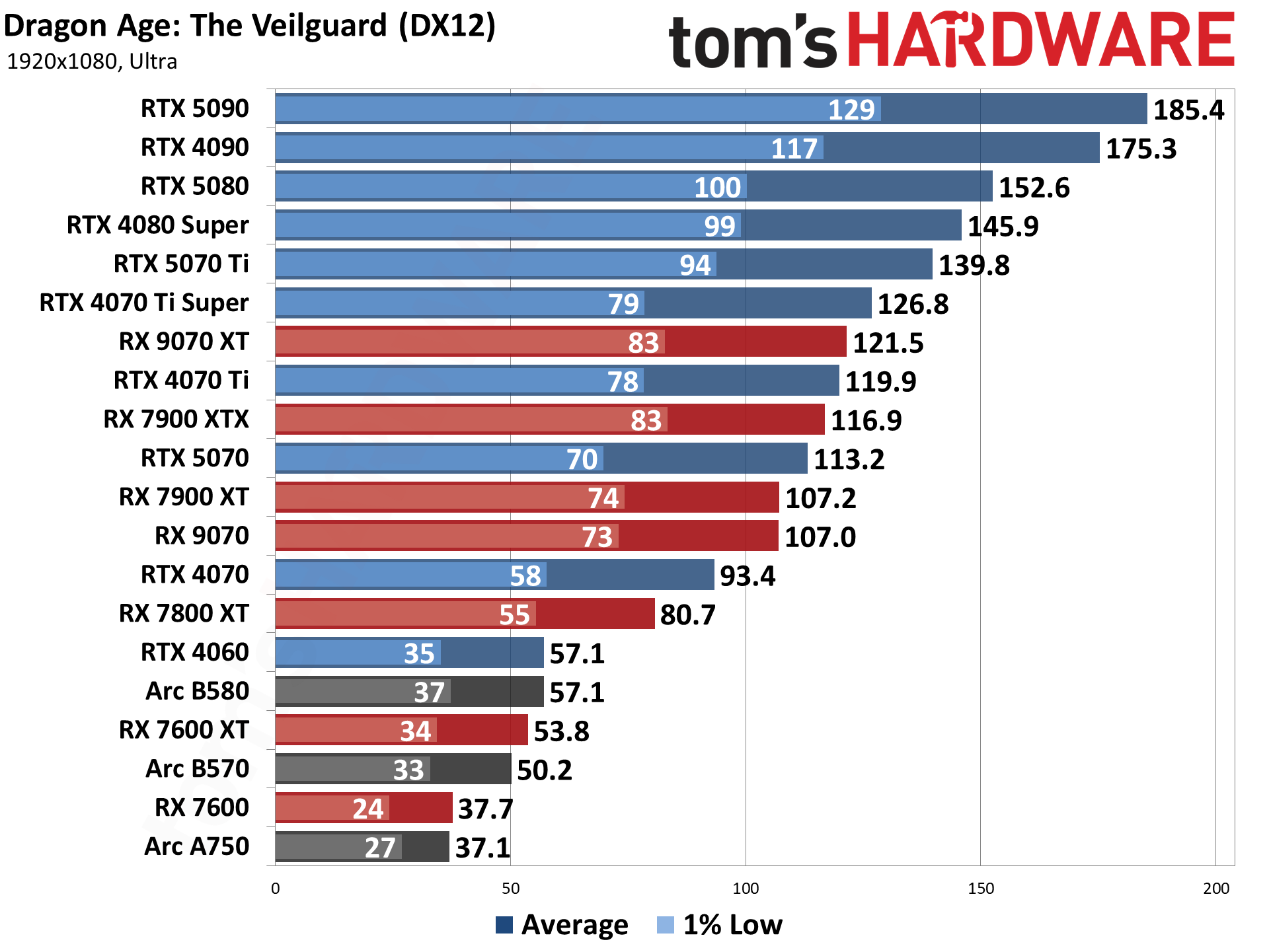
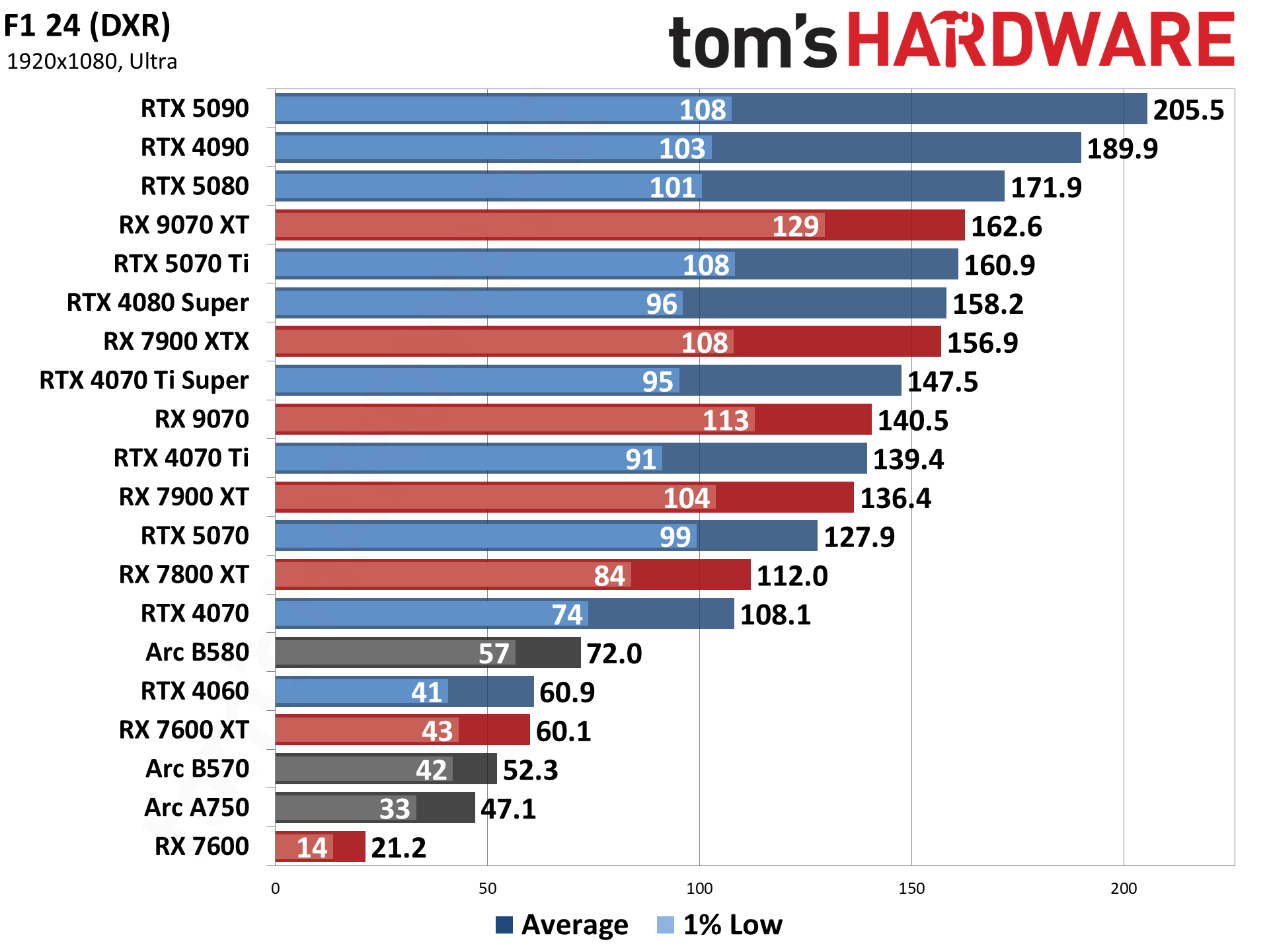
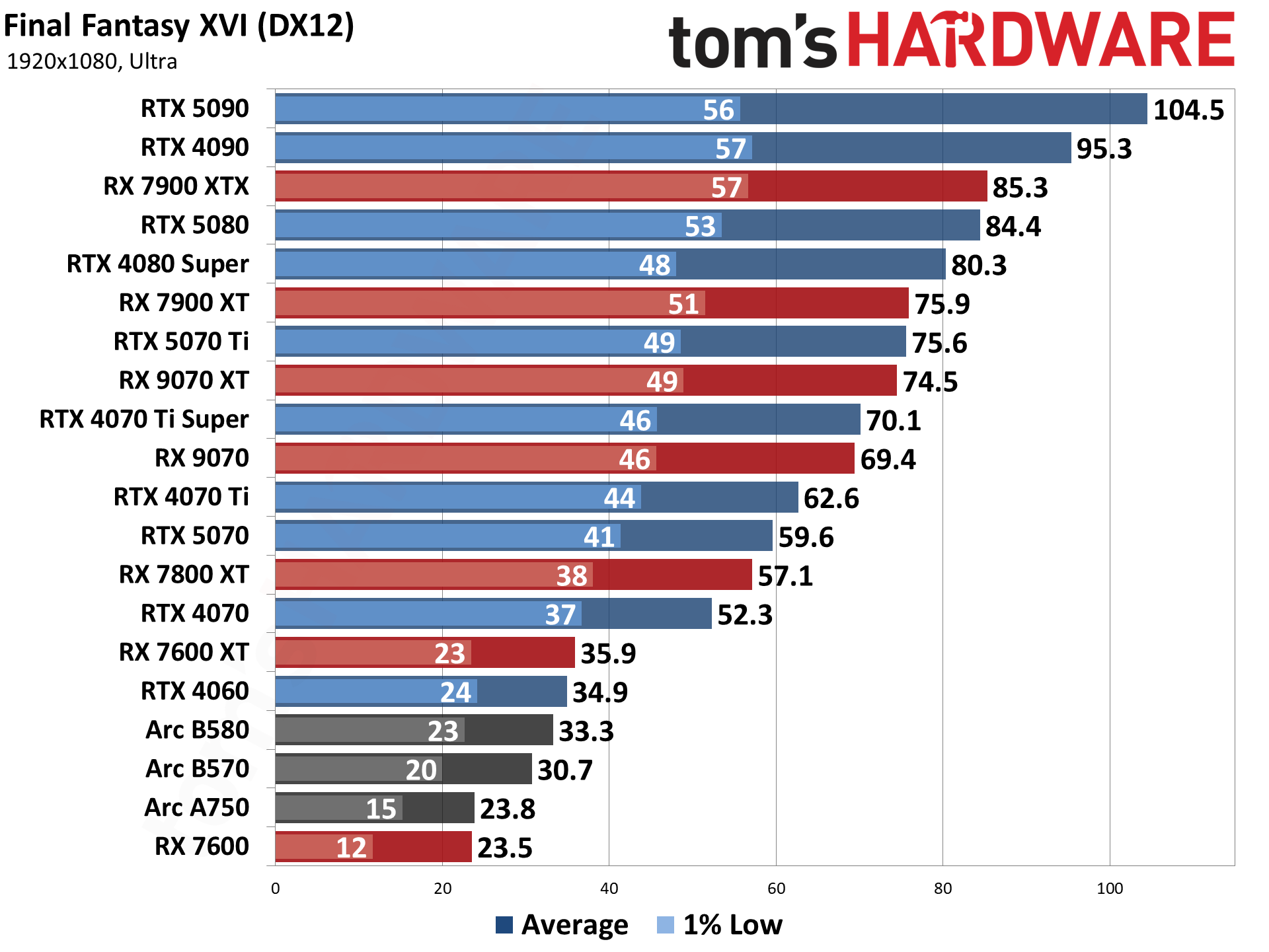
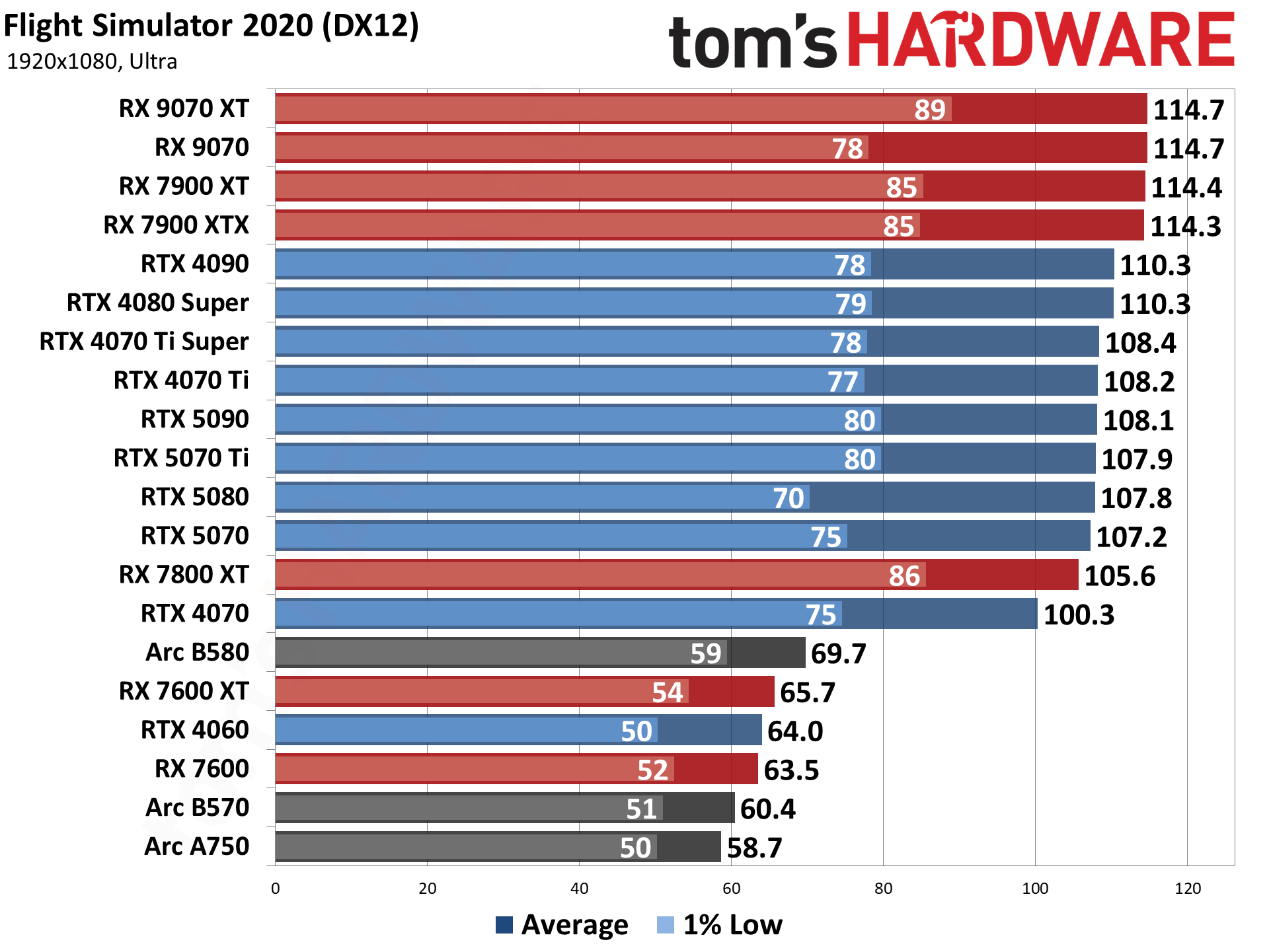
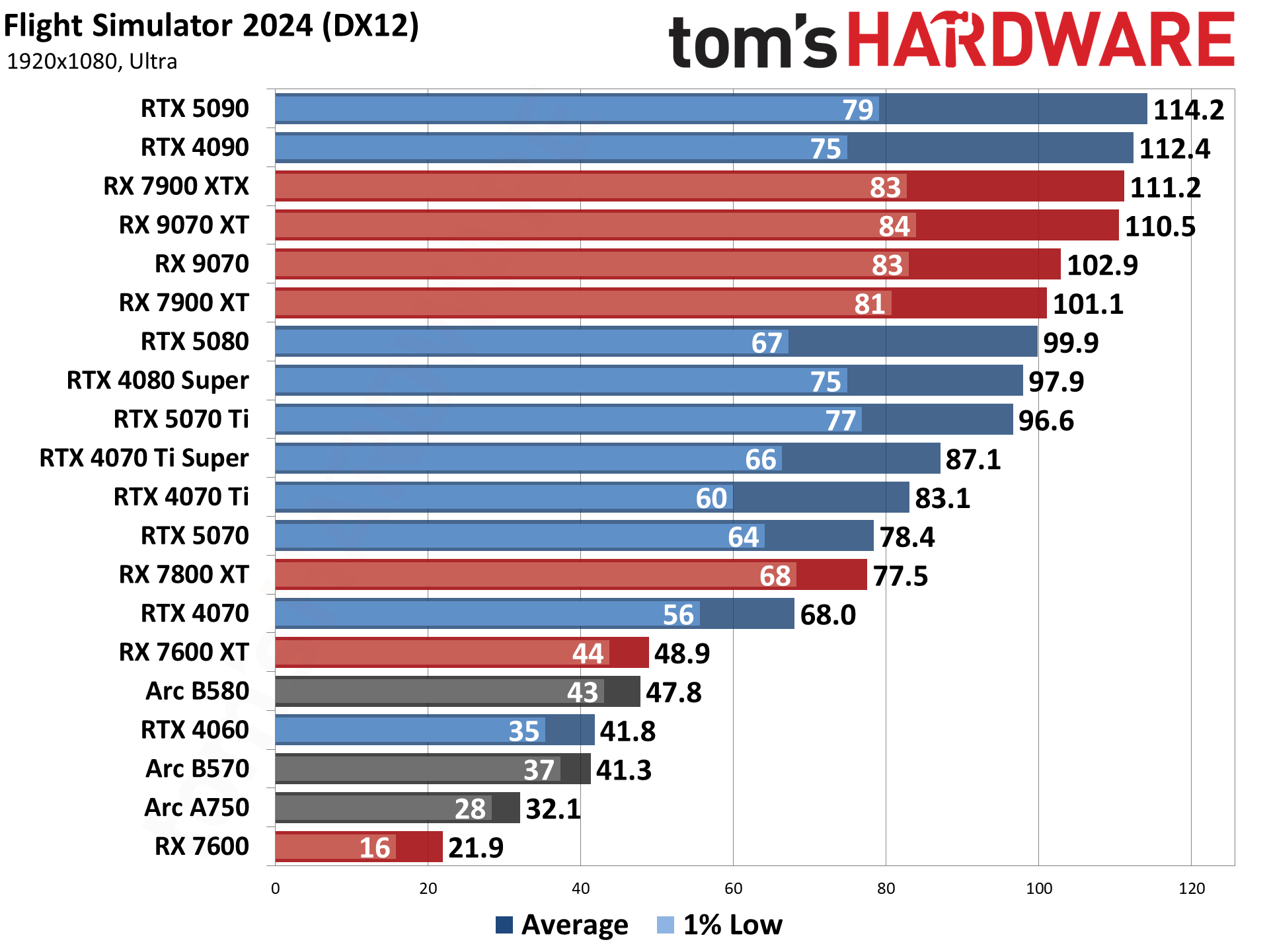
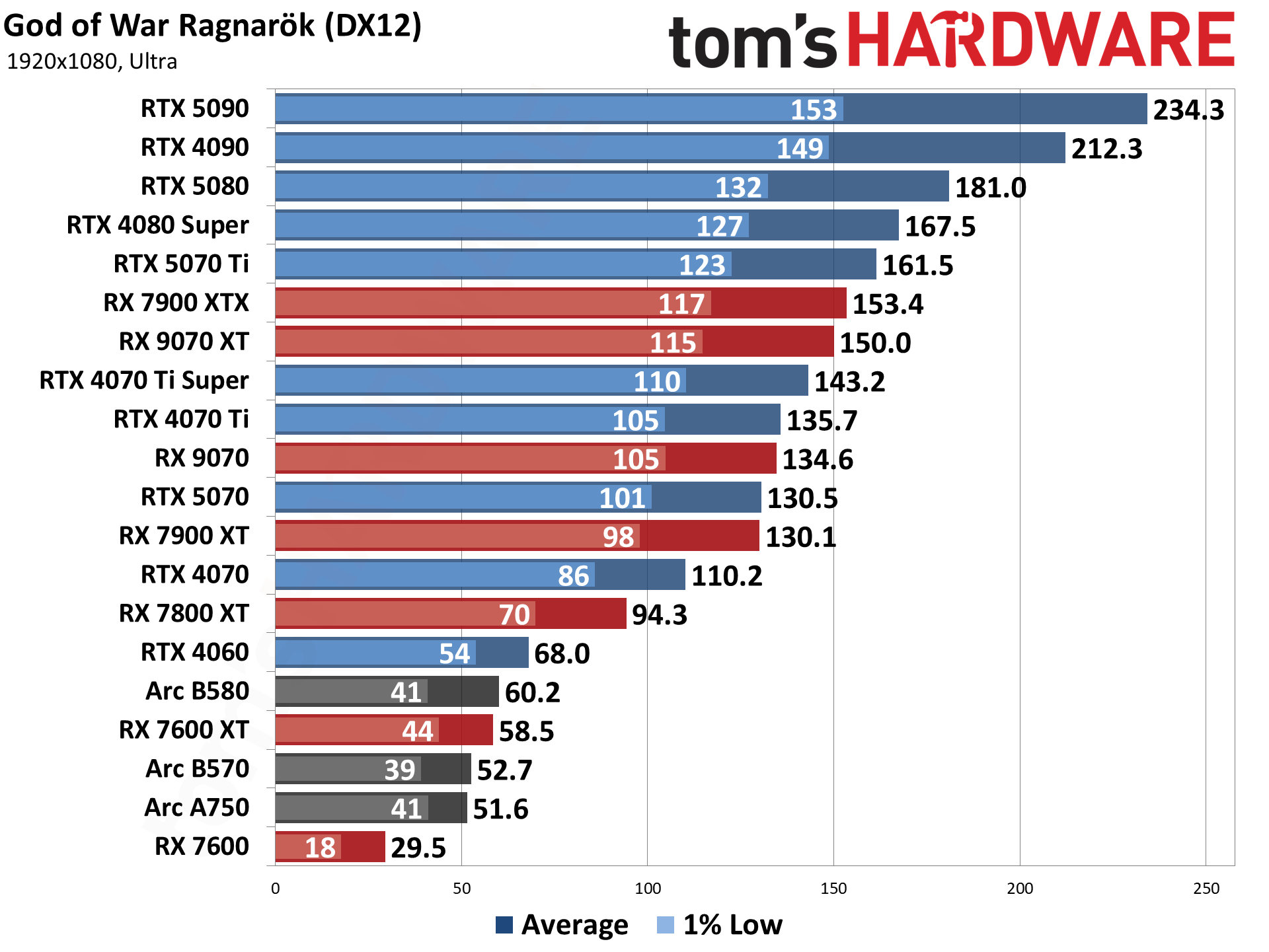
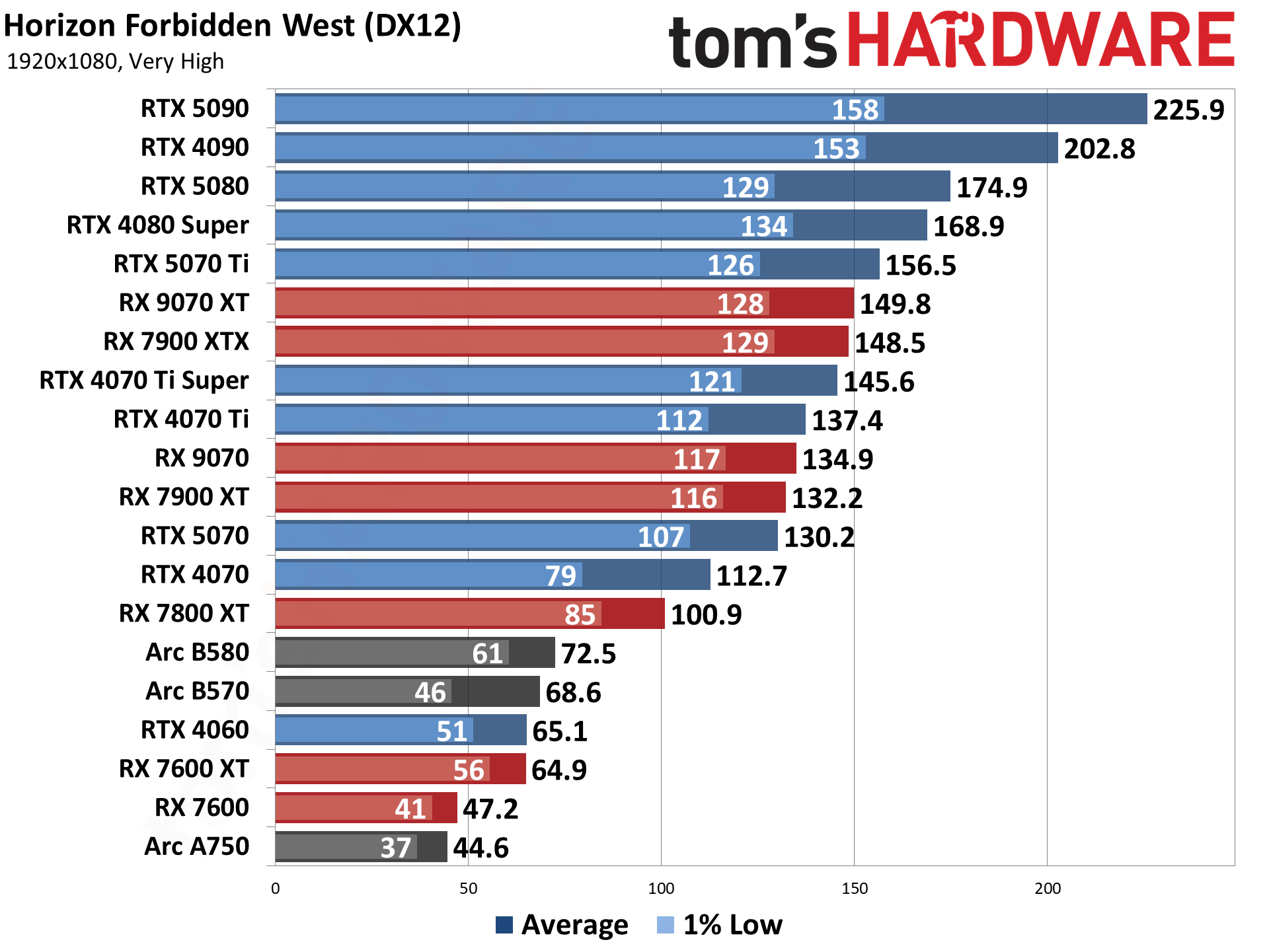
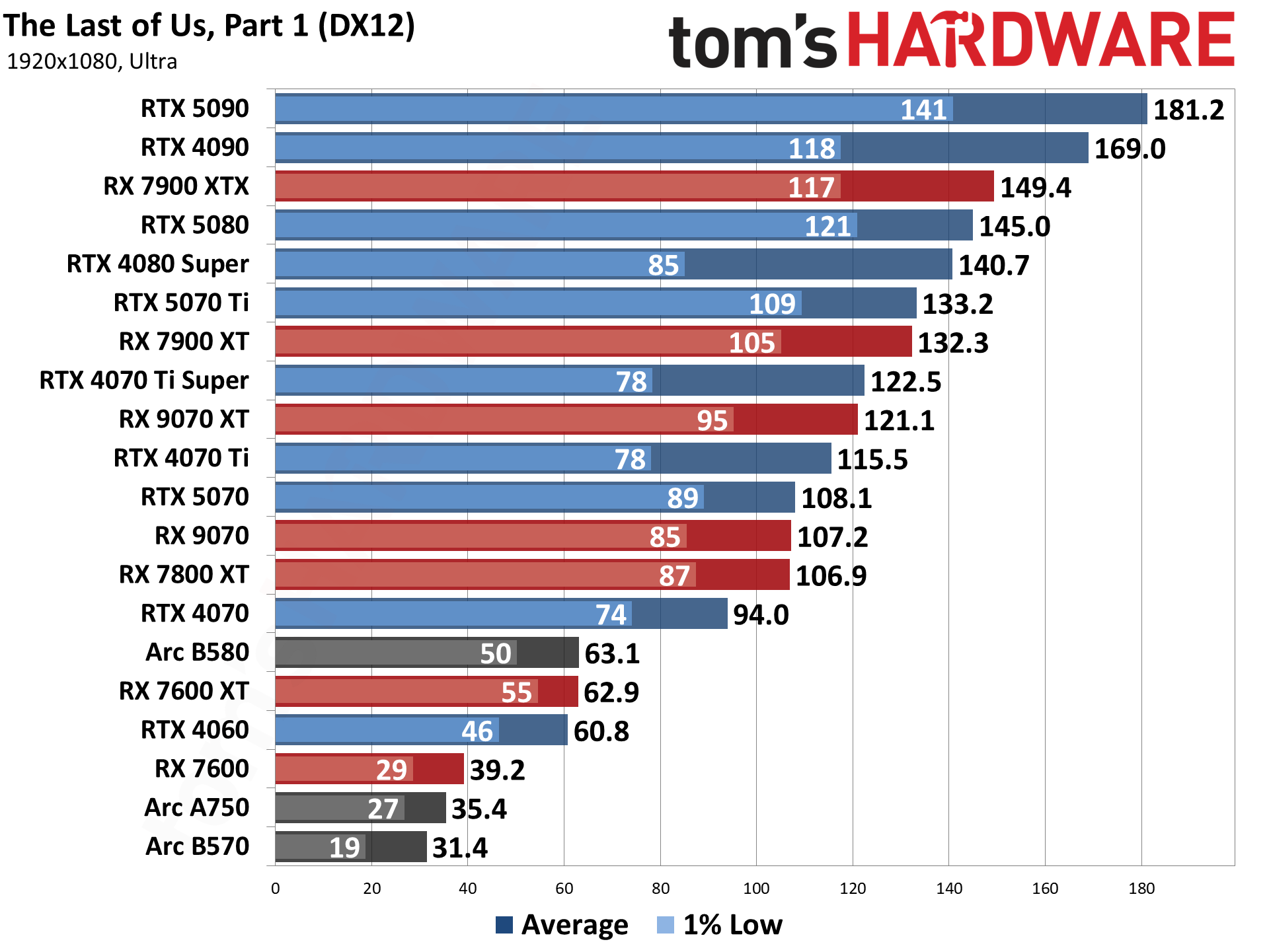
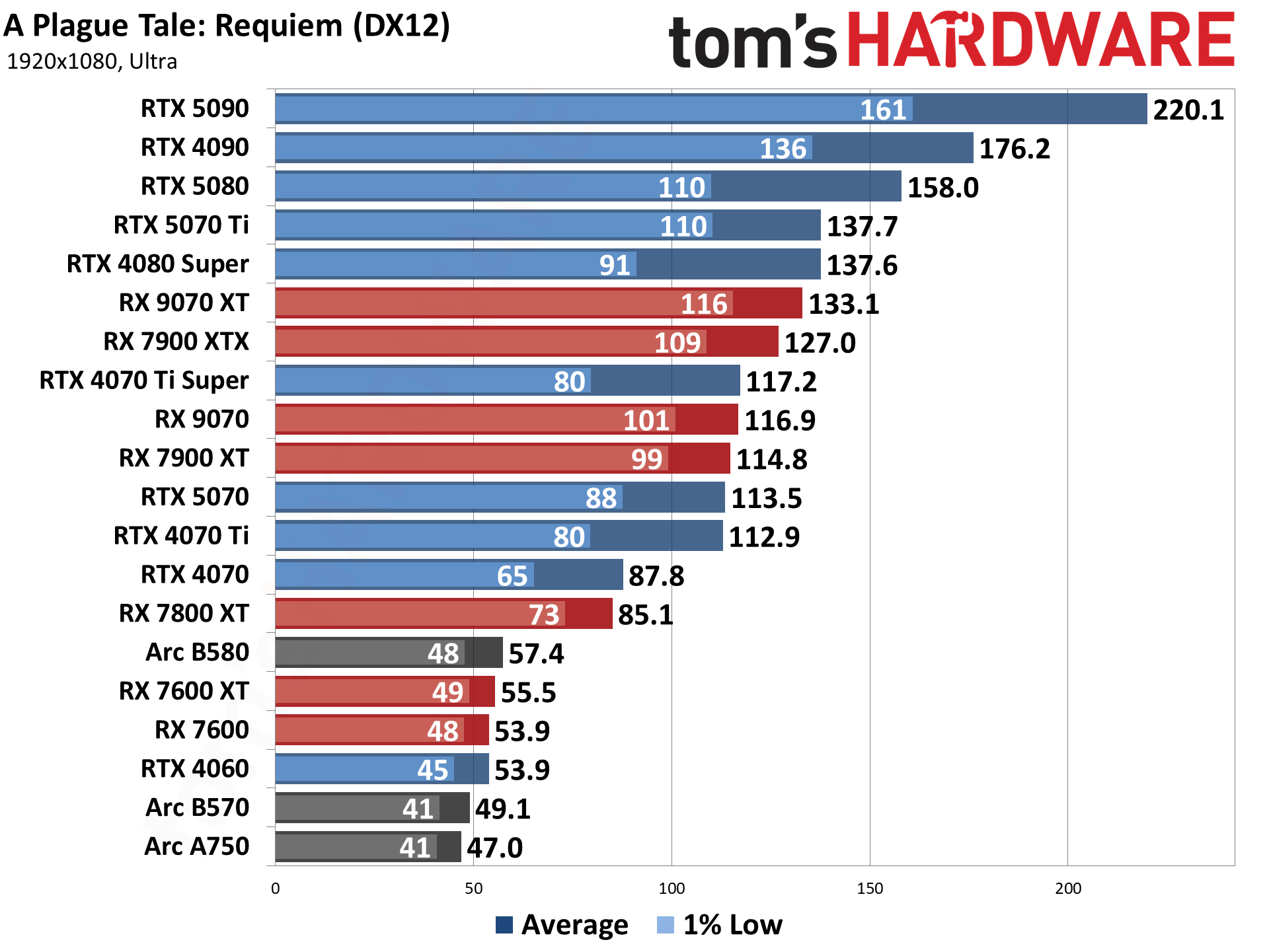
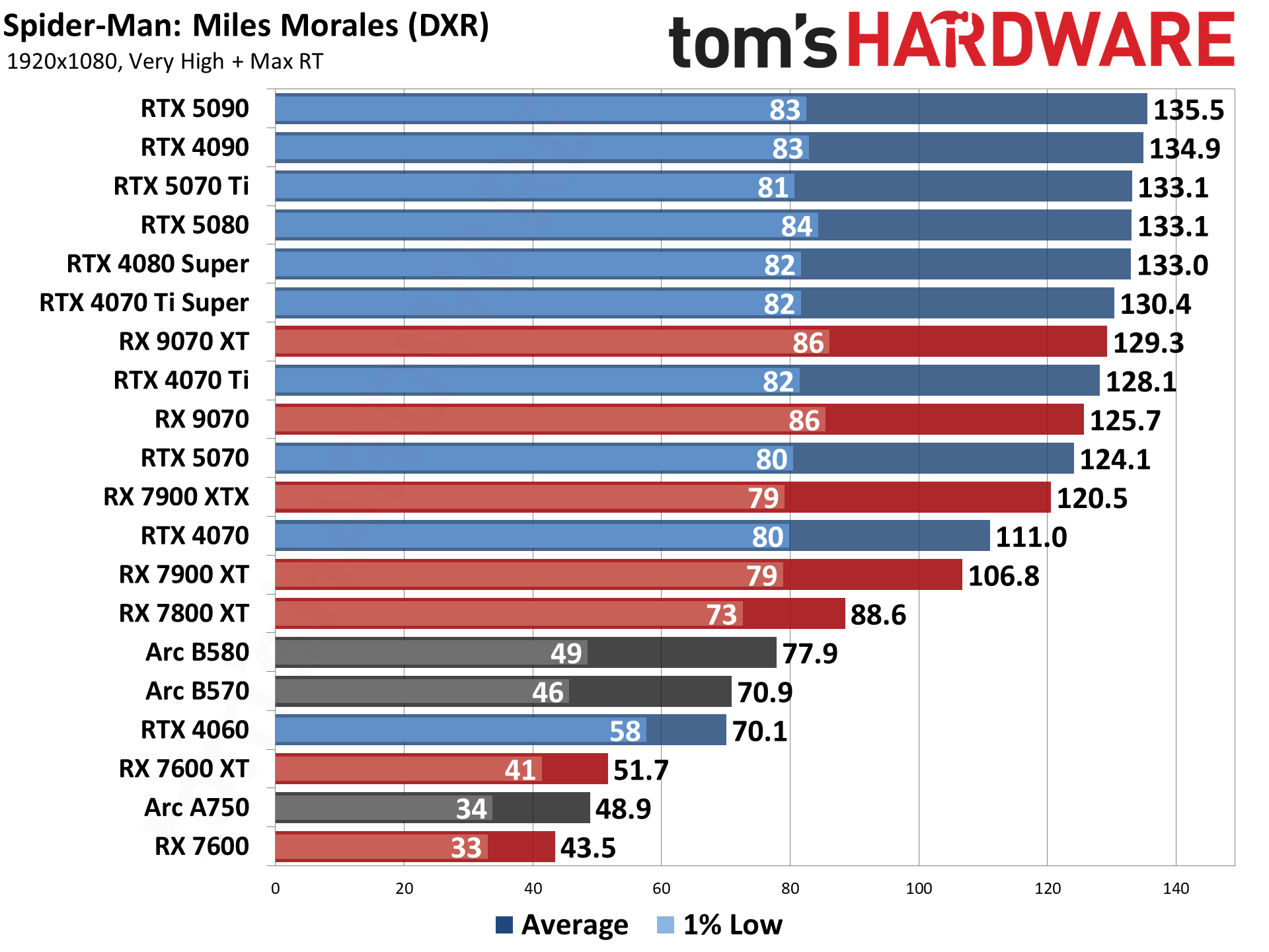
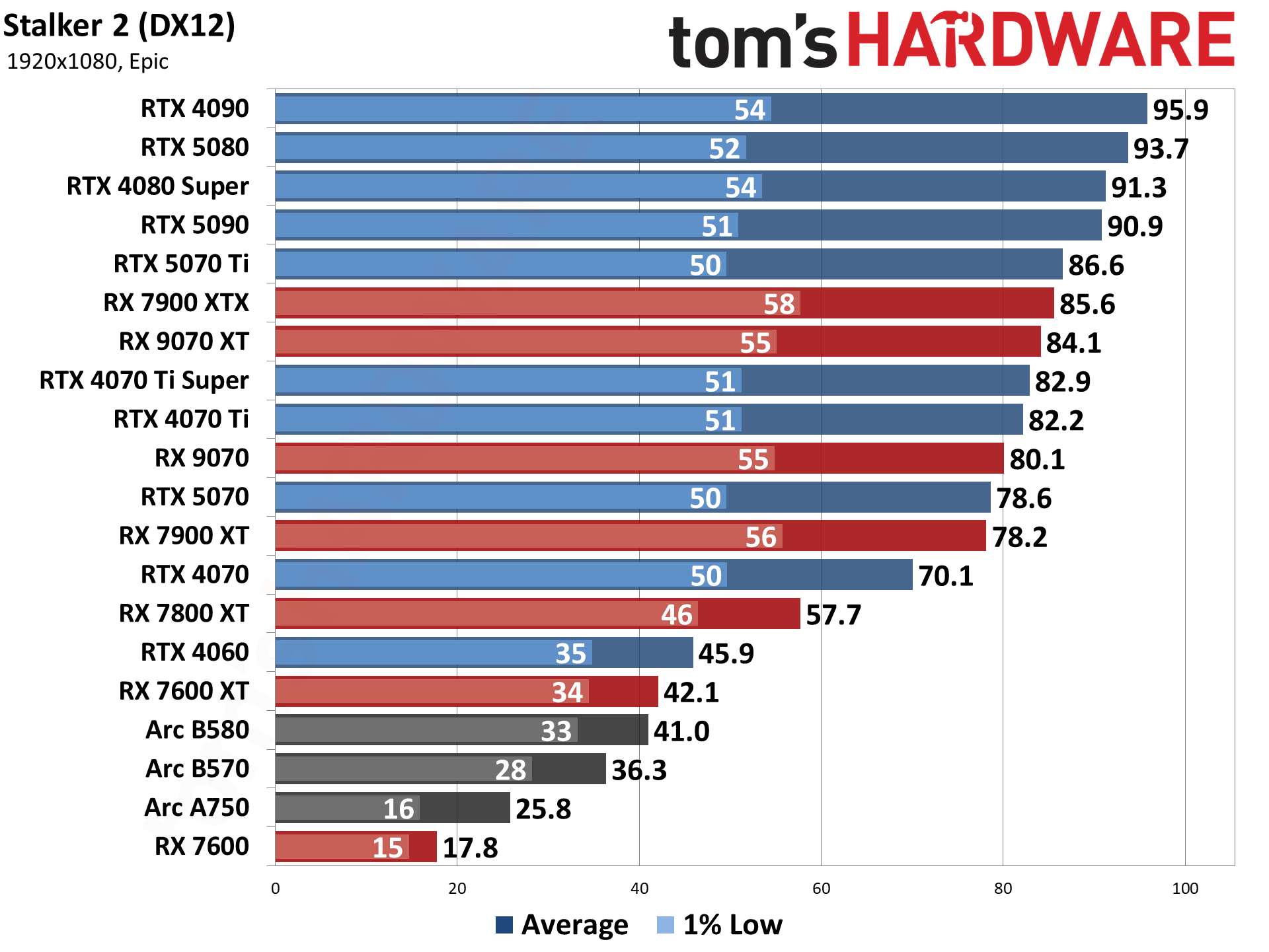
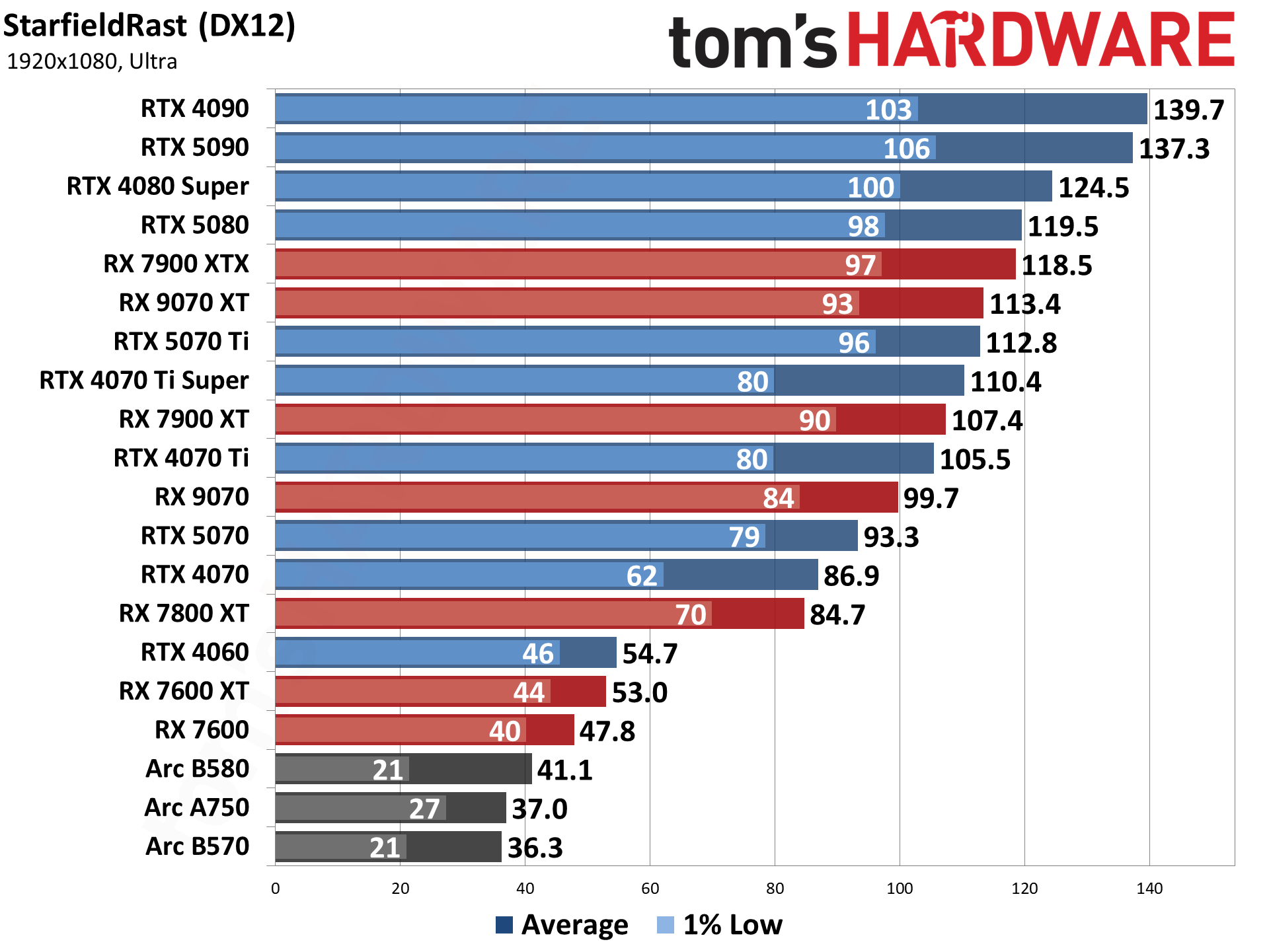
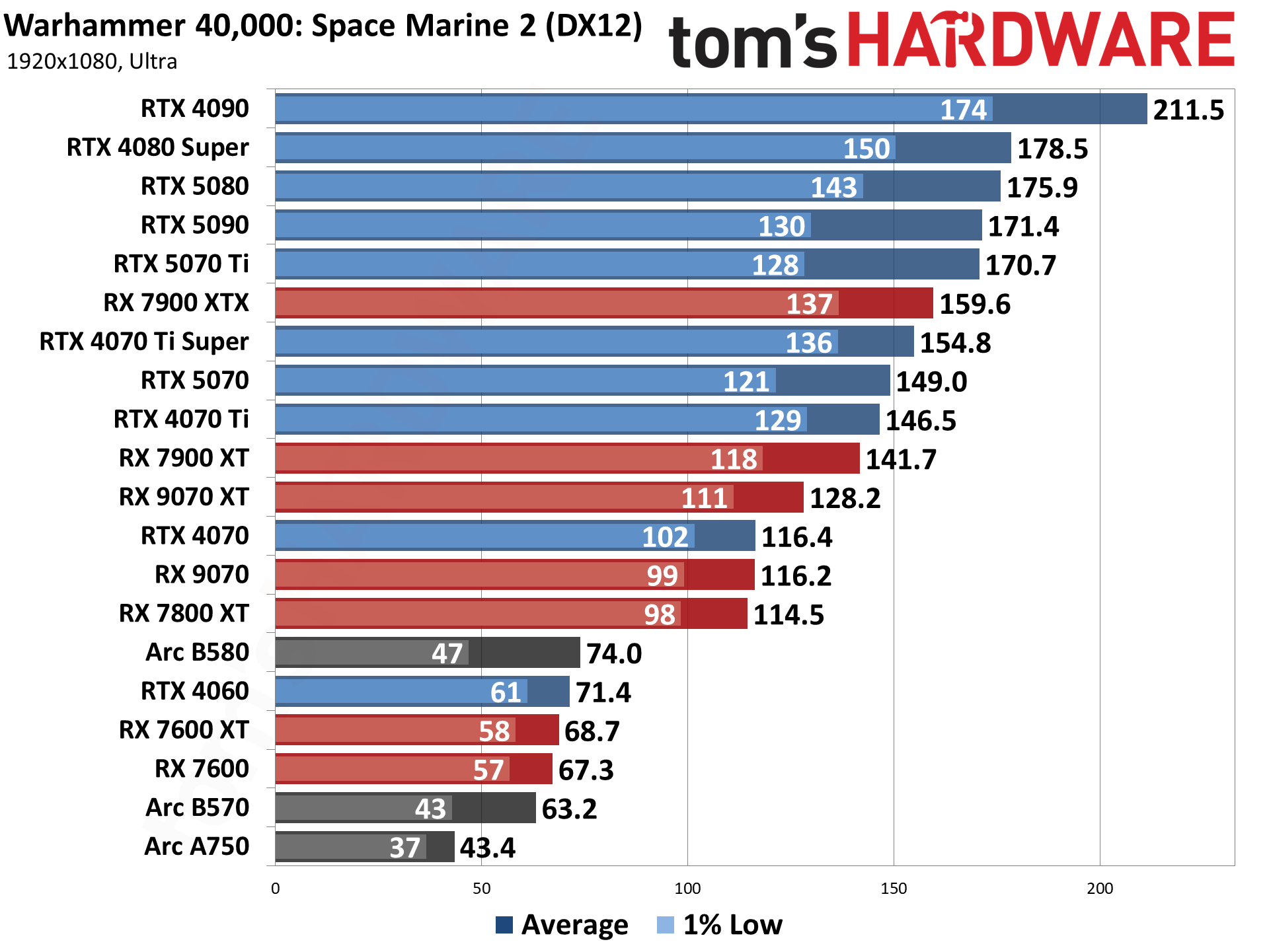
Best Graphics Cards — 1440p Ultra
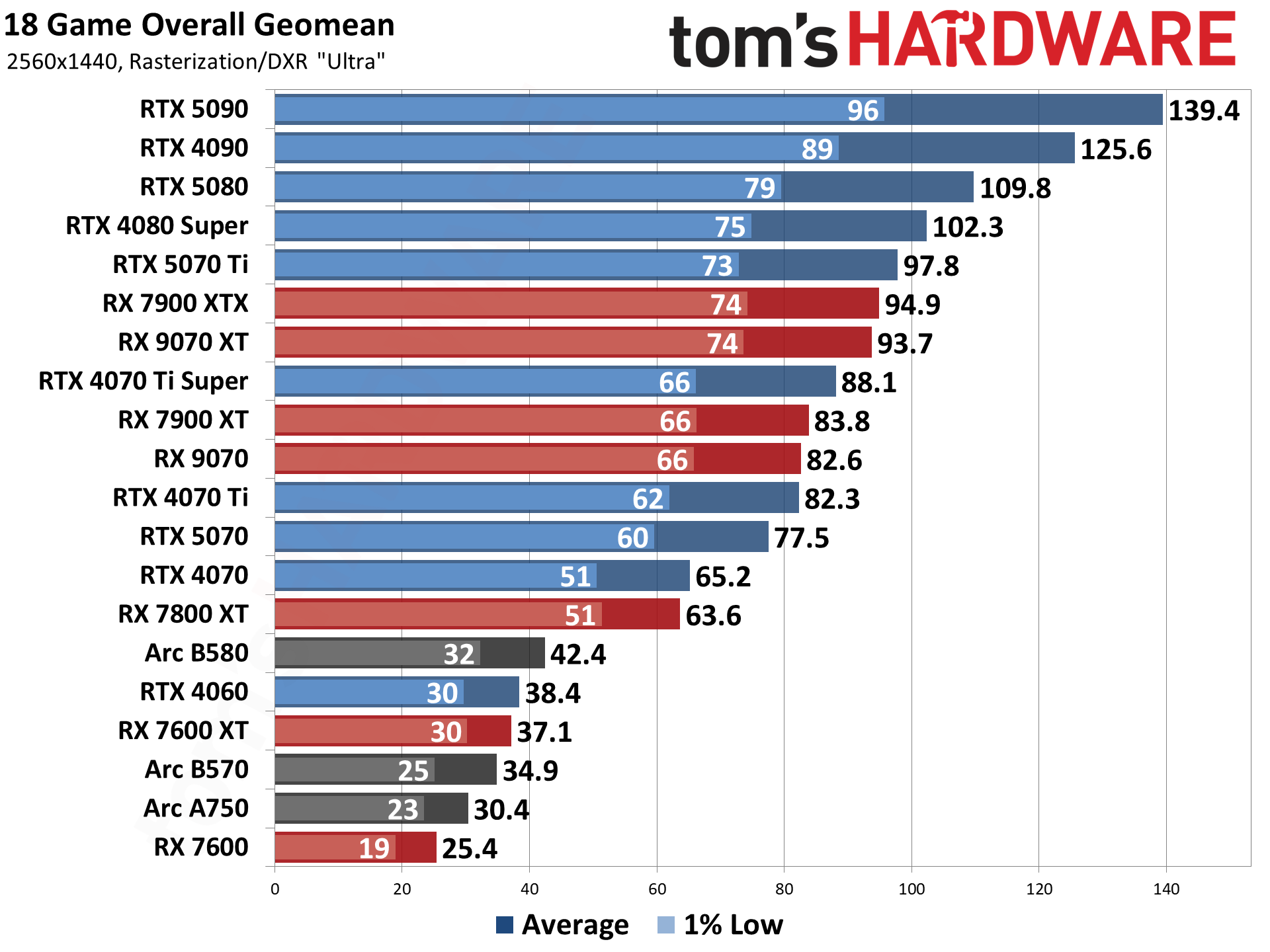
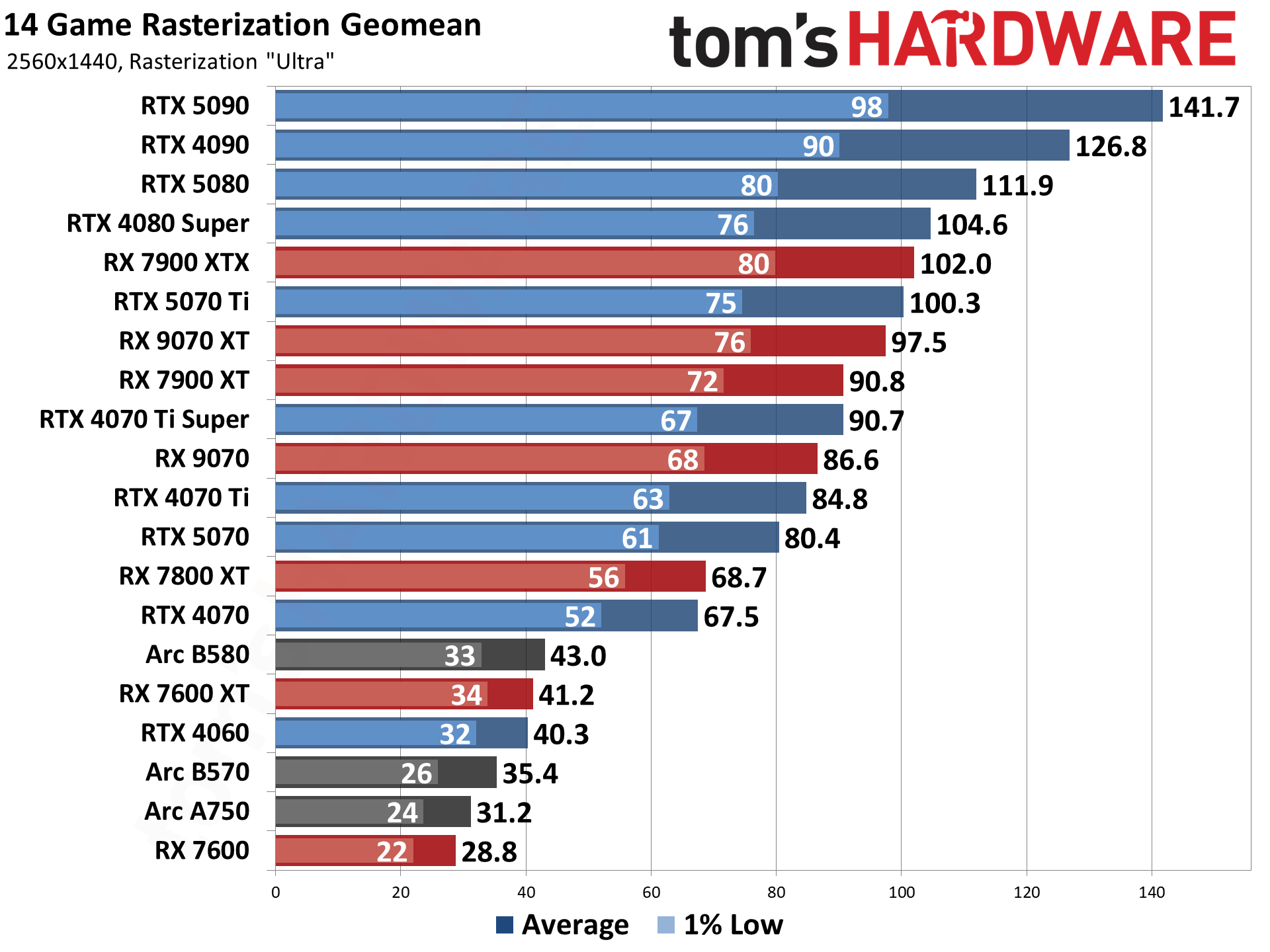
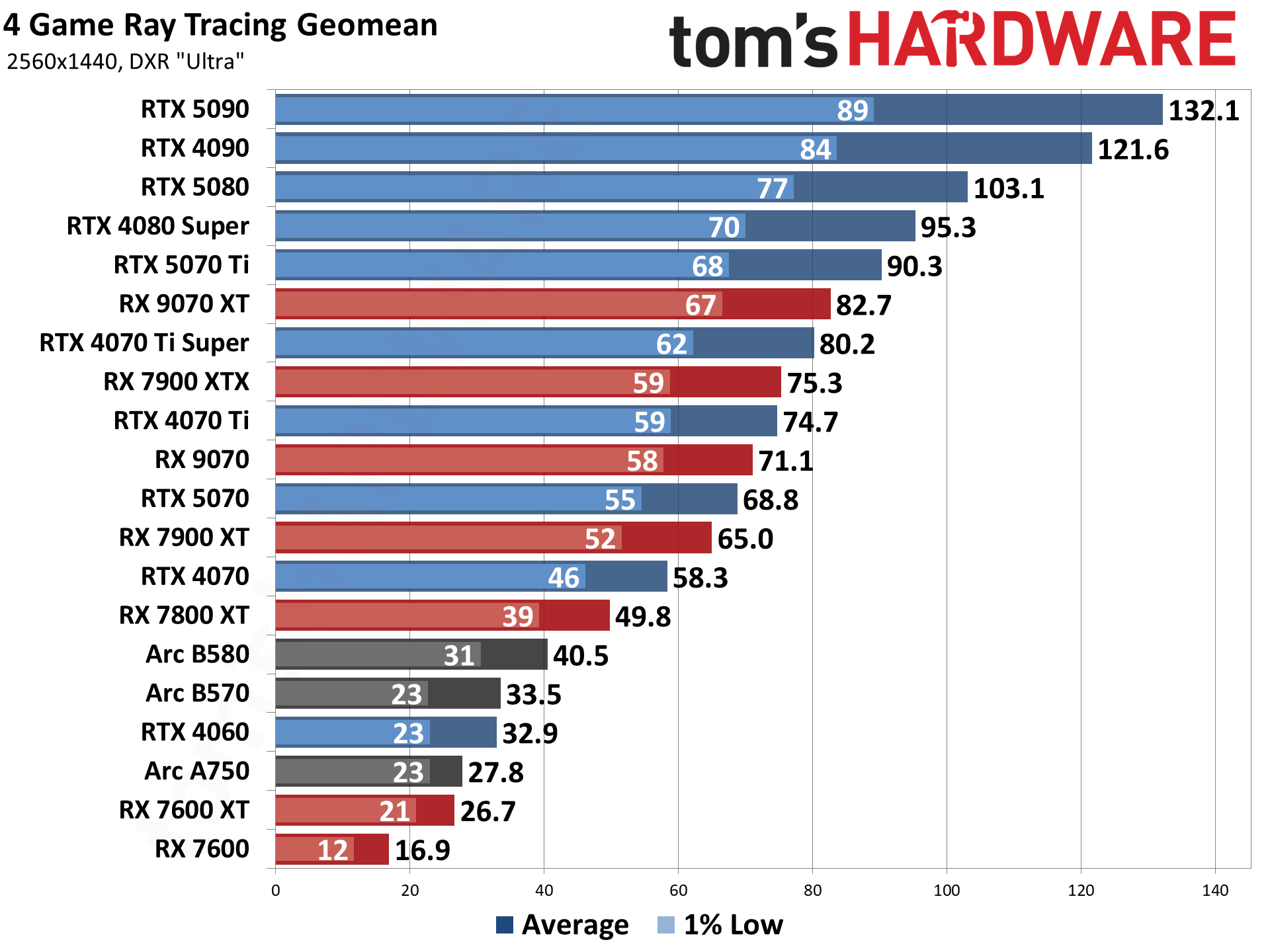
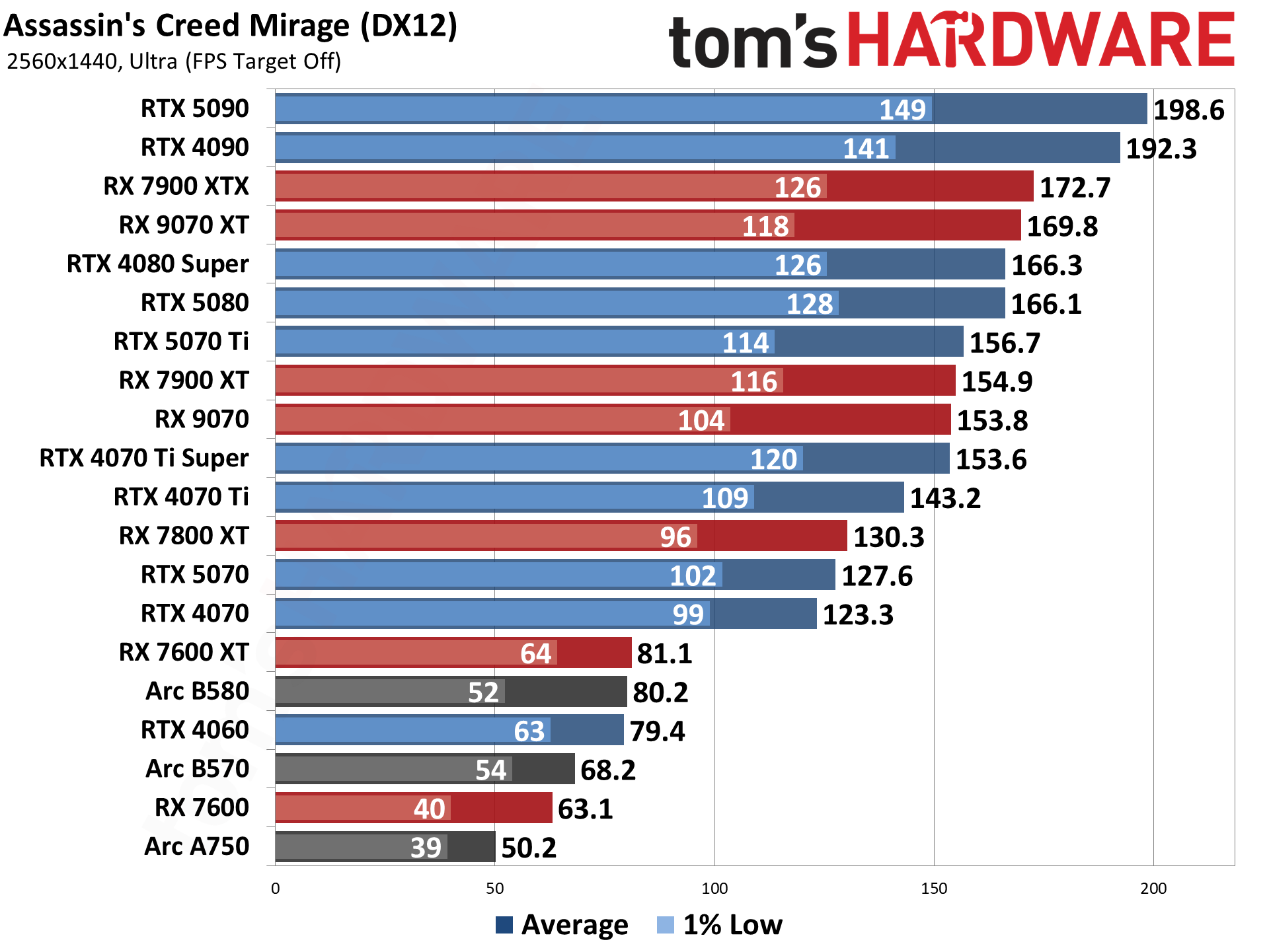
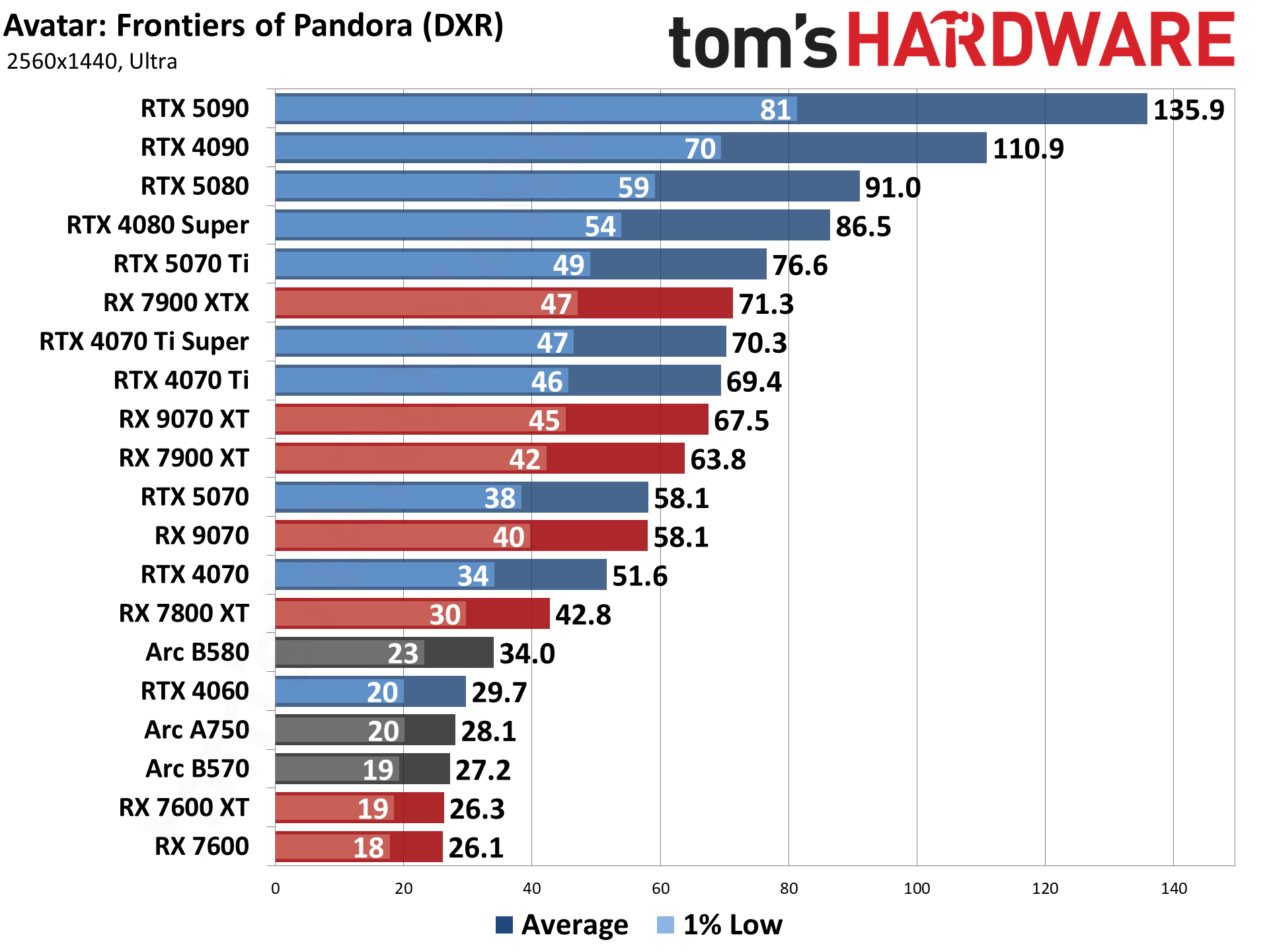
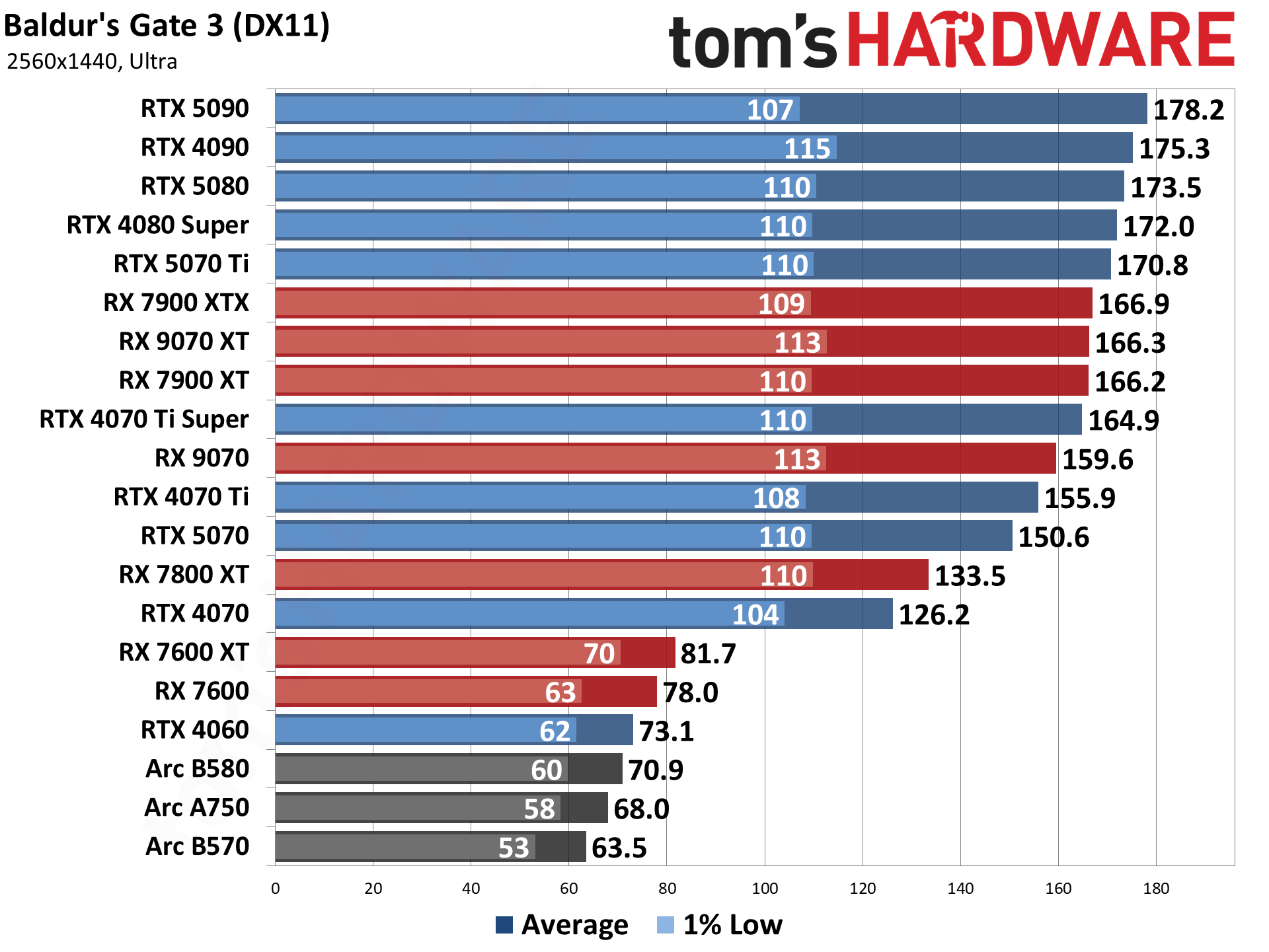
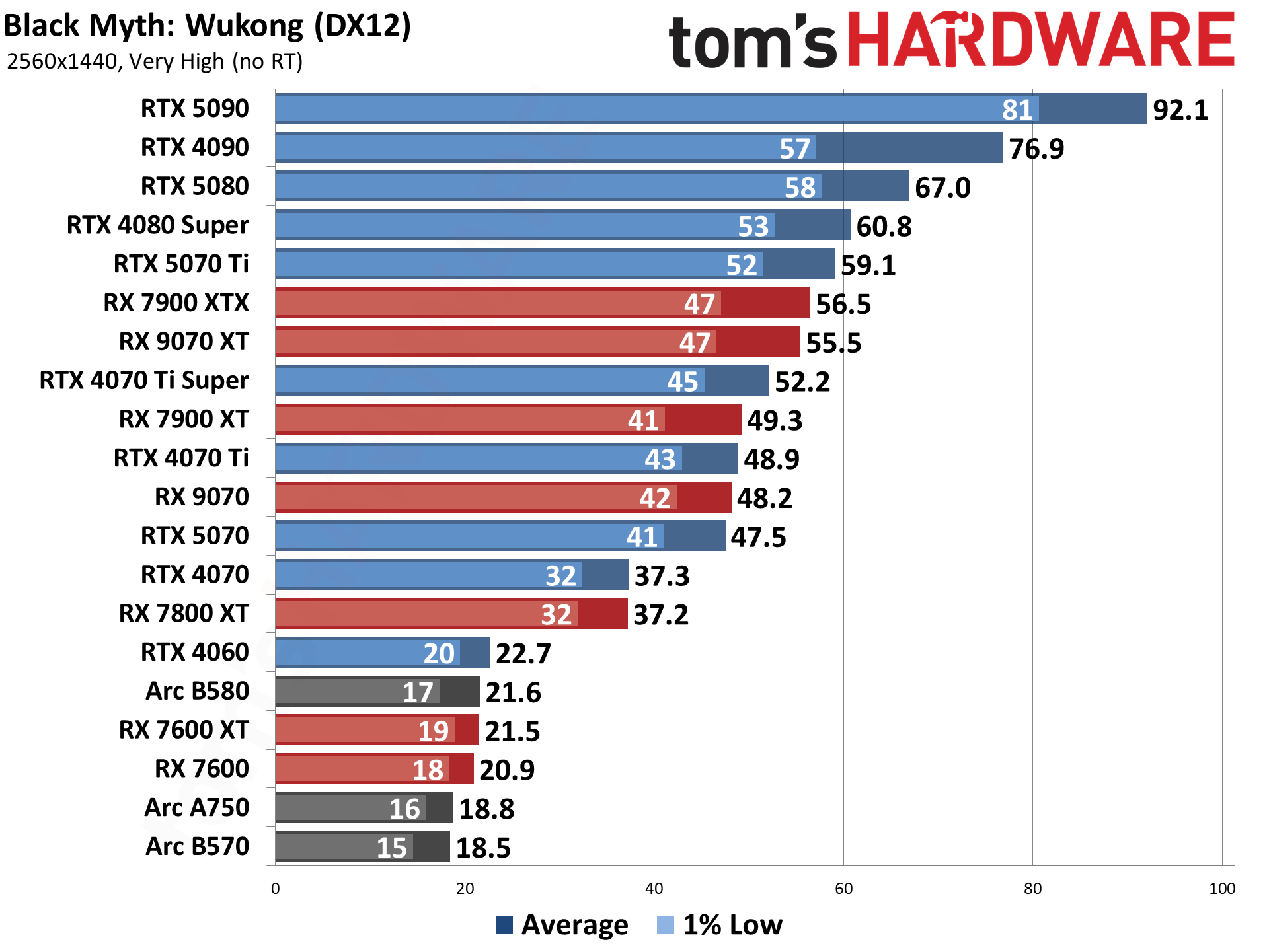
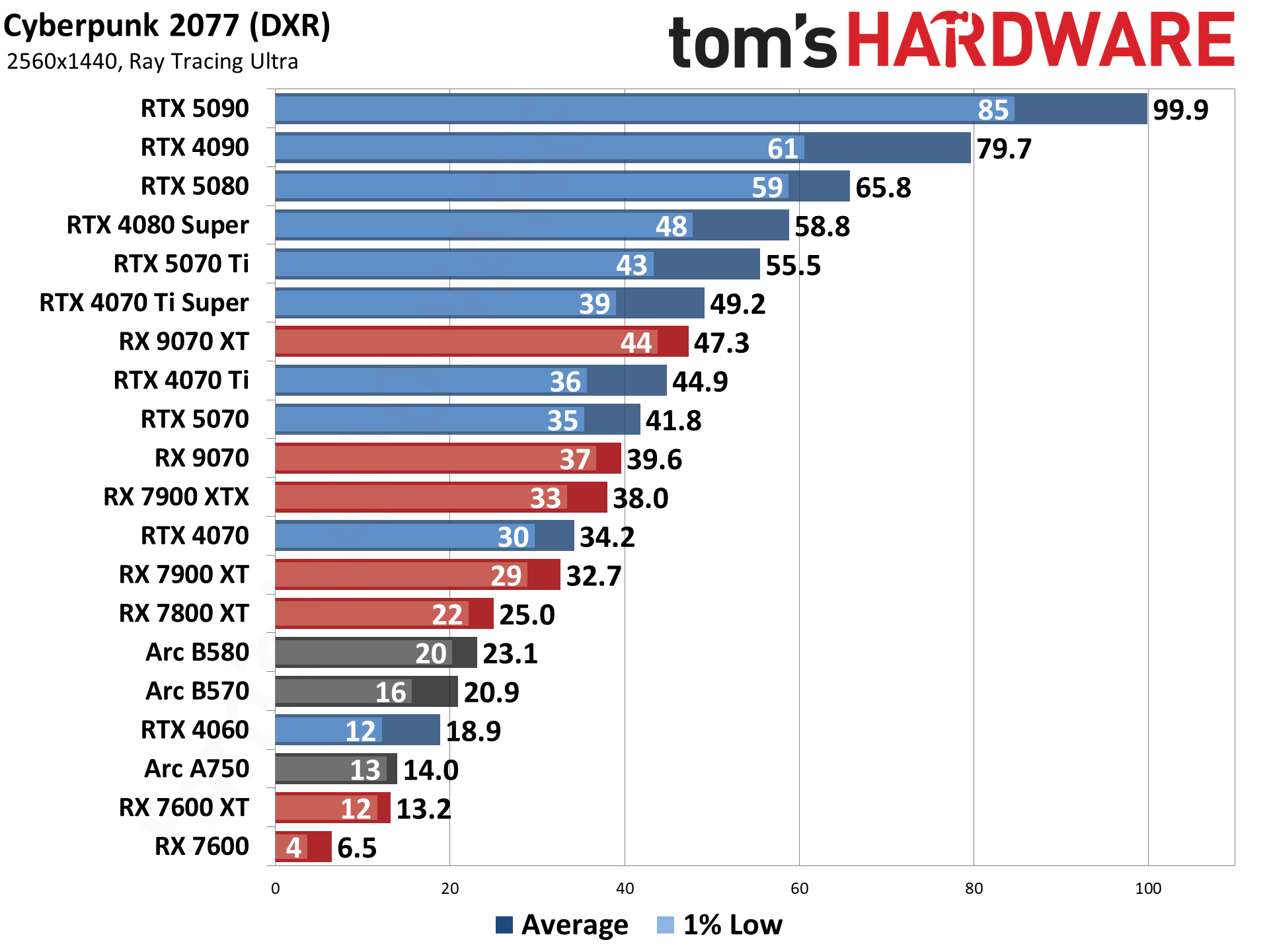
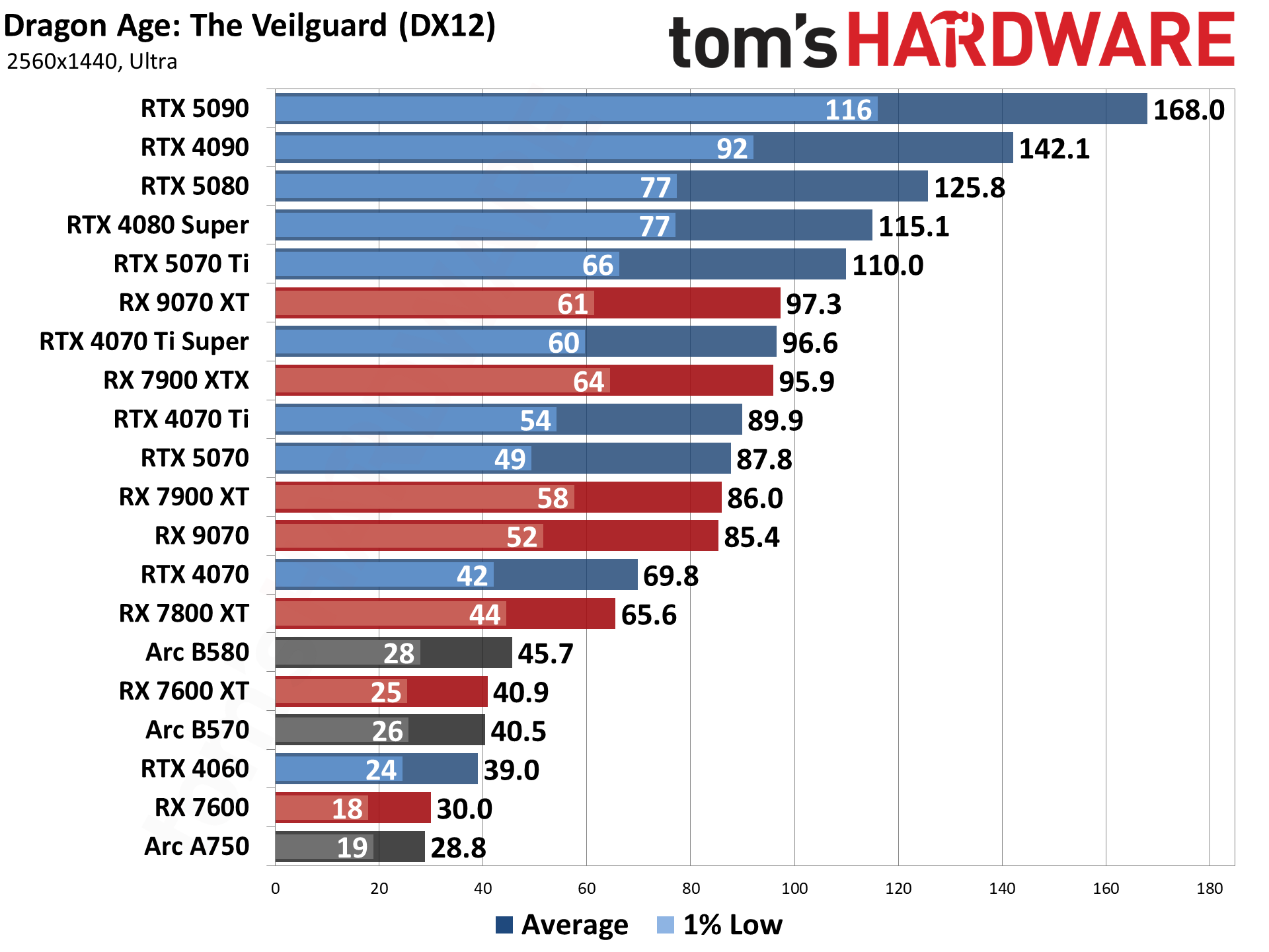
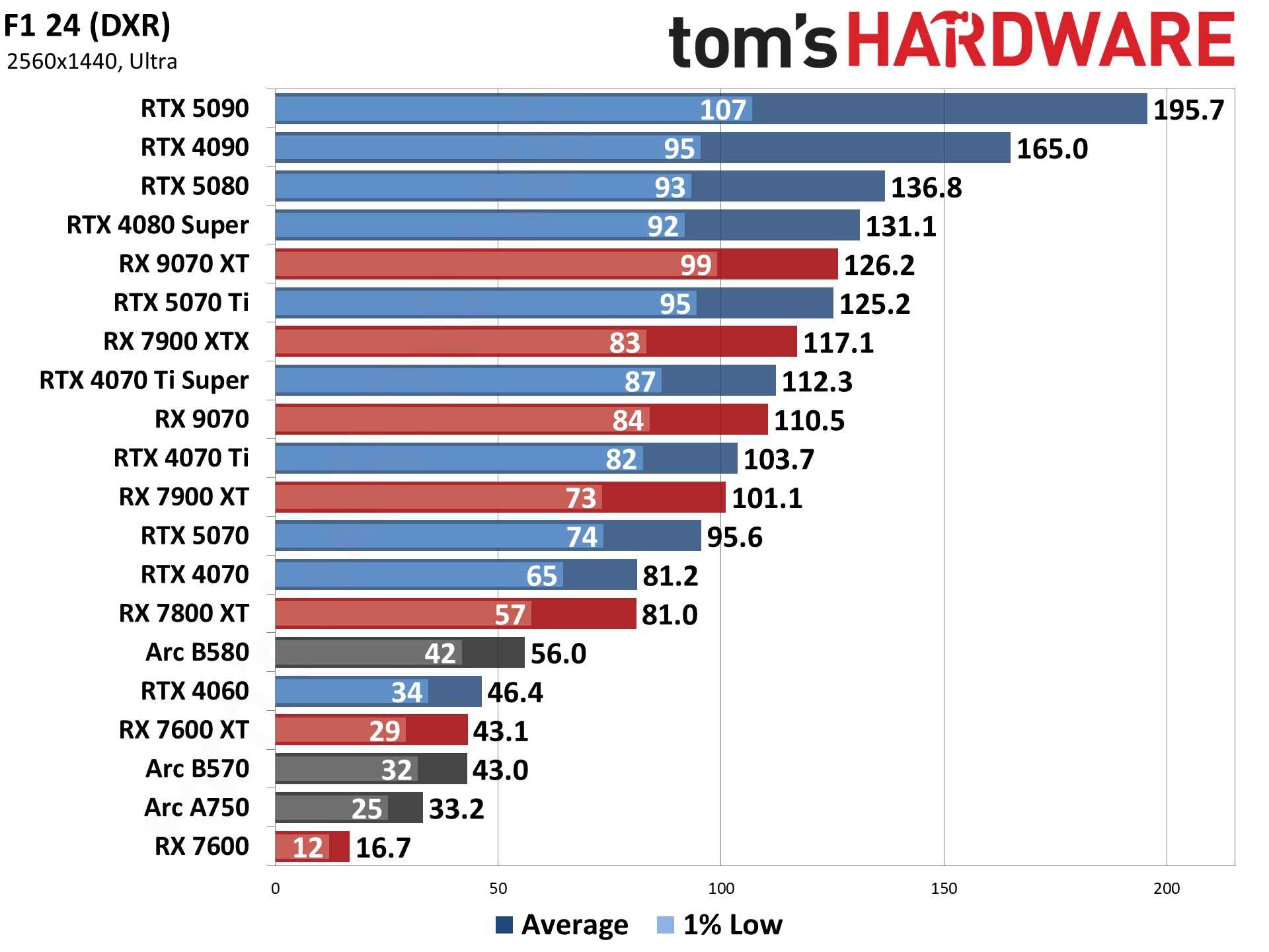
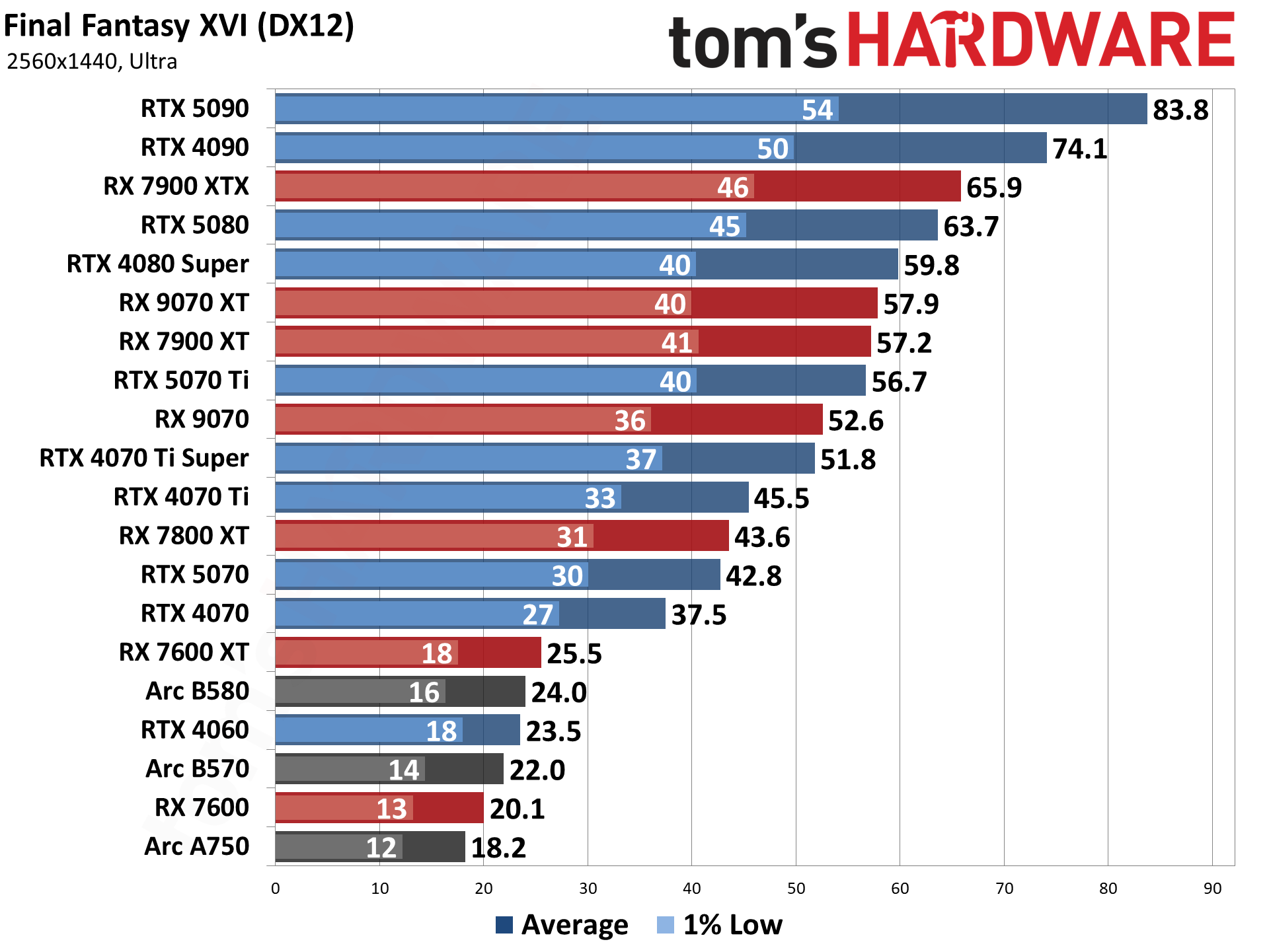
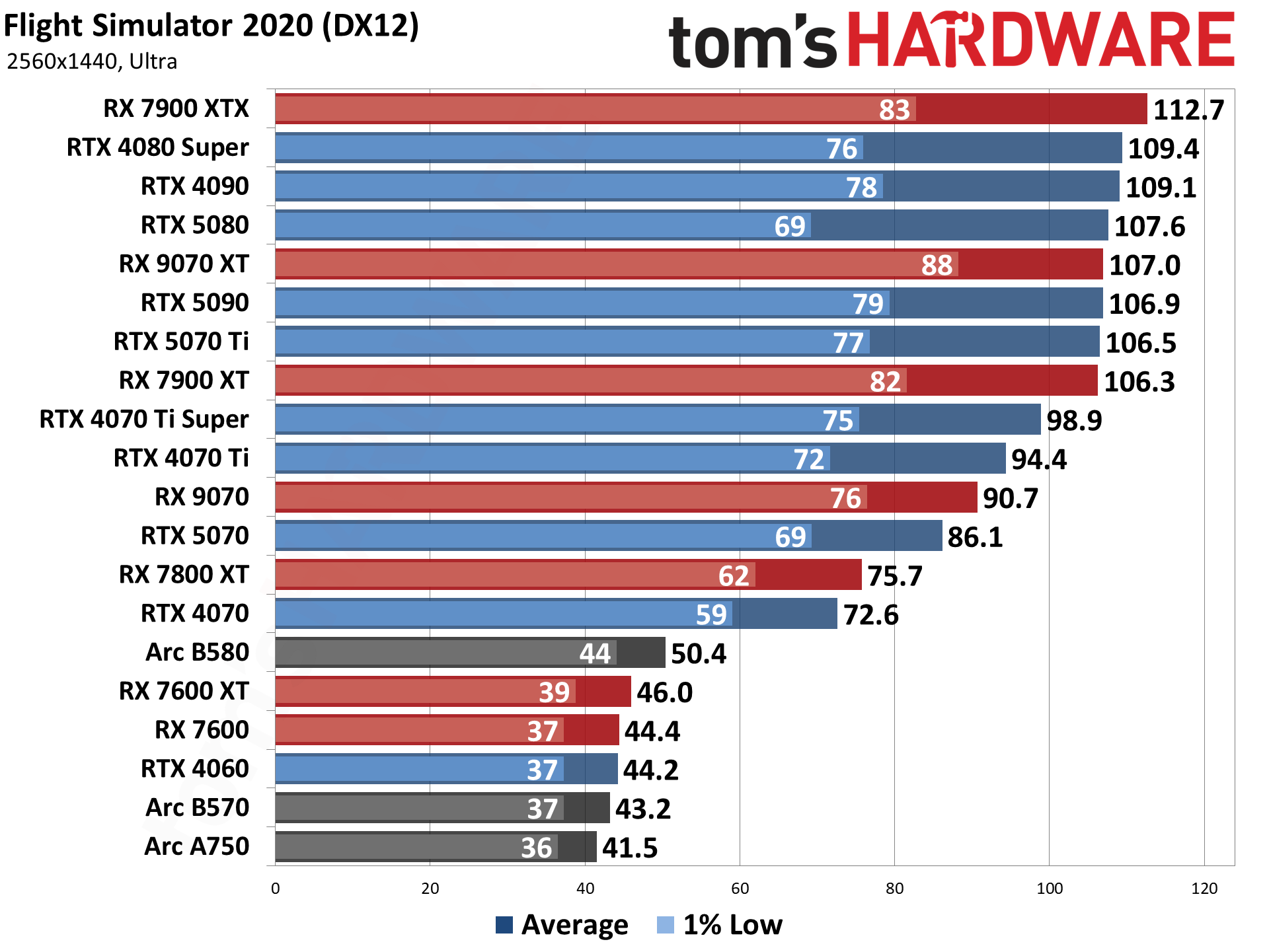
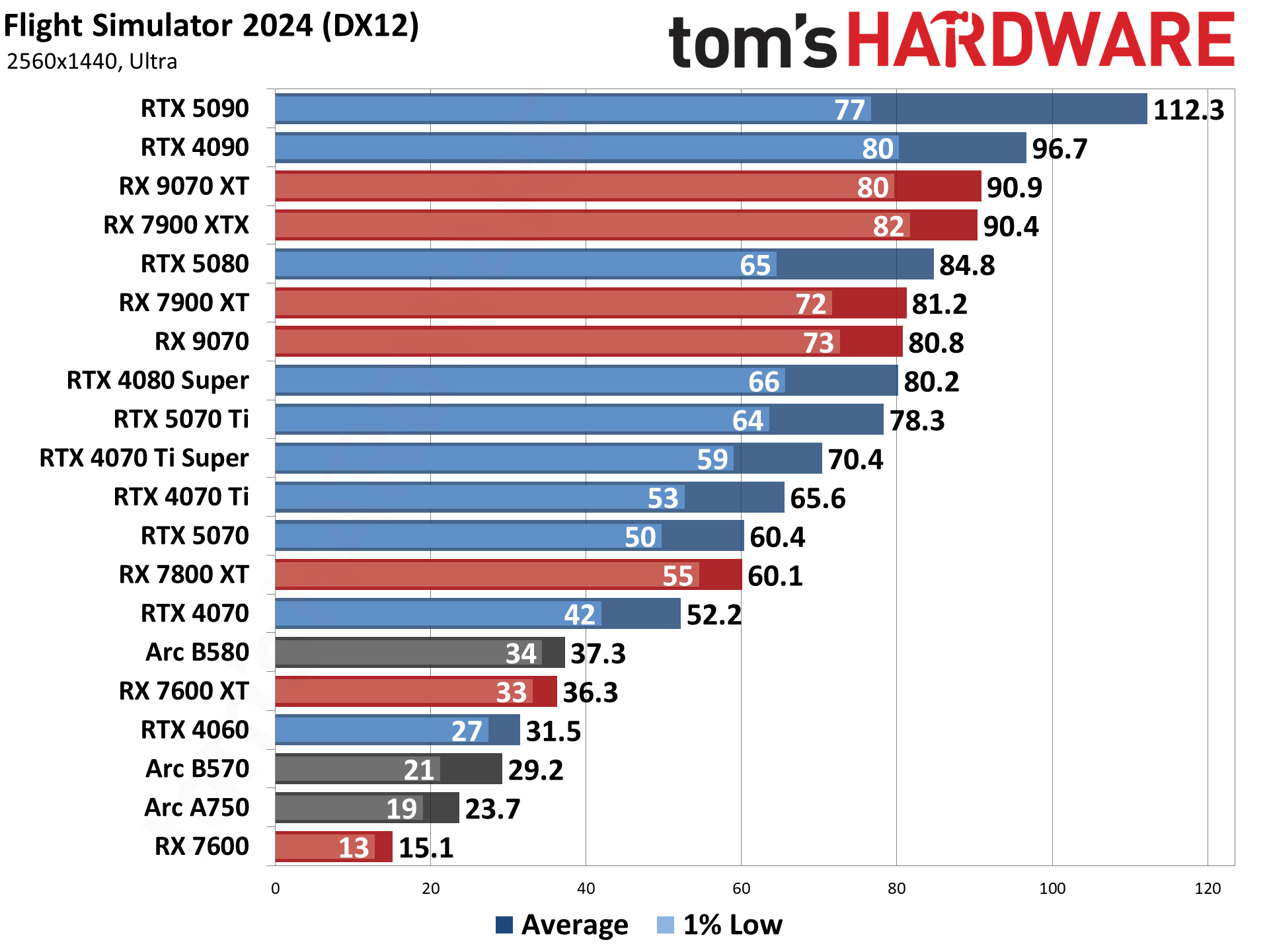
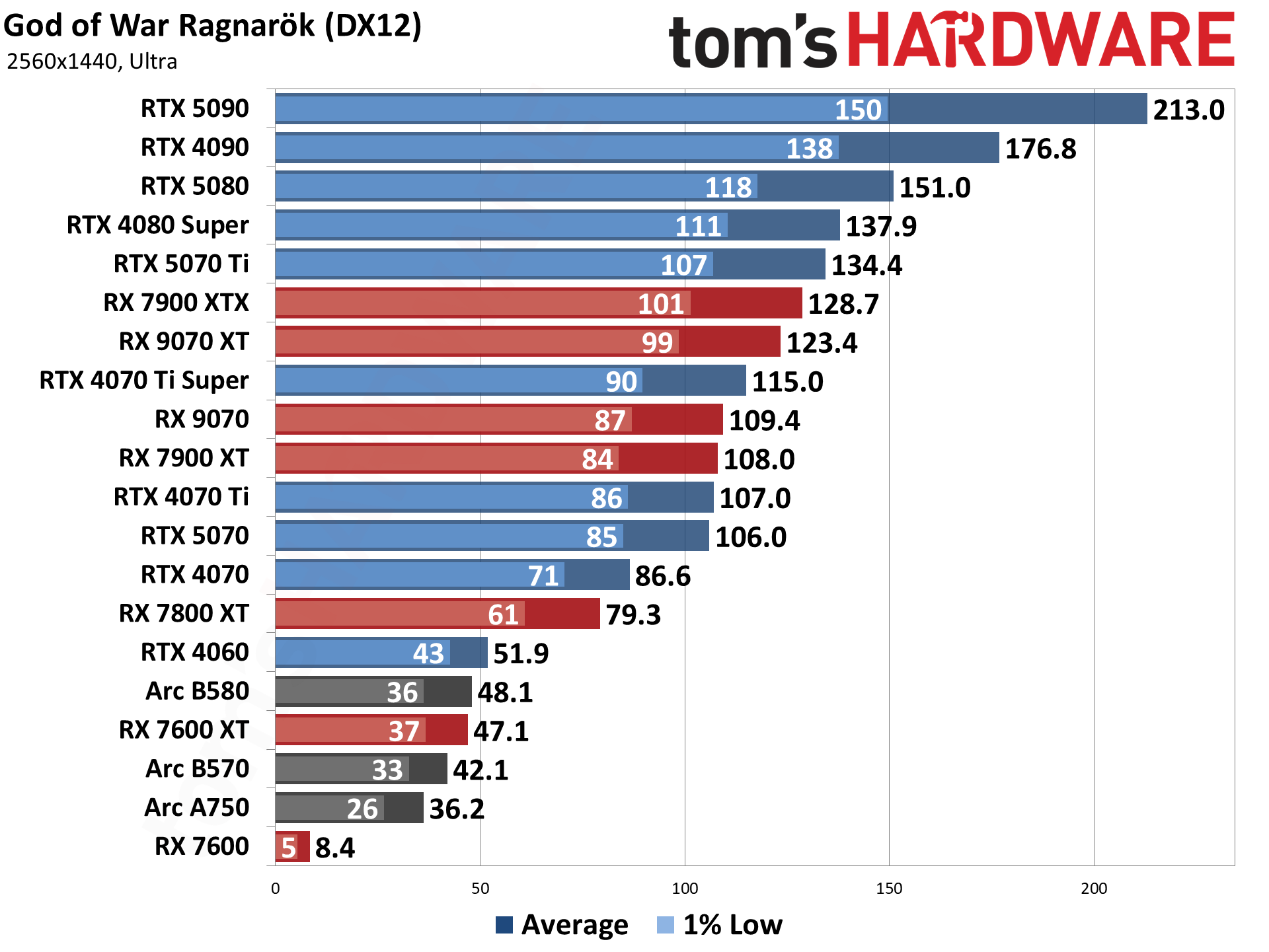
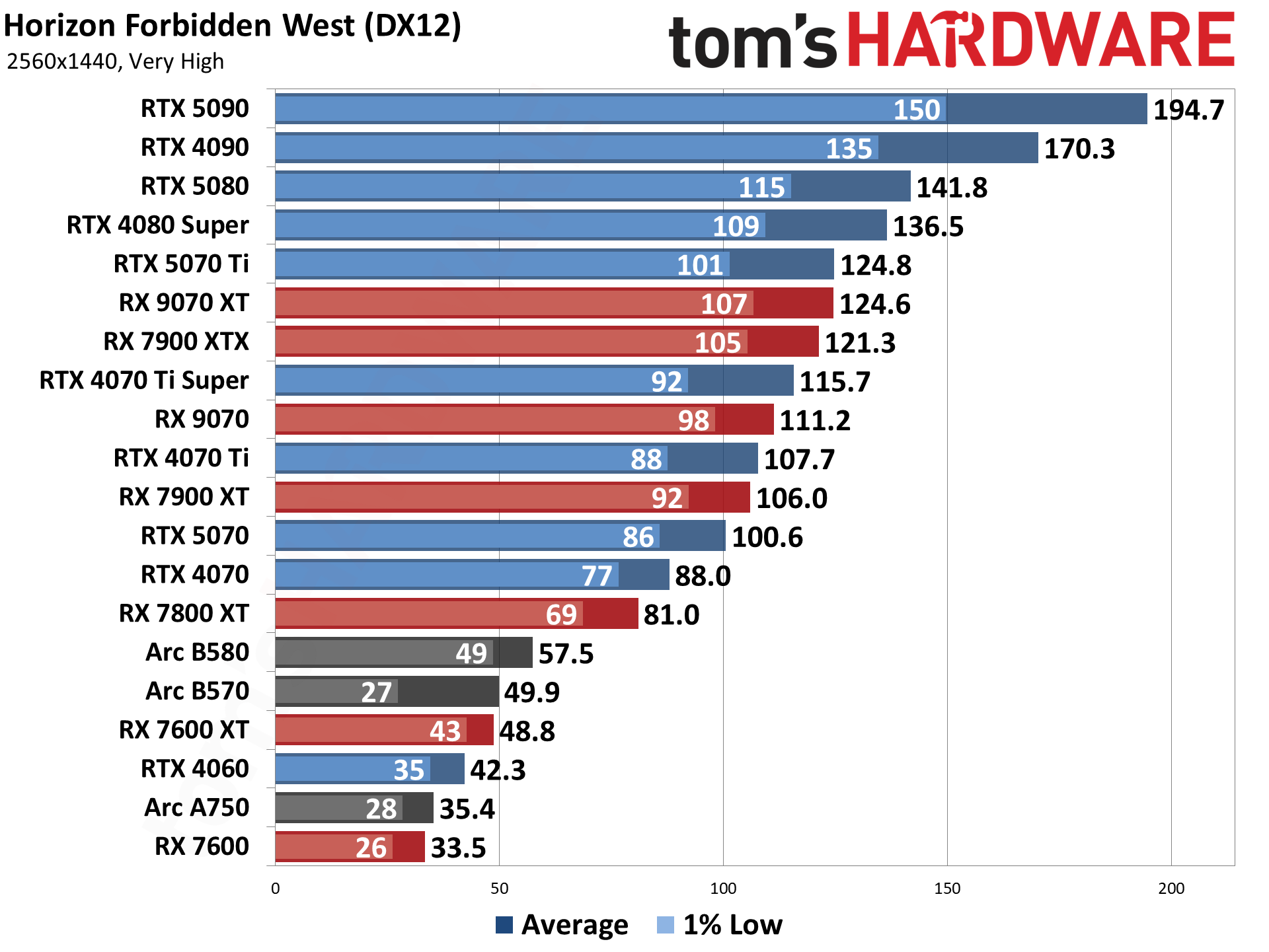
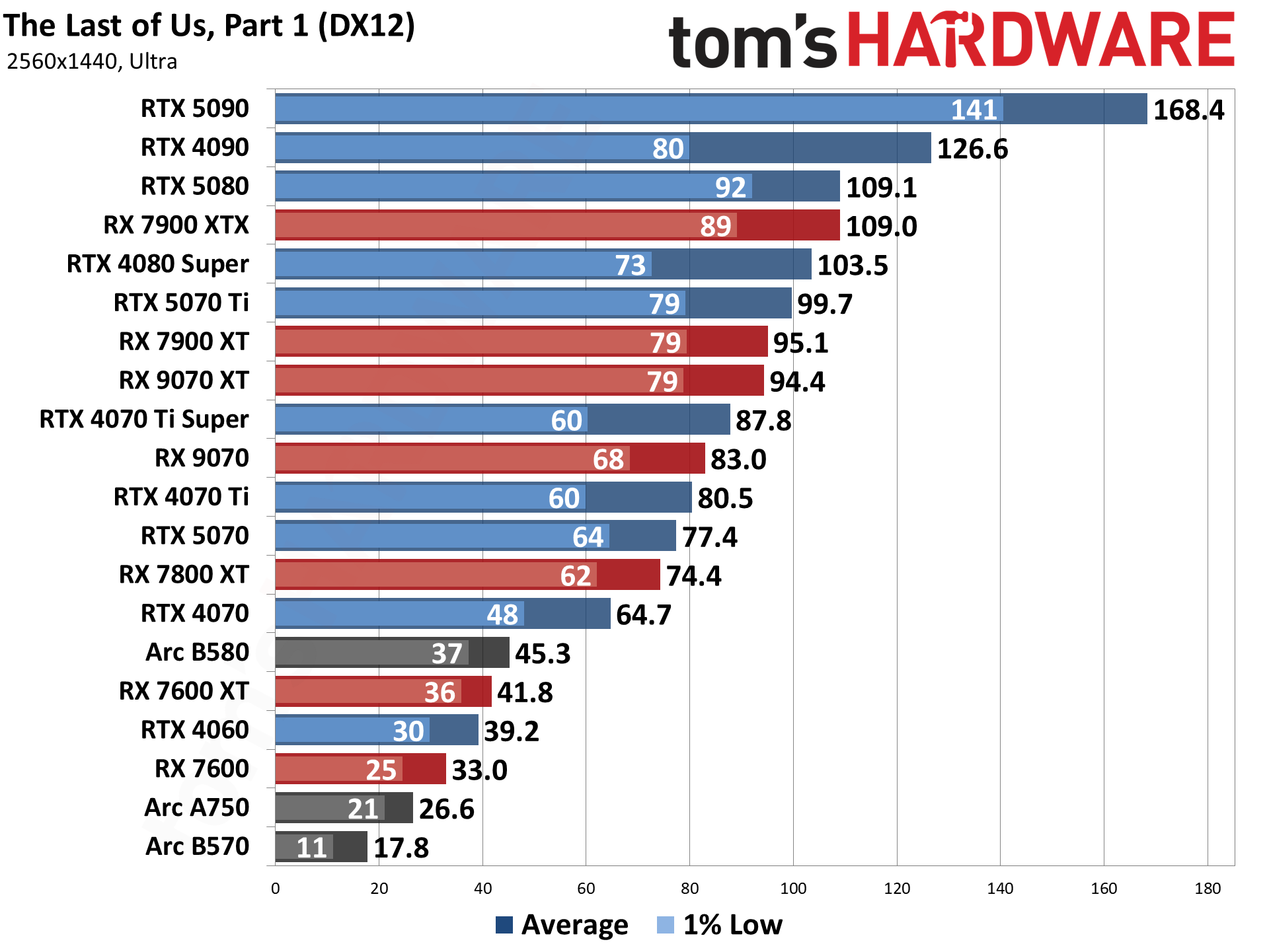
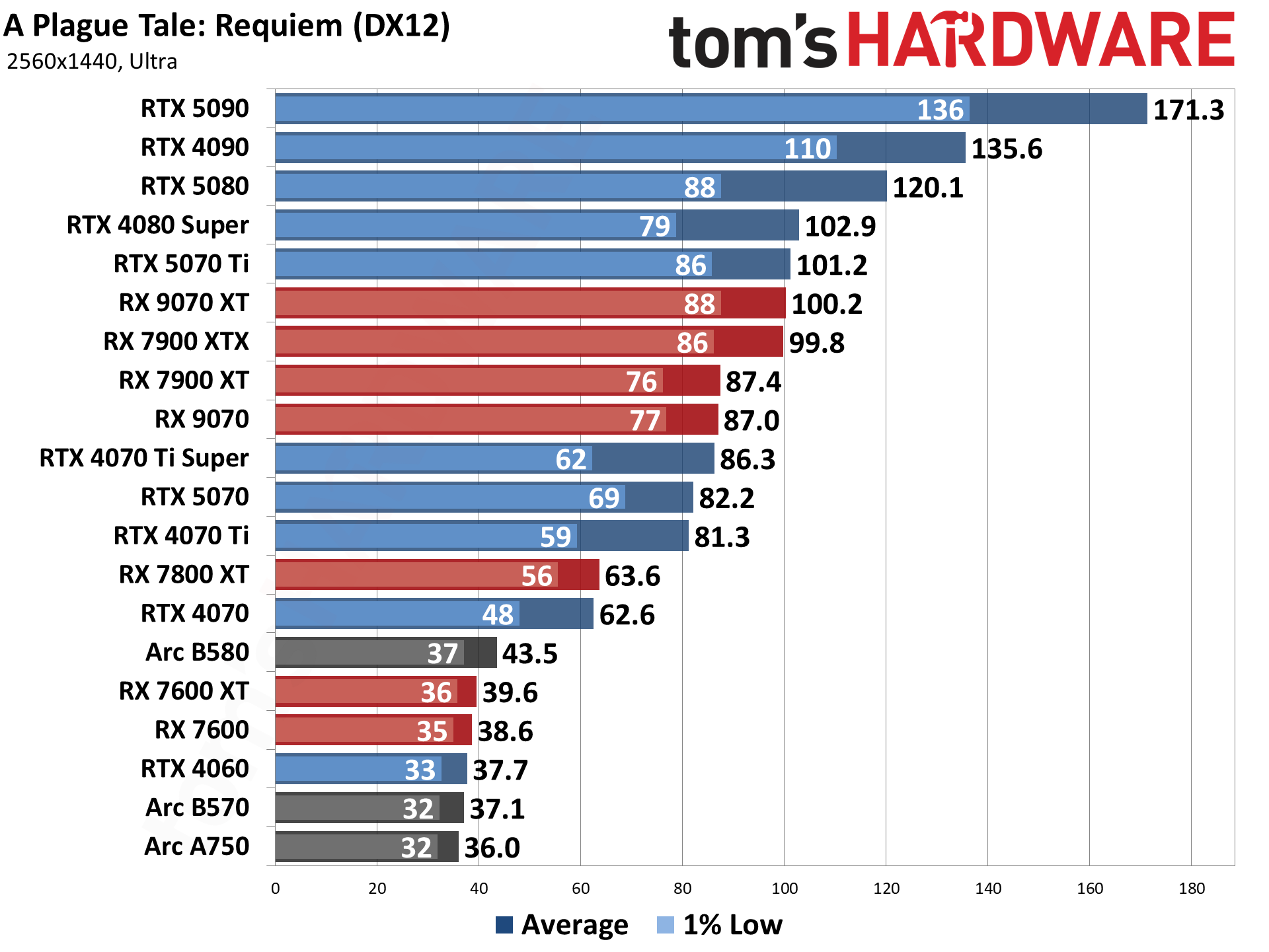
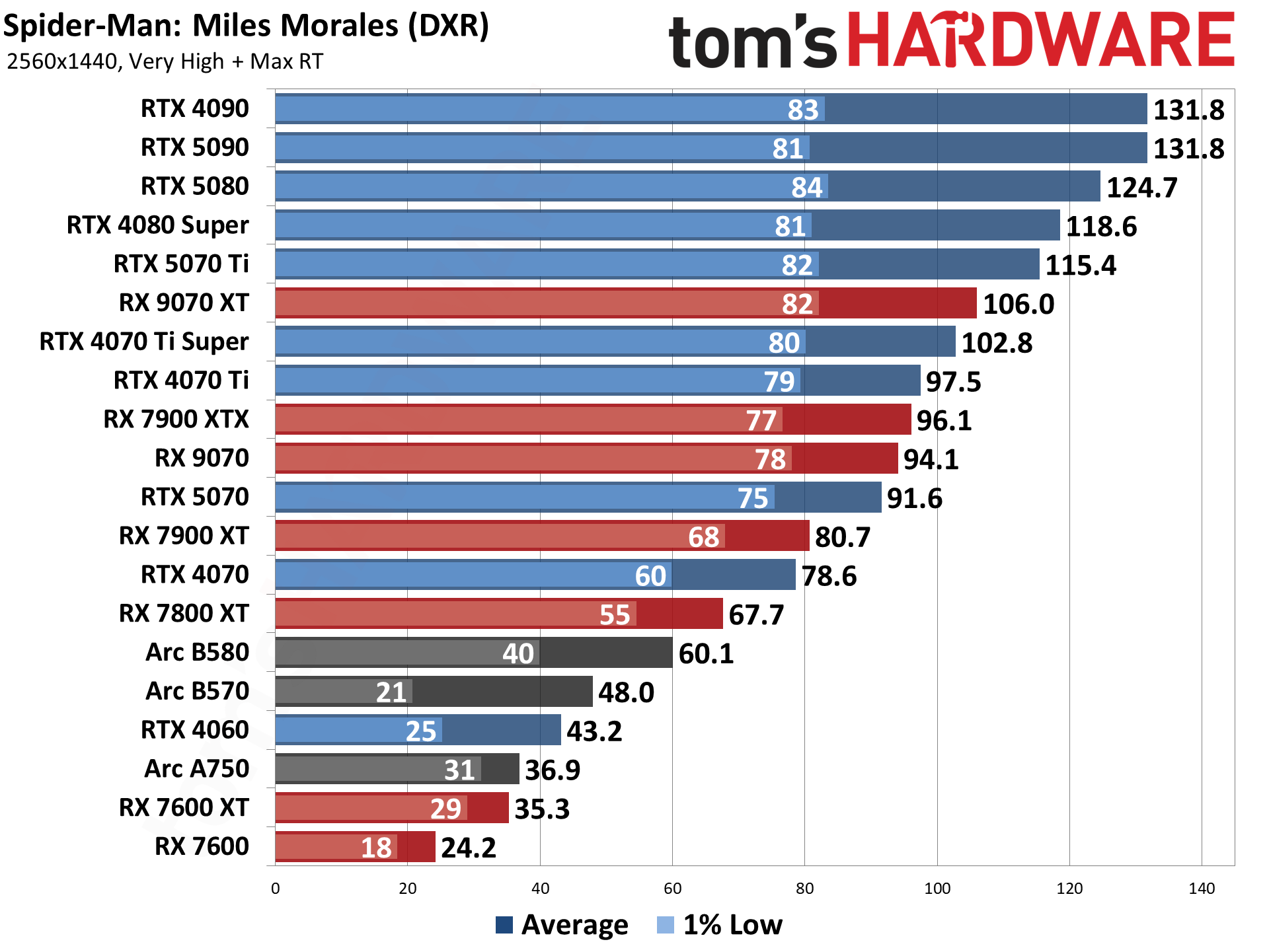
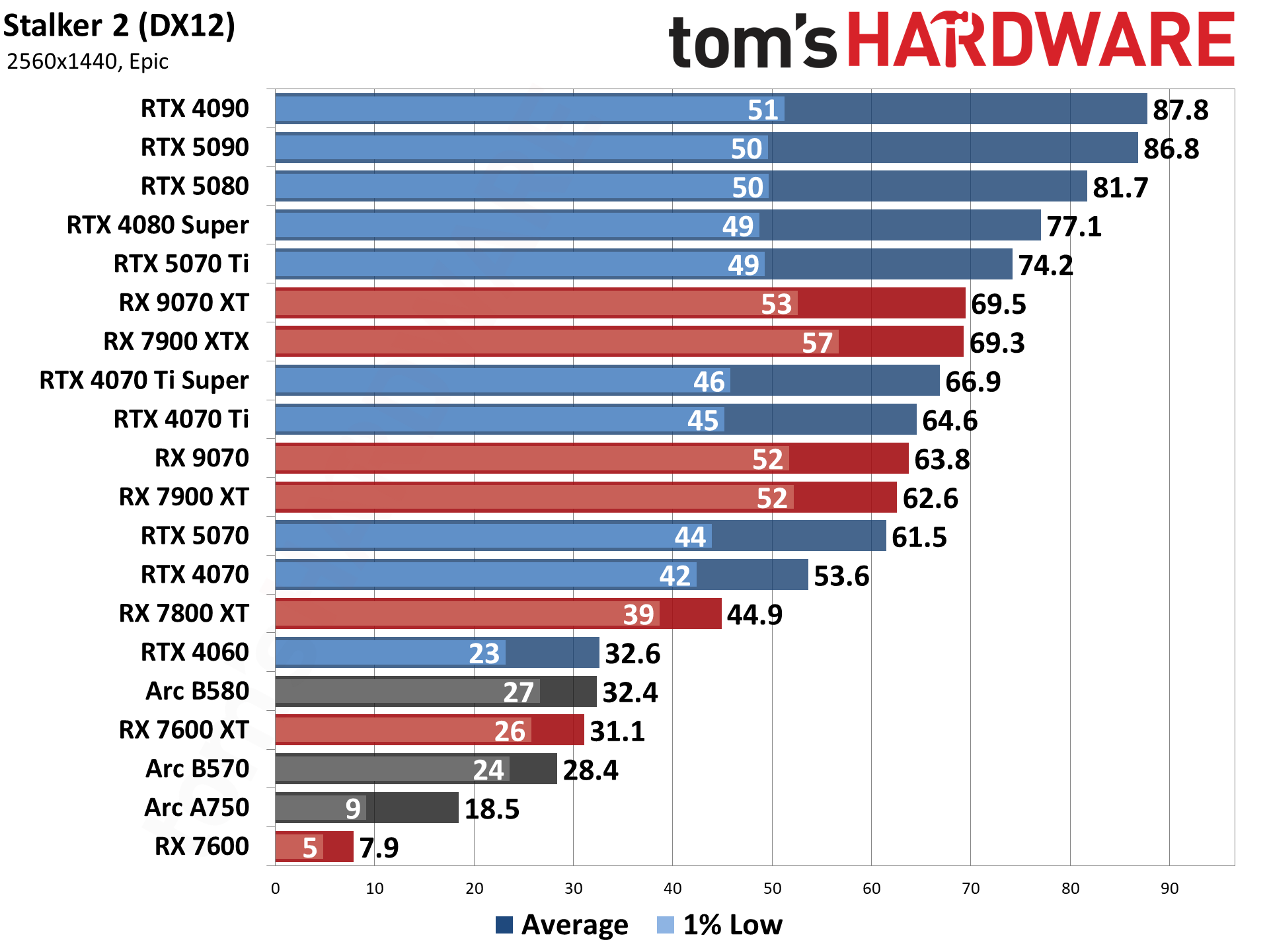
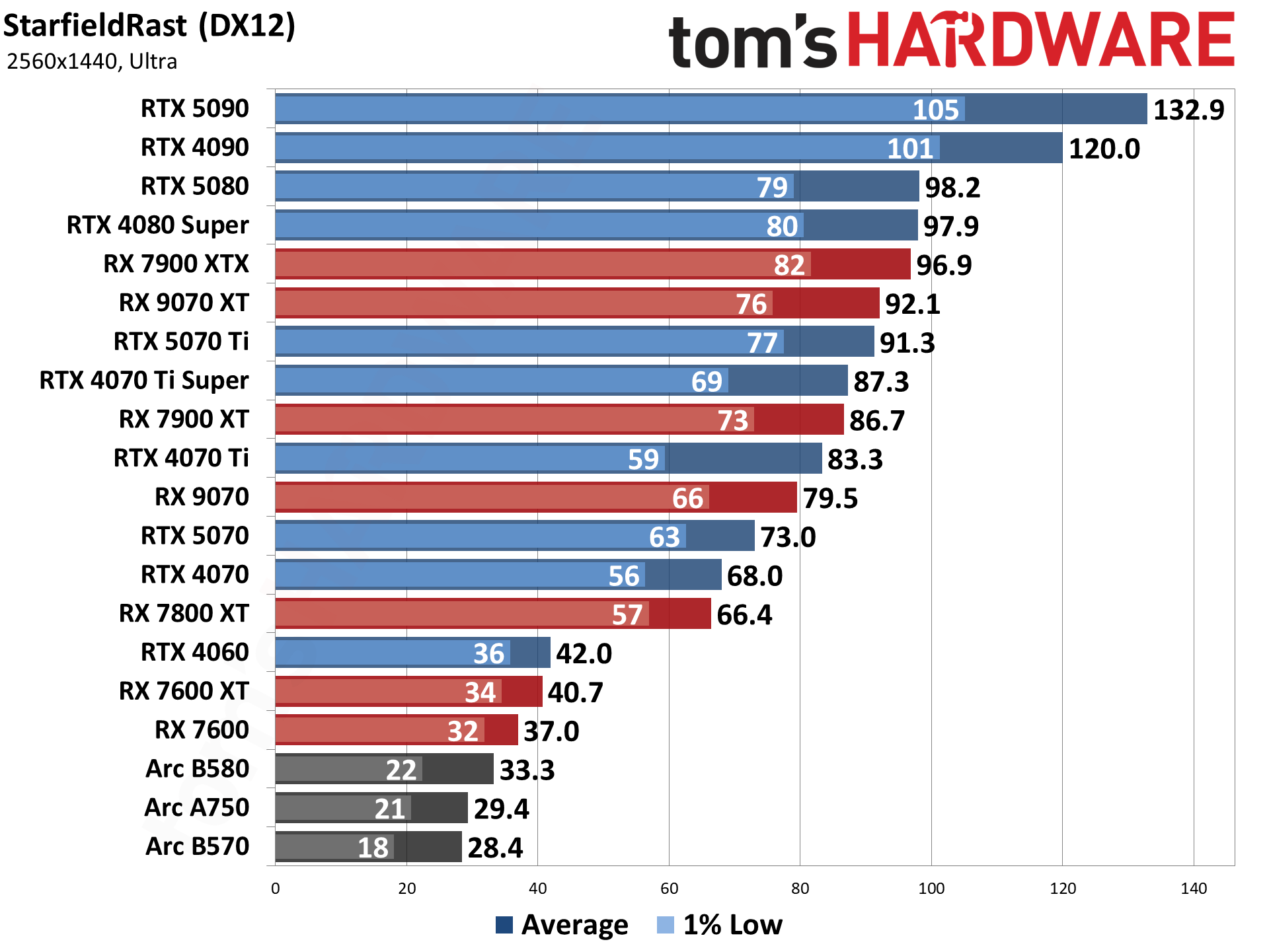
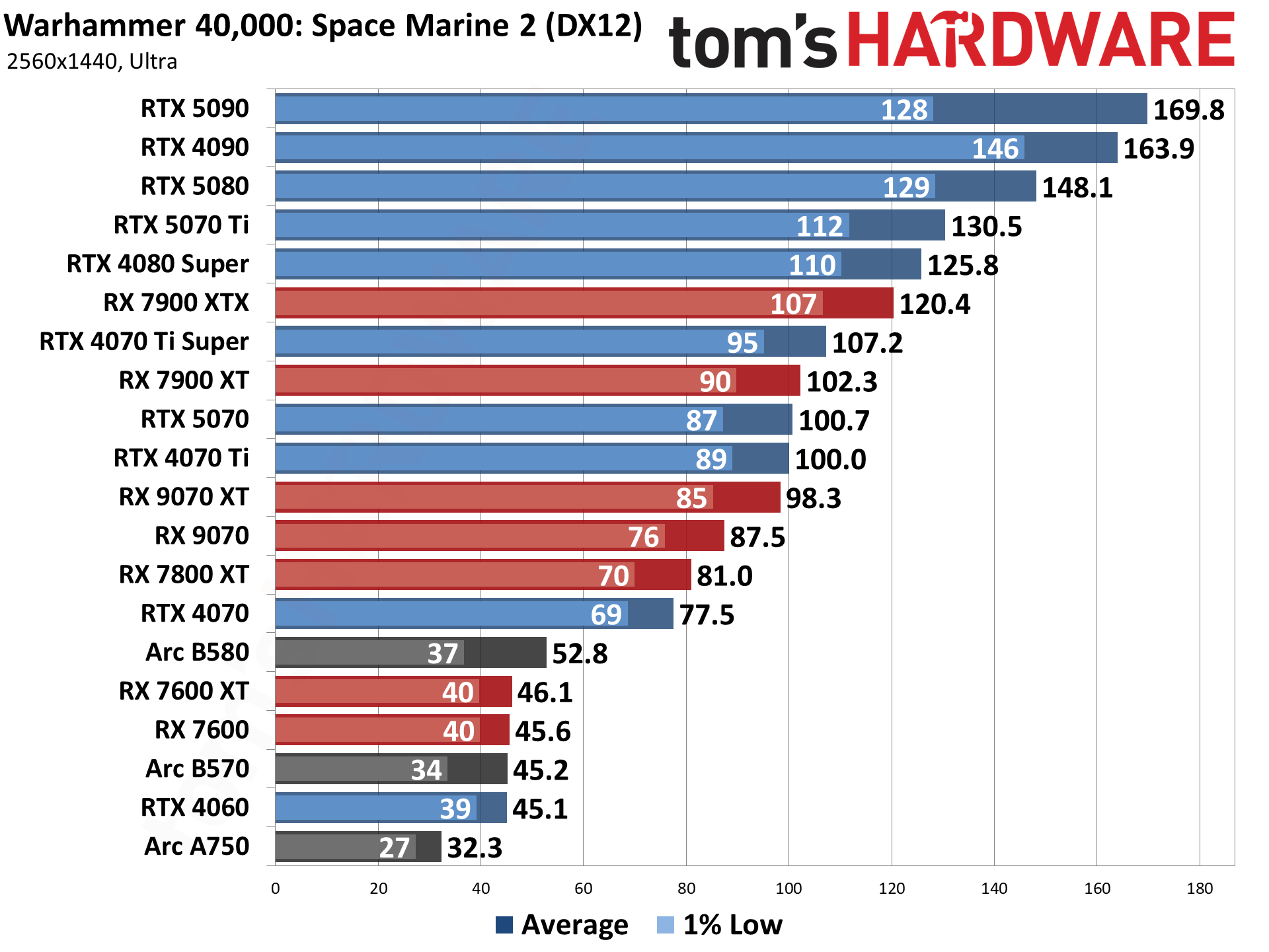
Best Graphics Cards — 4K Ultra
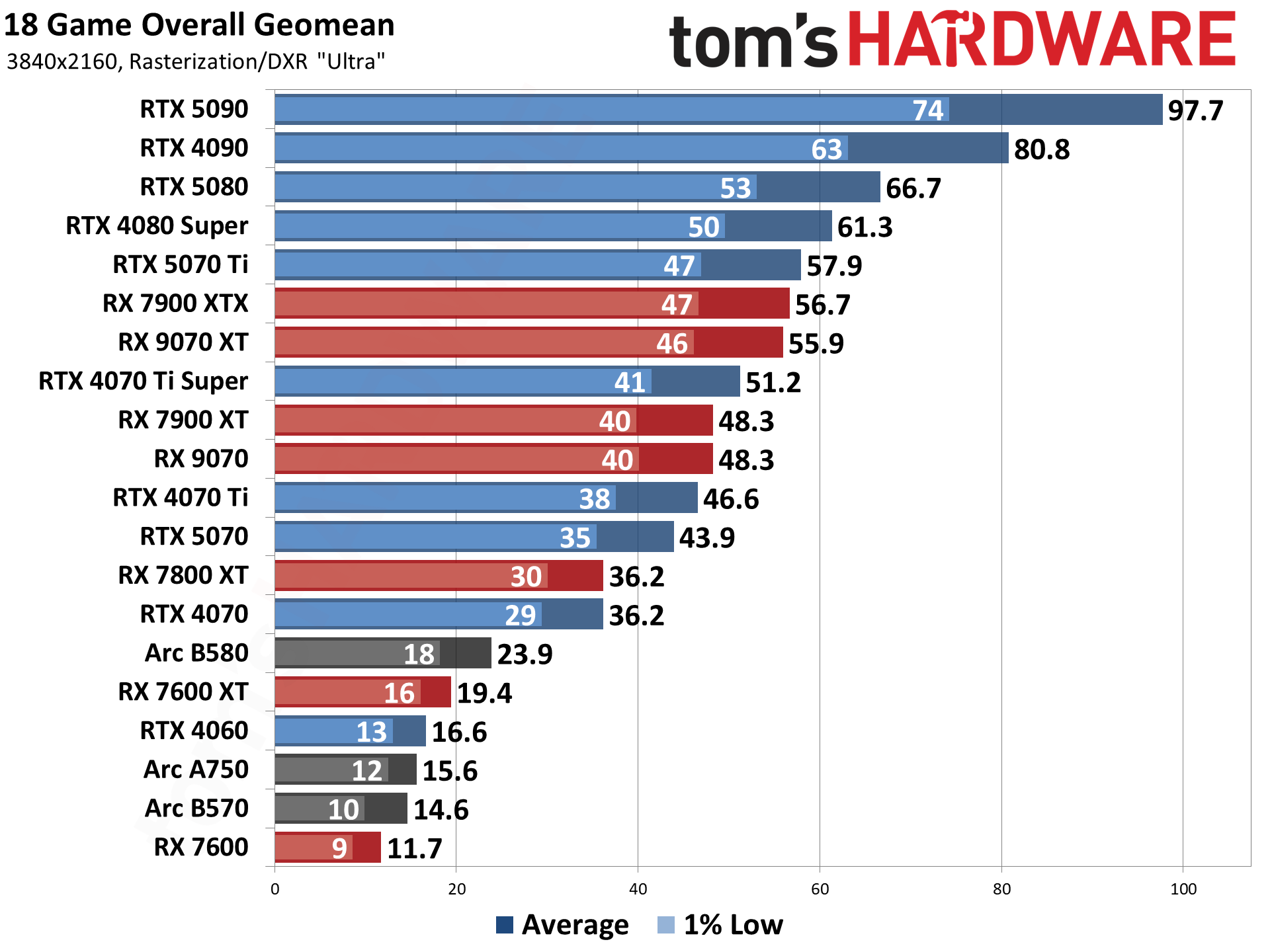
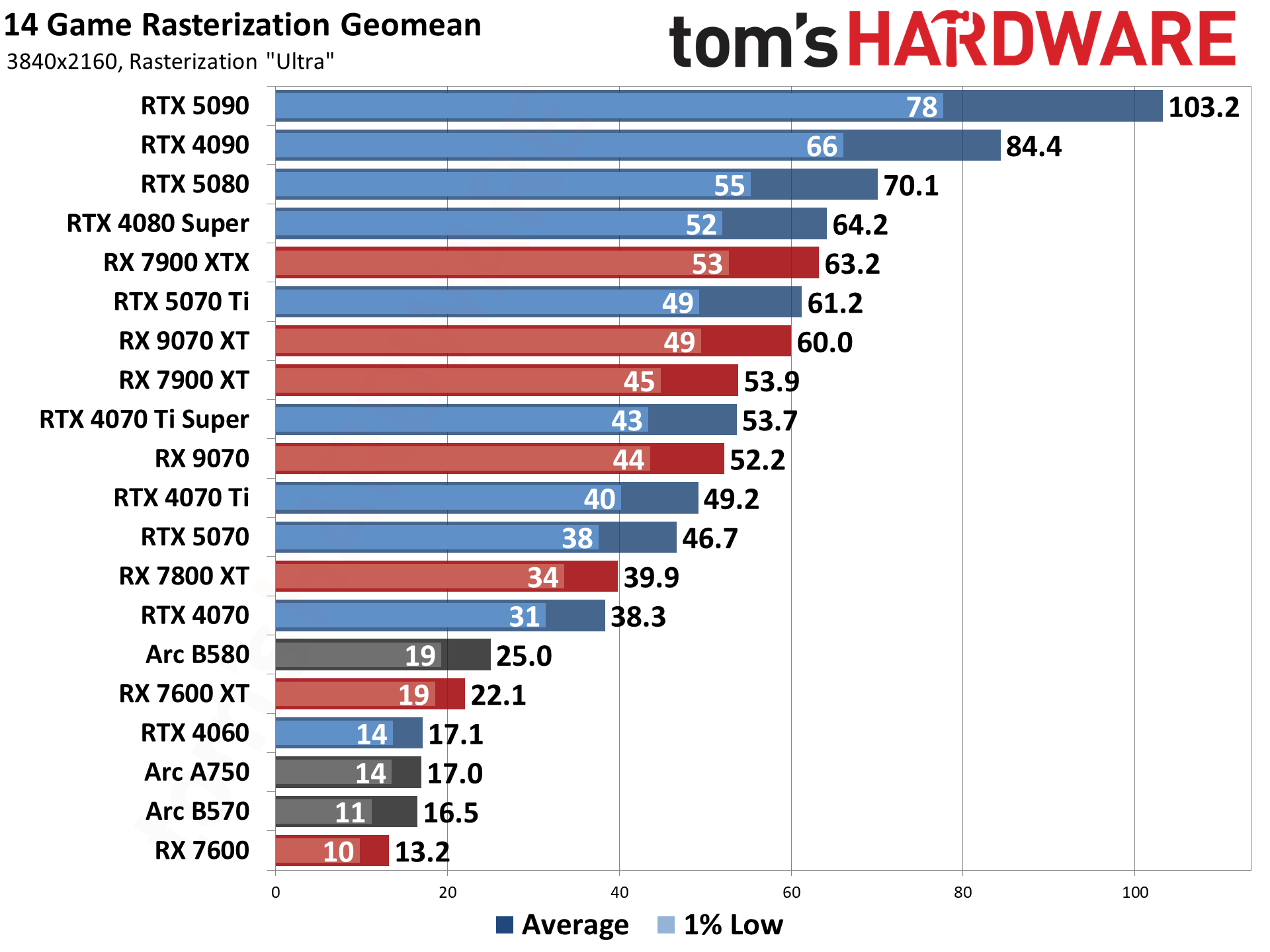
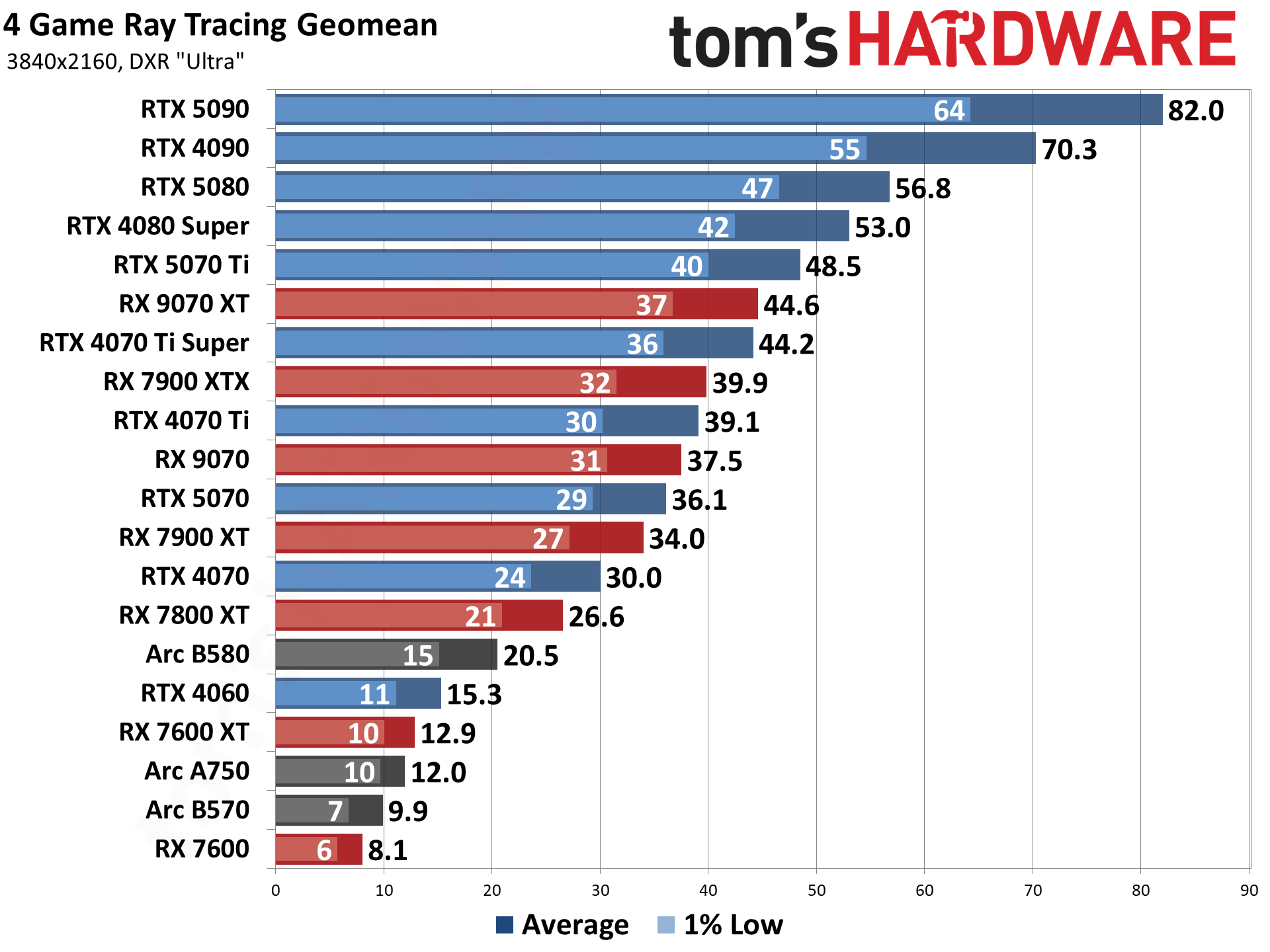
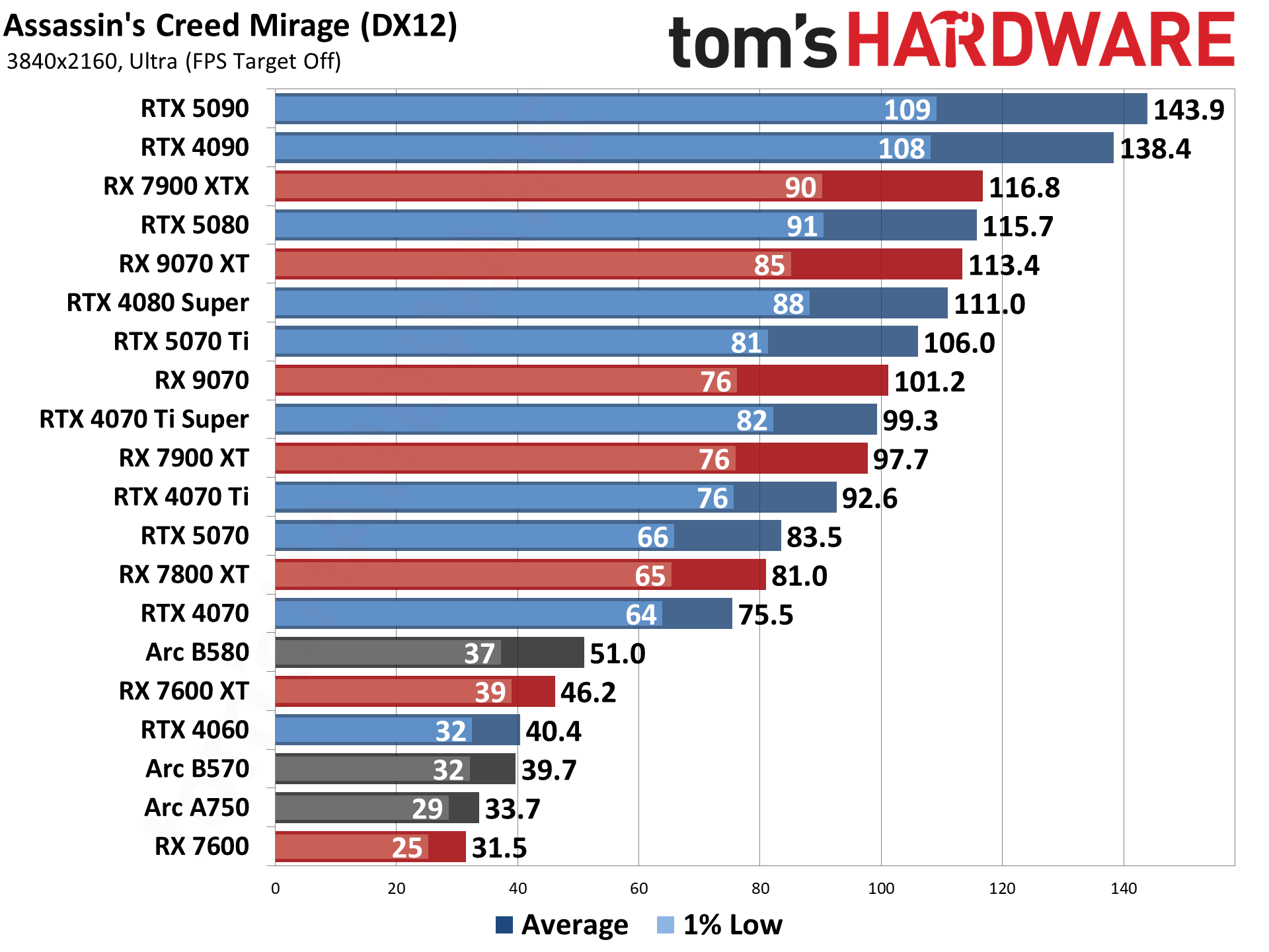
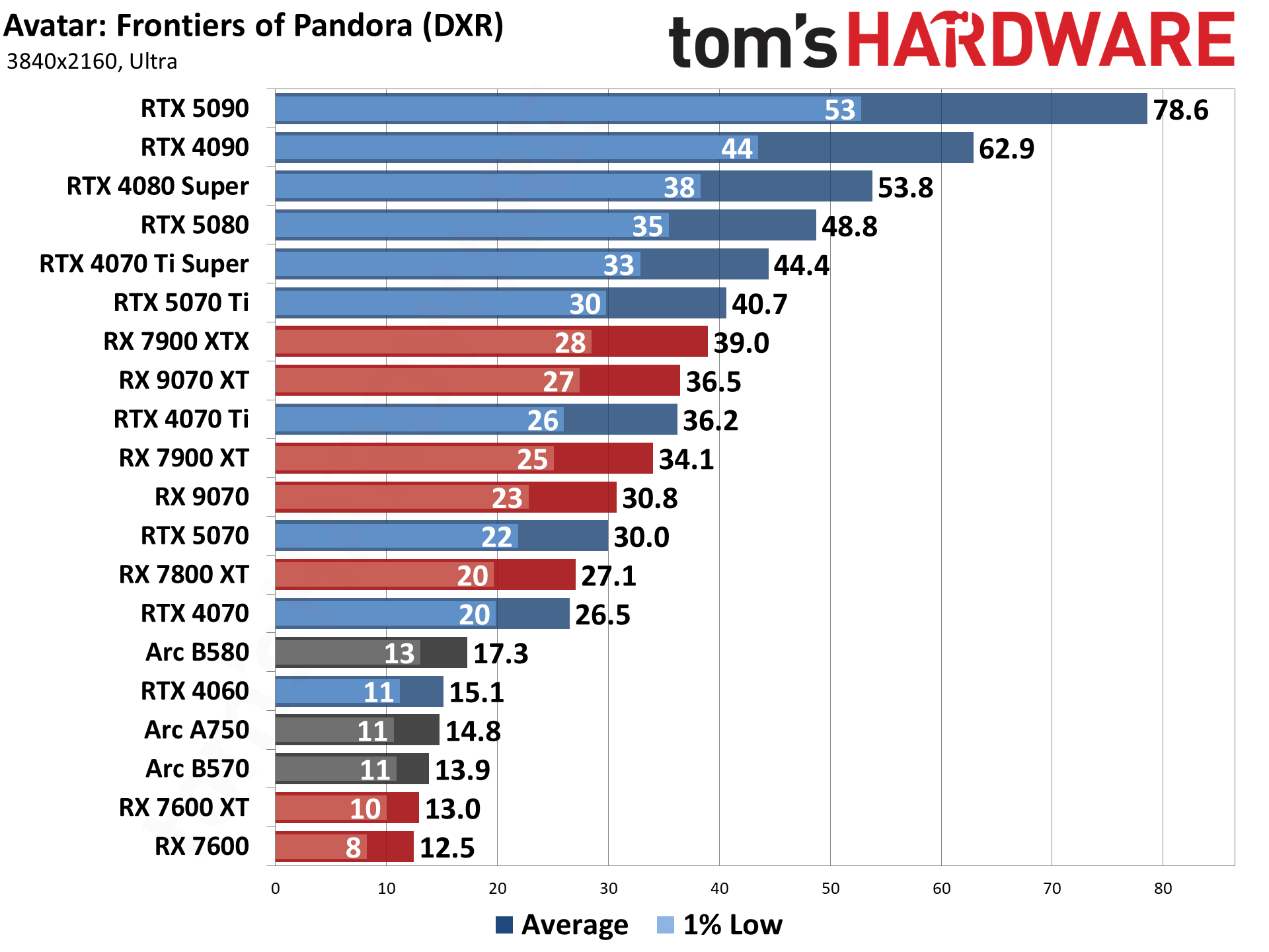
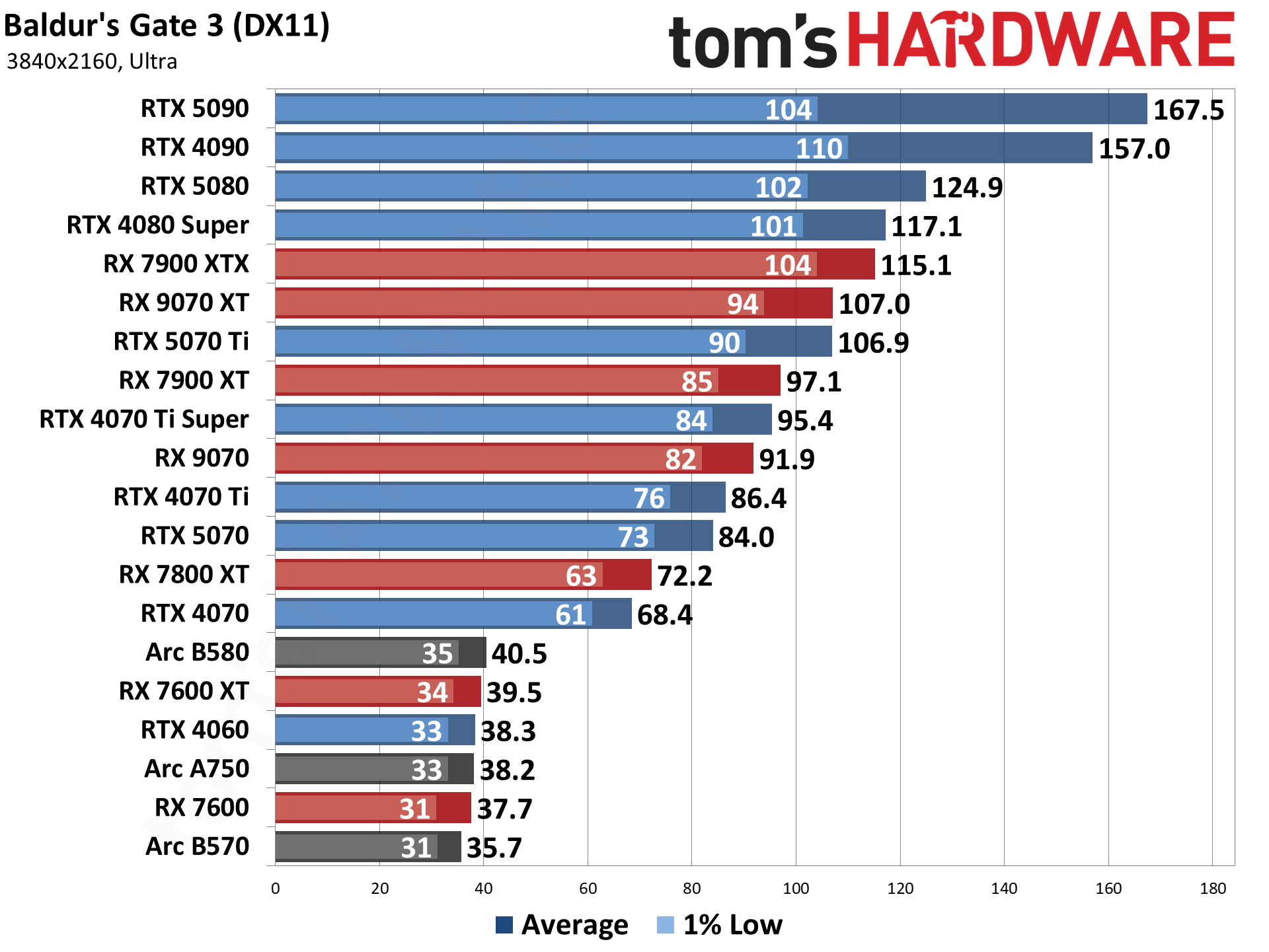
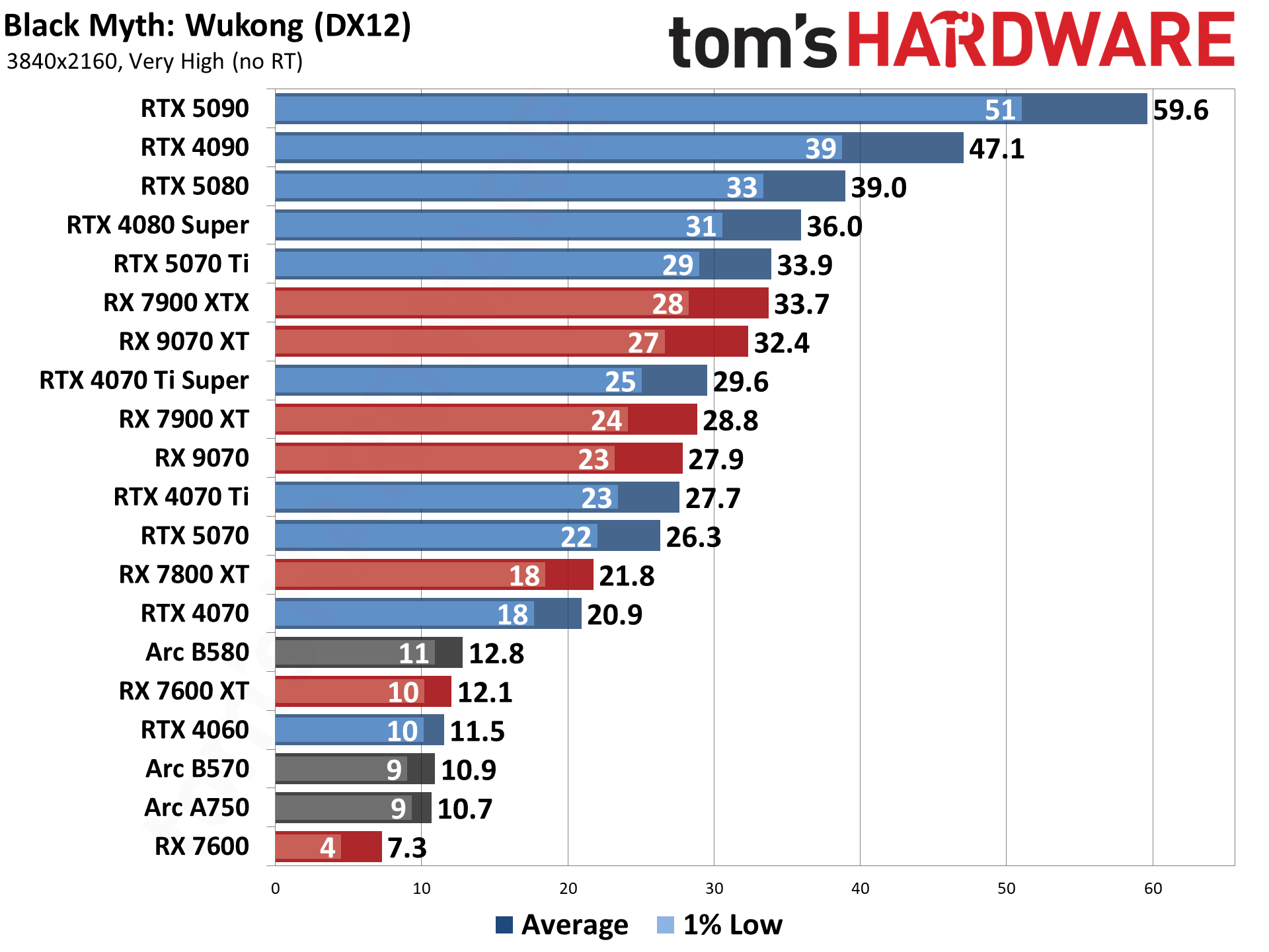
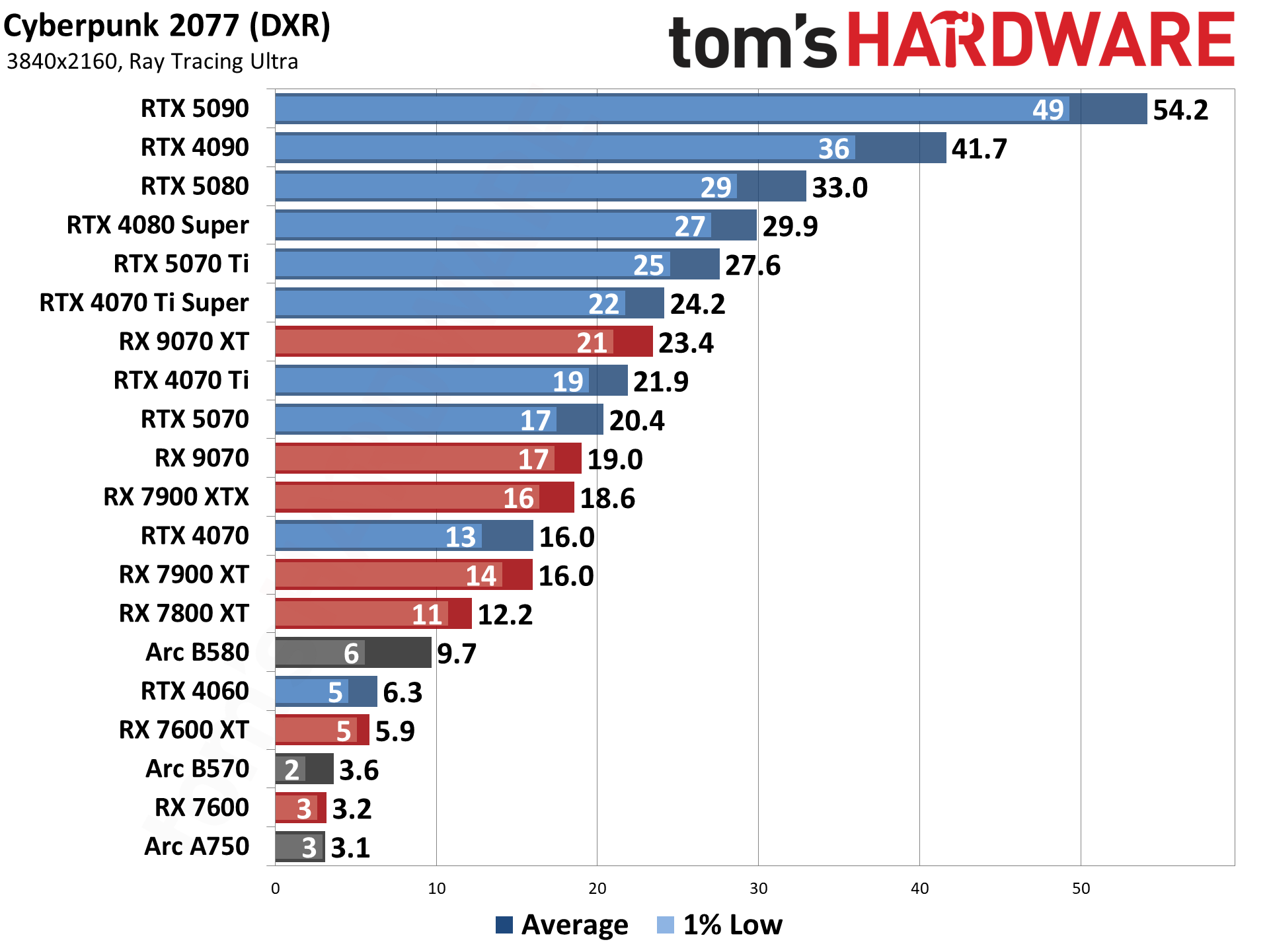
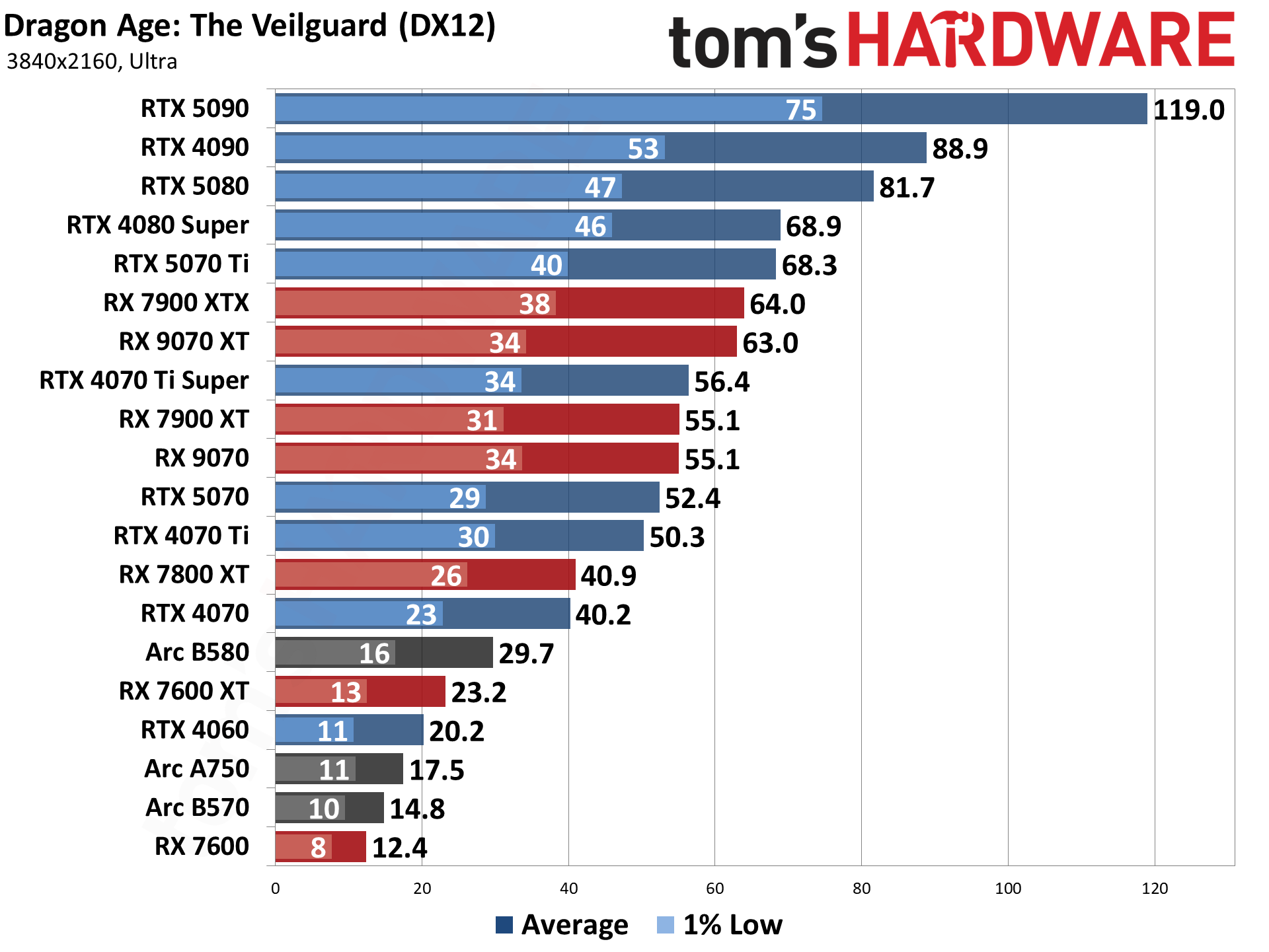
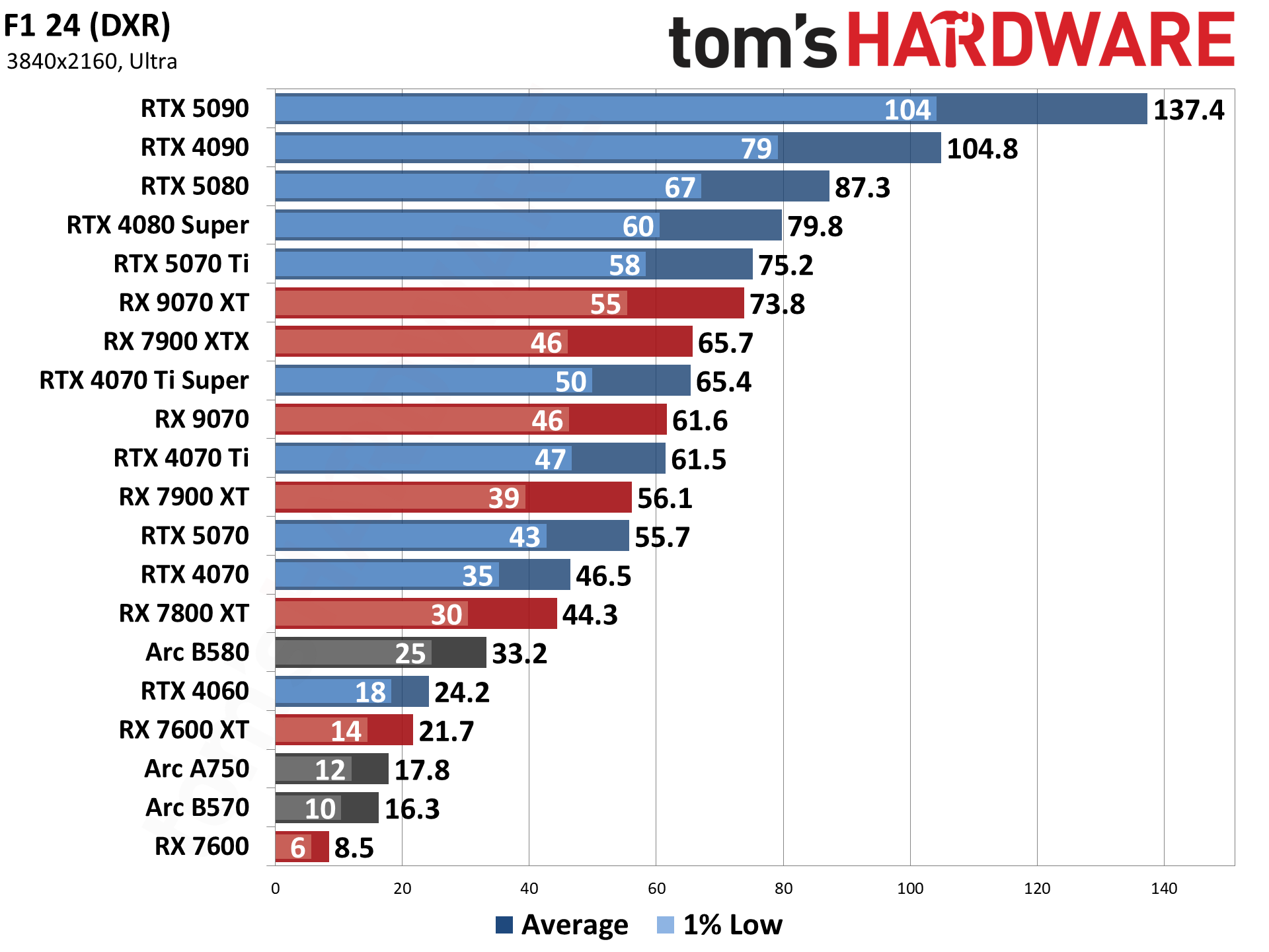
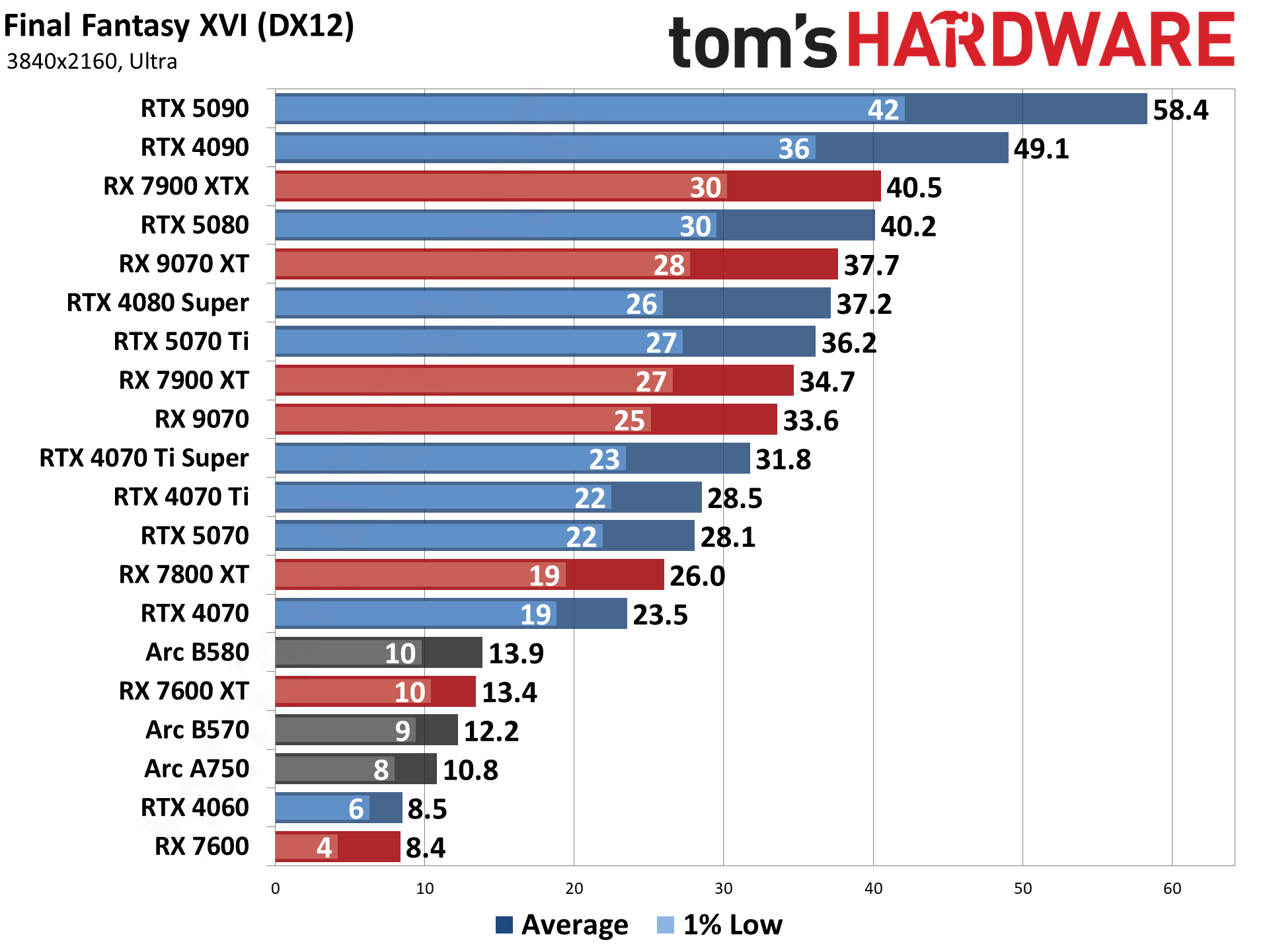
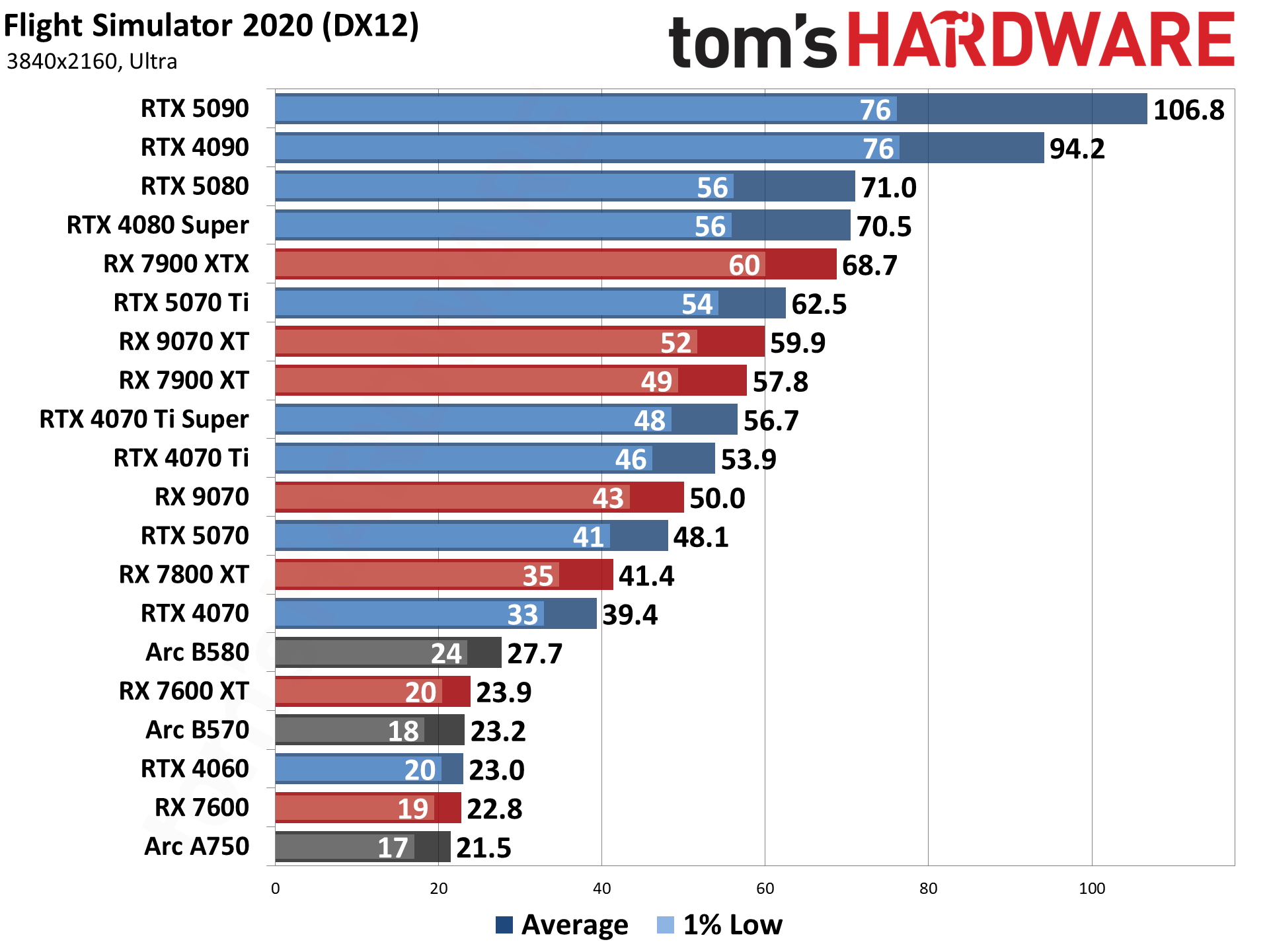
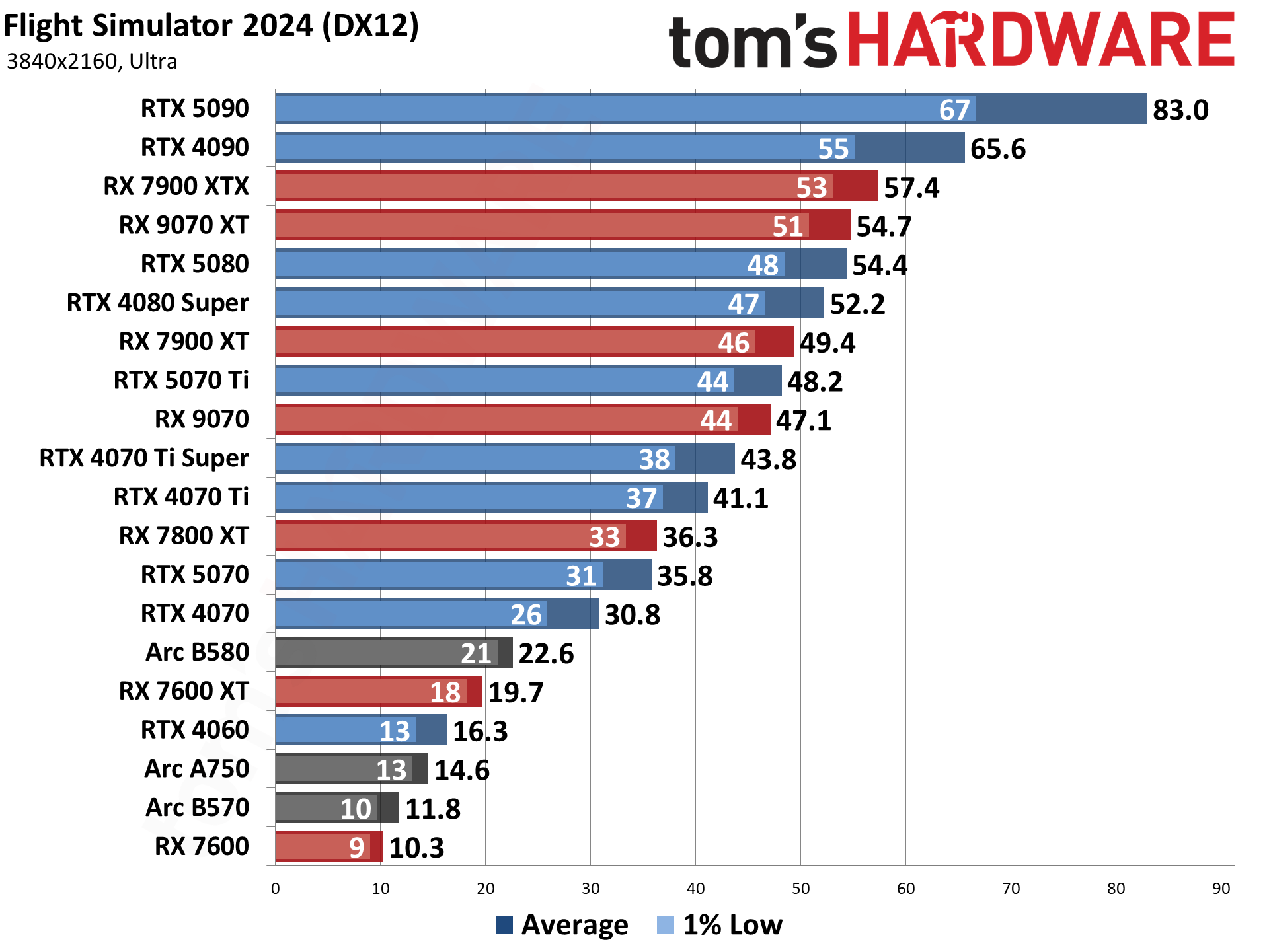
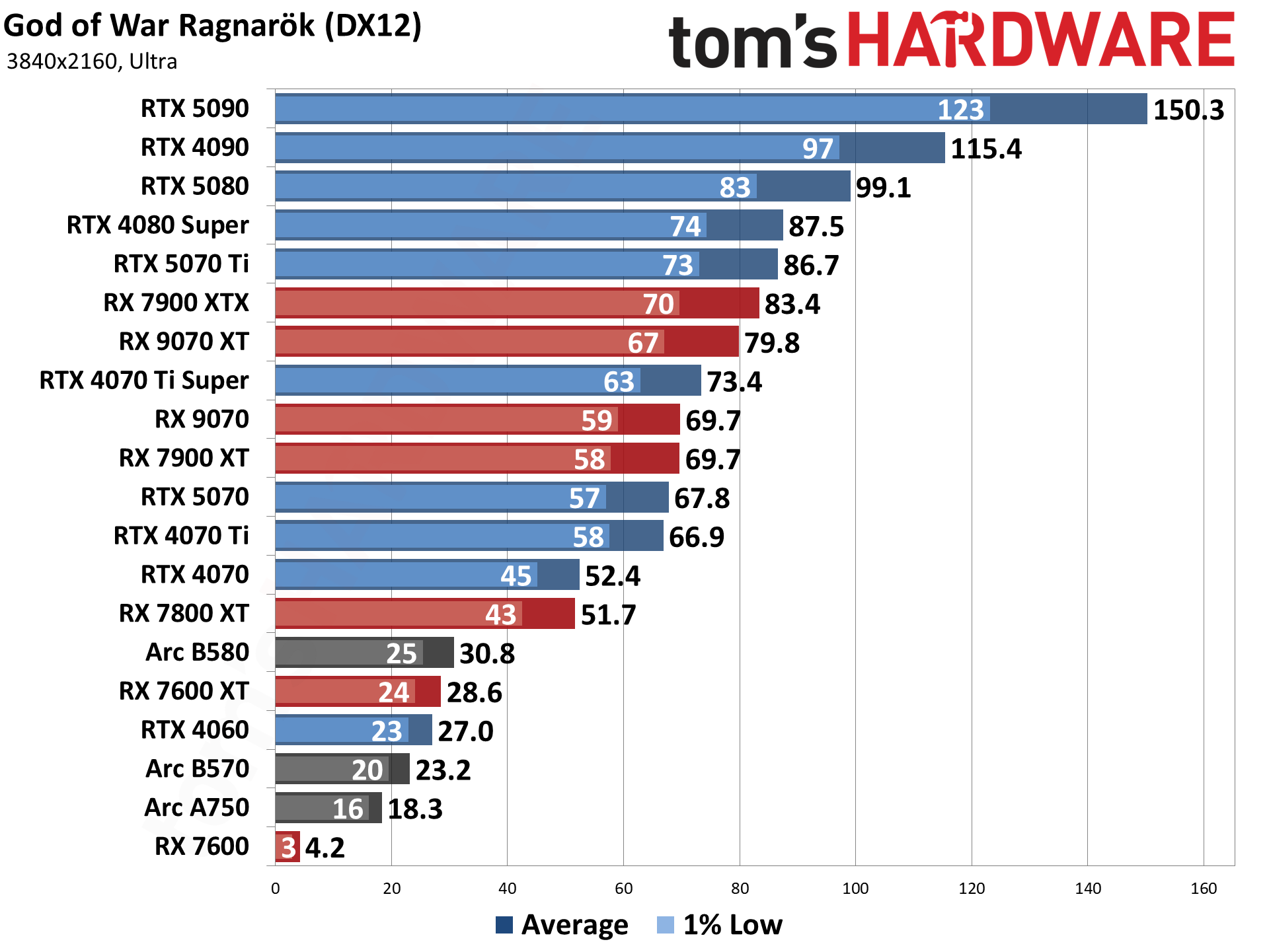
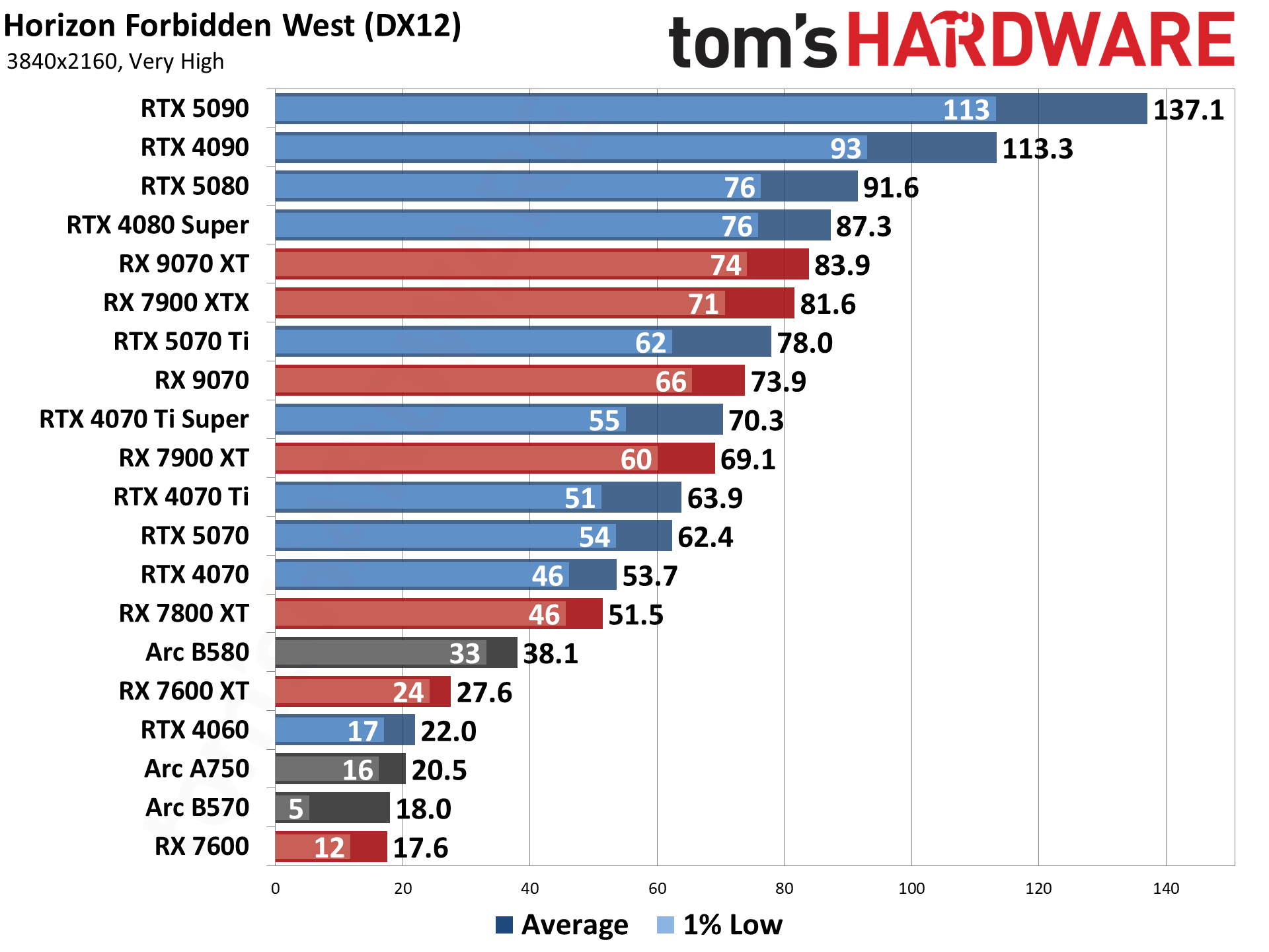
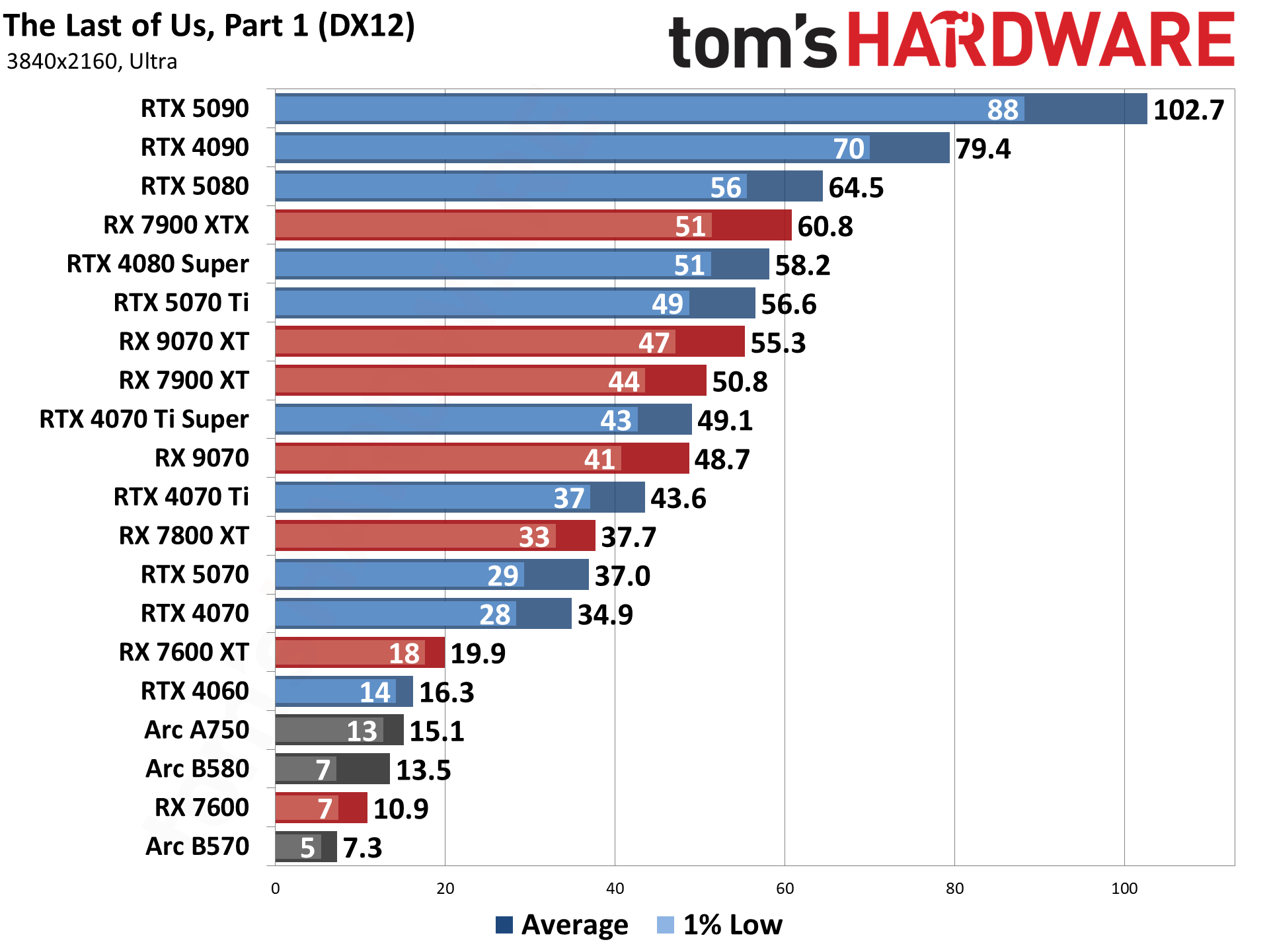
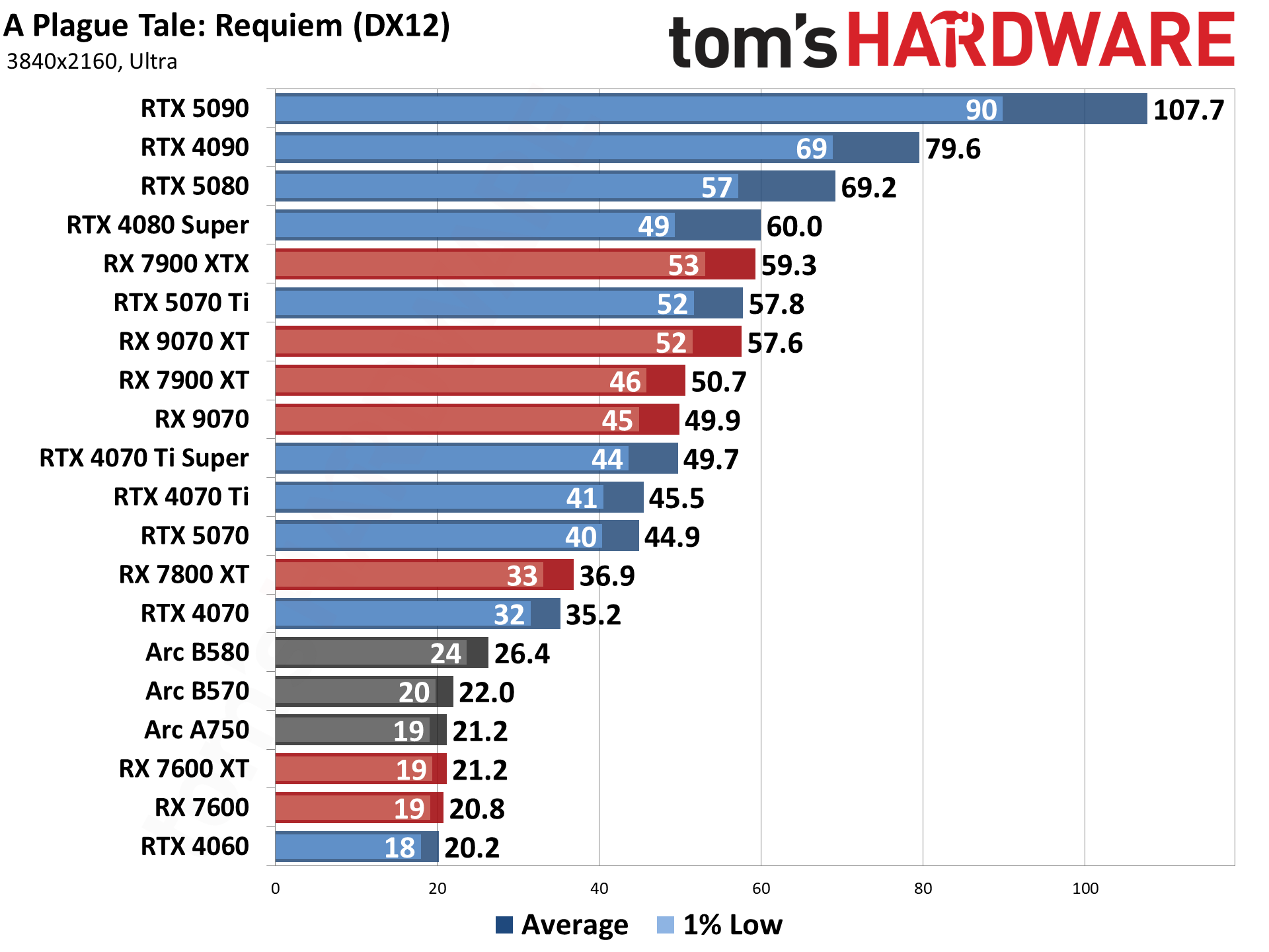
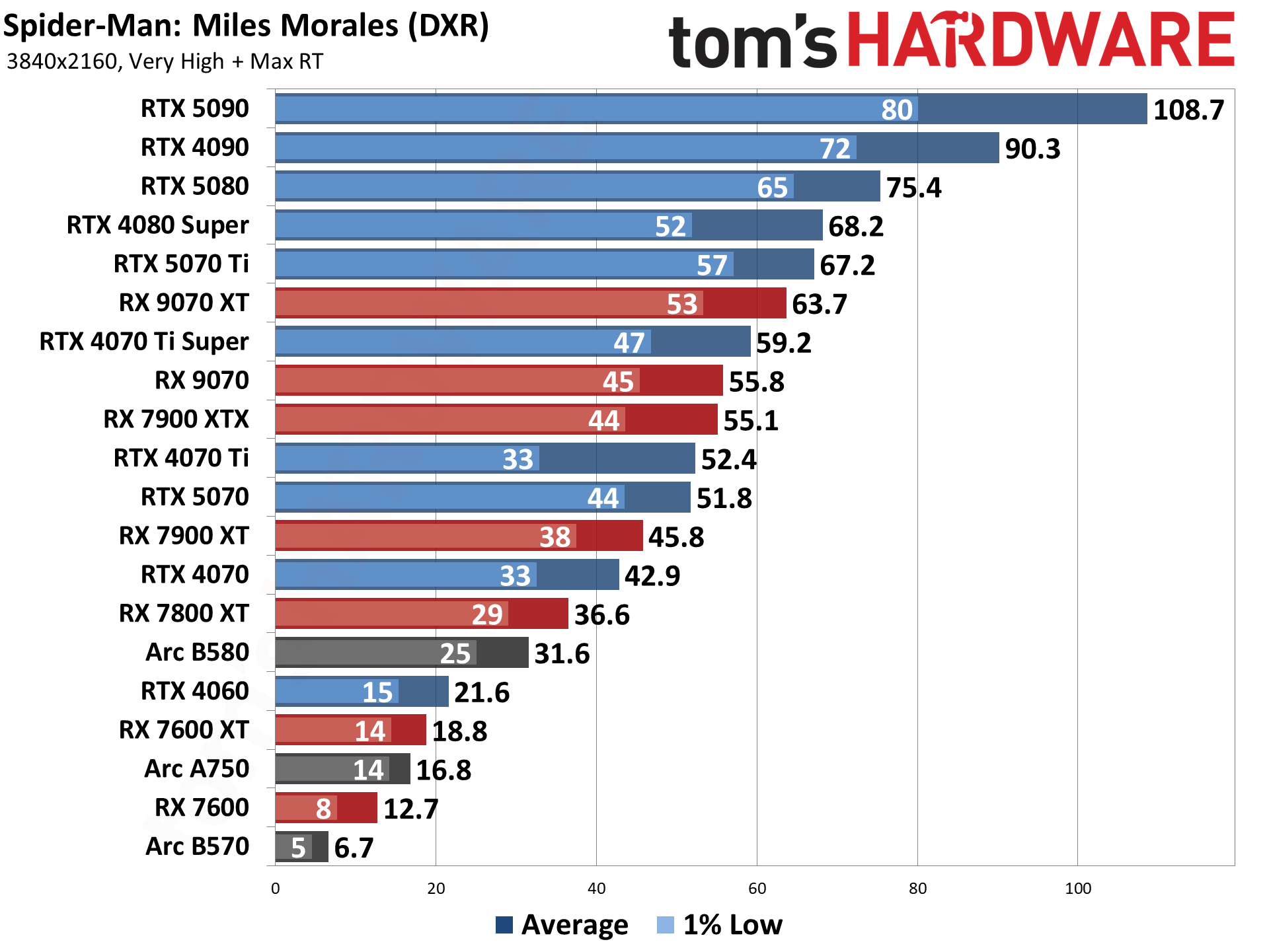
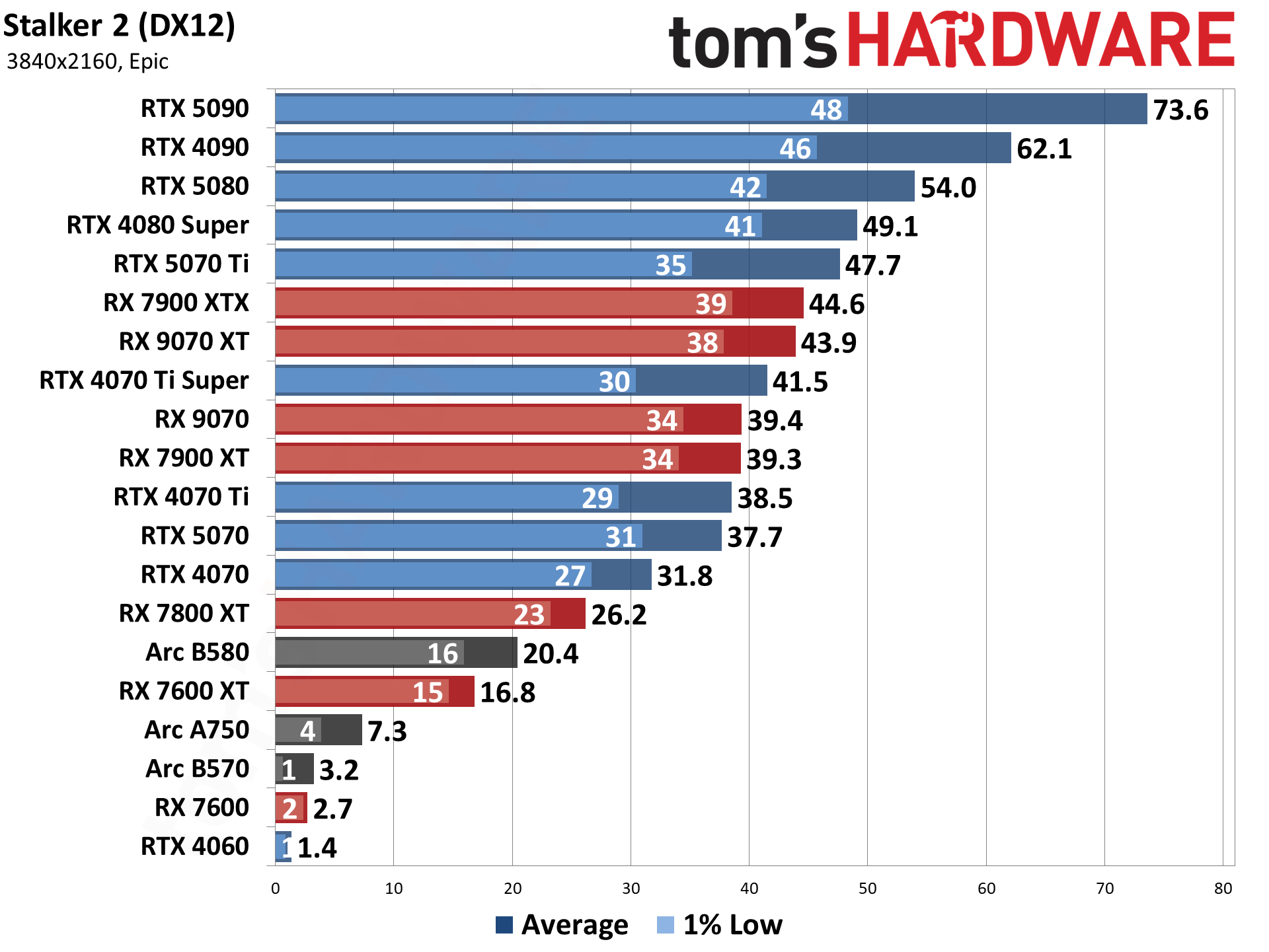
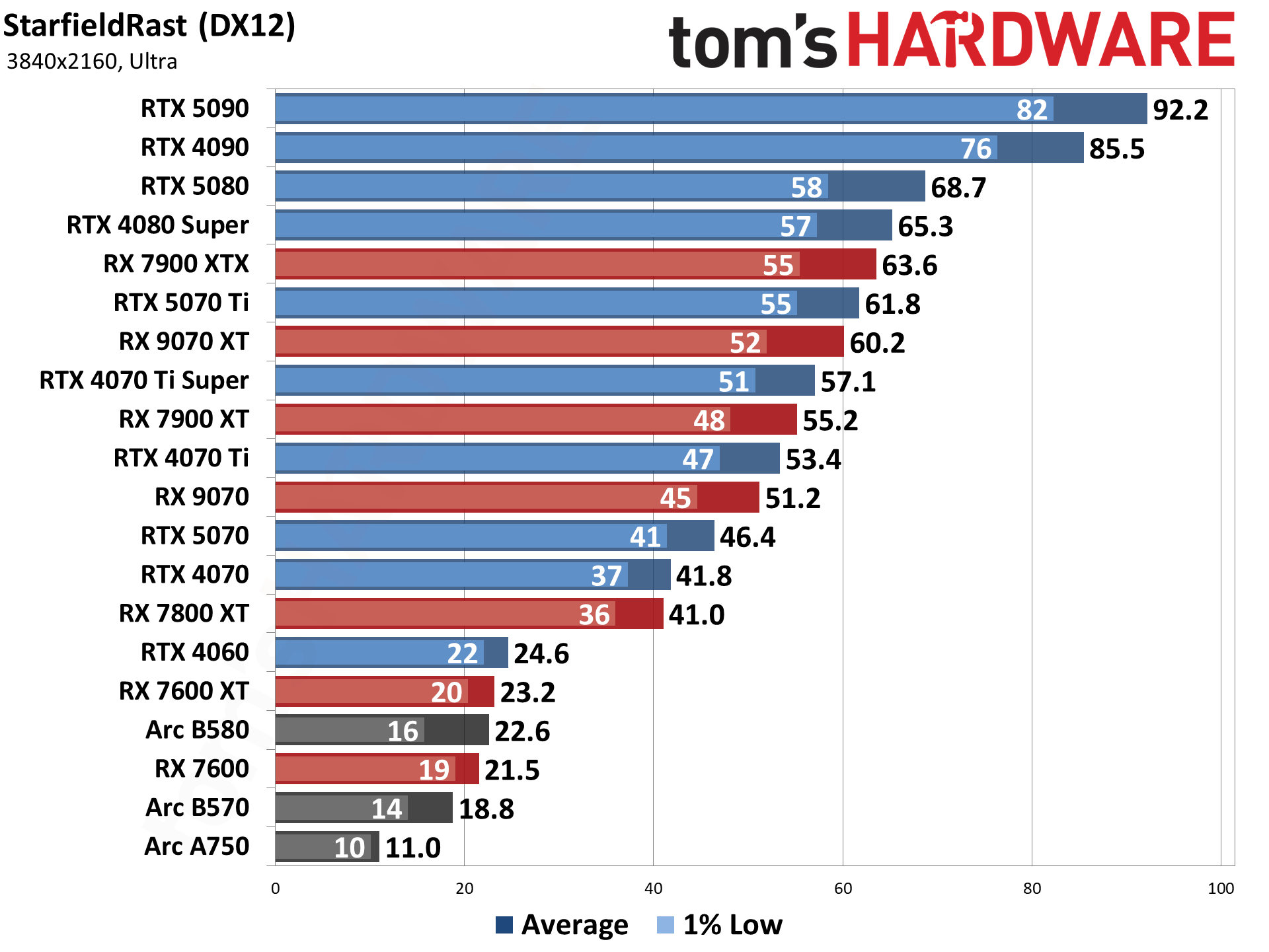

Best Graphics Cards — Power, Clocks, and Temperatures
Most of our discussion has focused on performance, but for those interested in power and other aspects of the GPUs, here are the appropriate charts. We'll run these from highest to lowest settings, as 4K ultra tends to be the most strenuous workload on most of these GPUs.
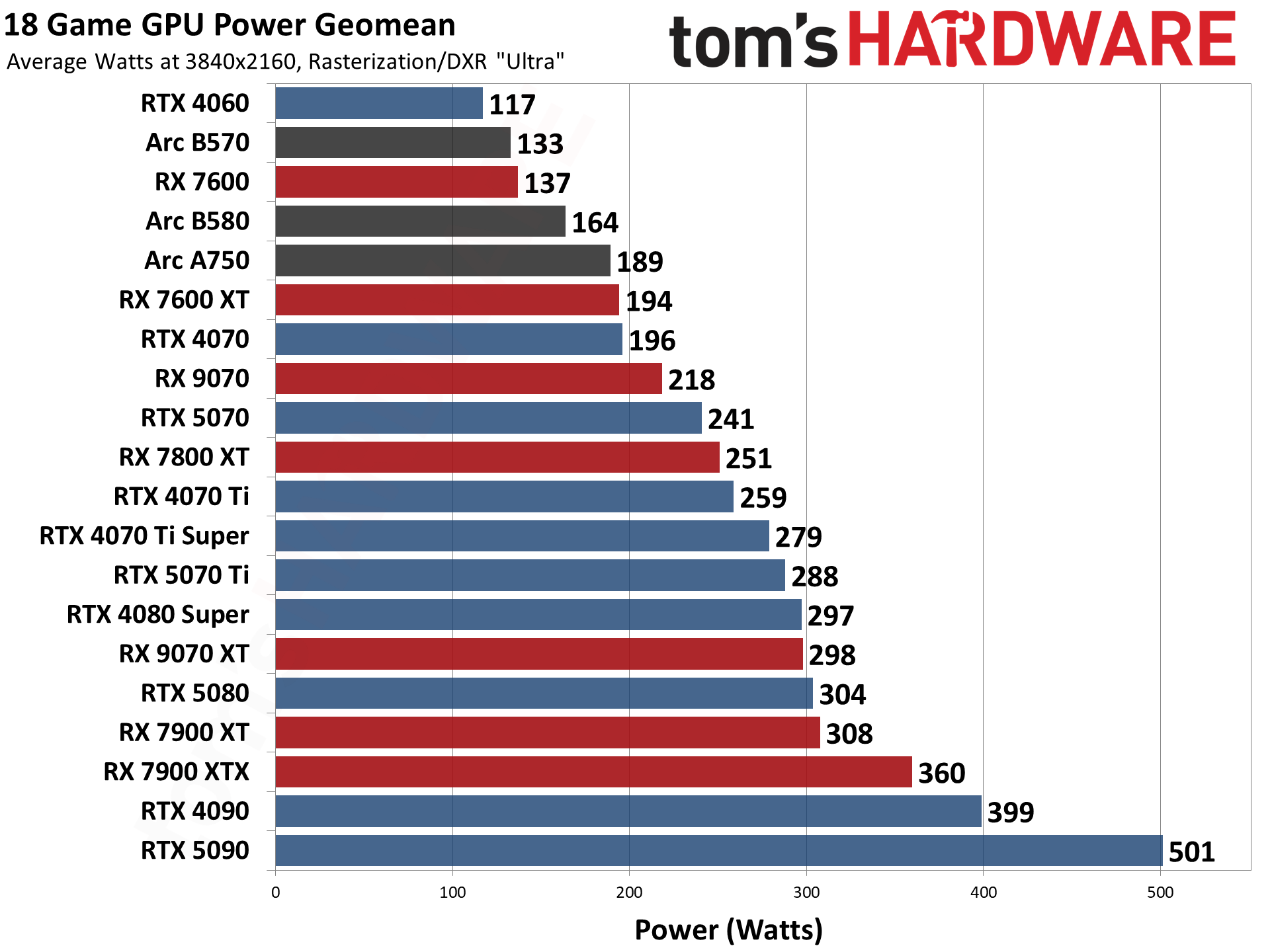
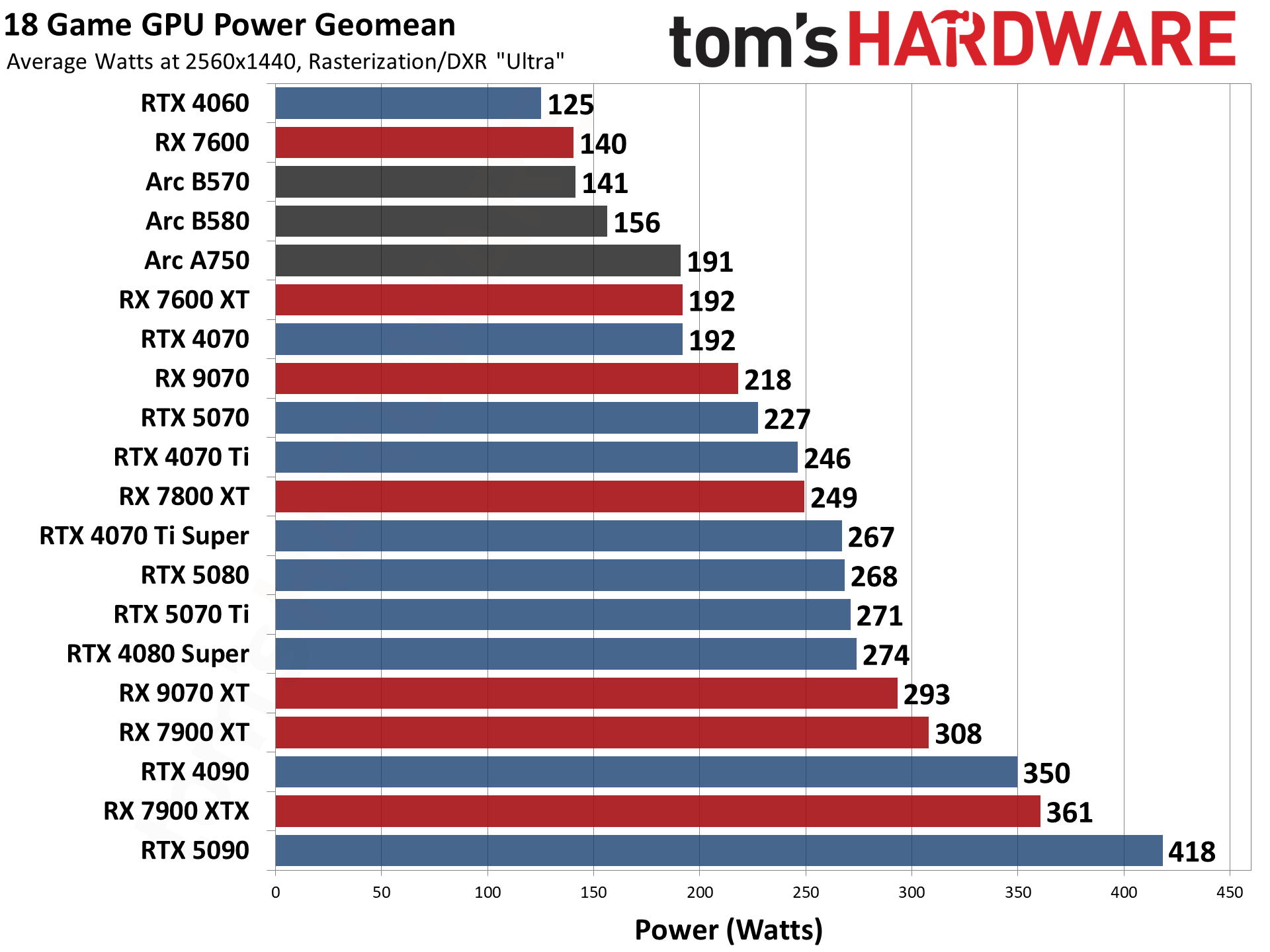
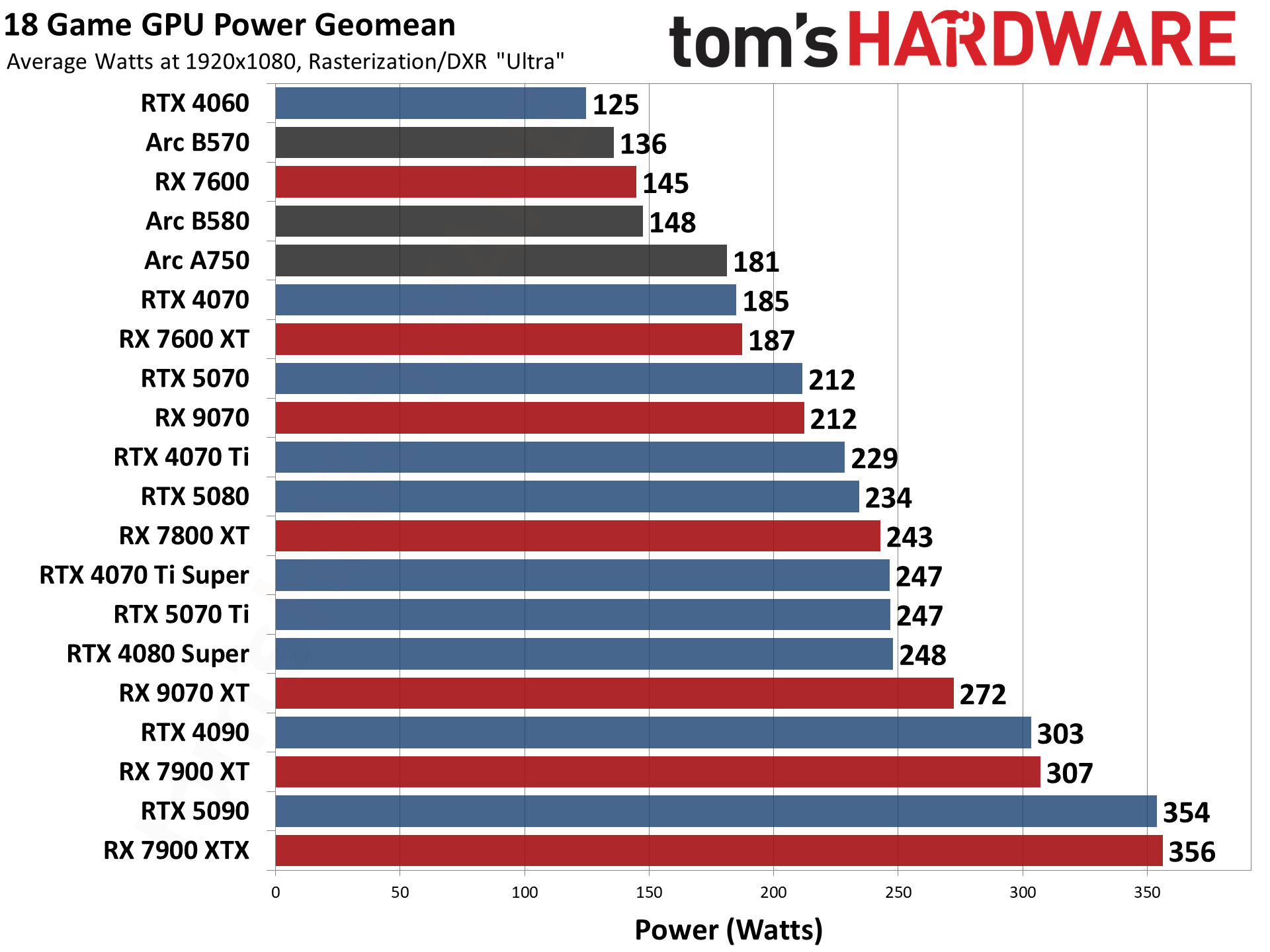
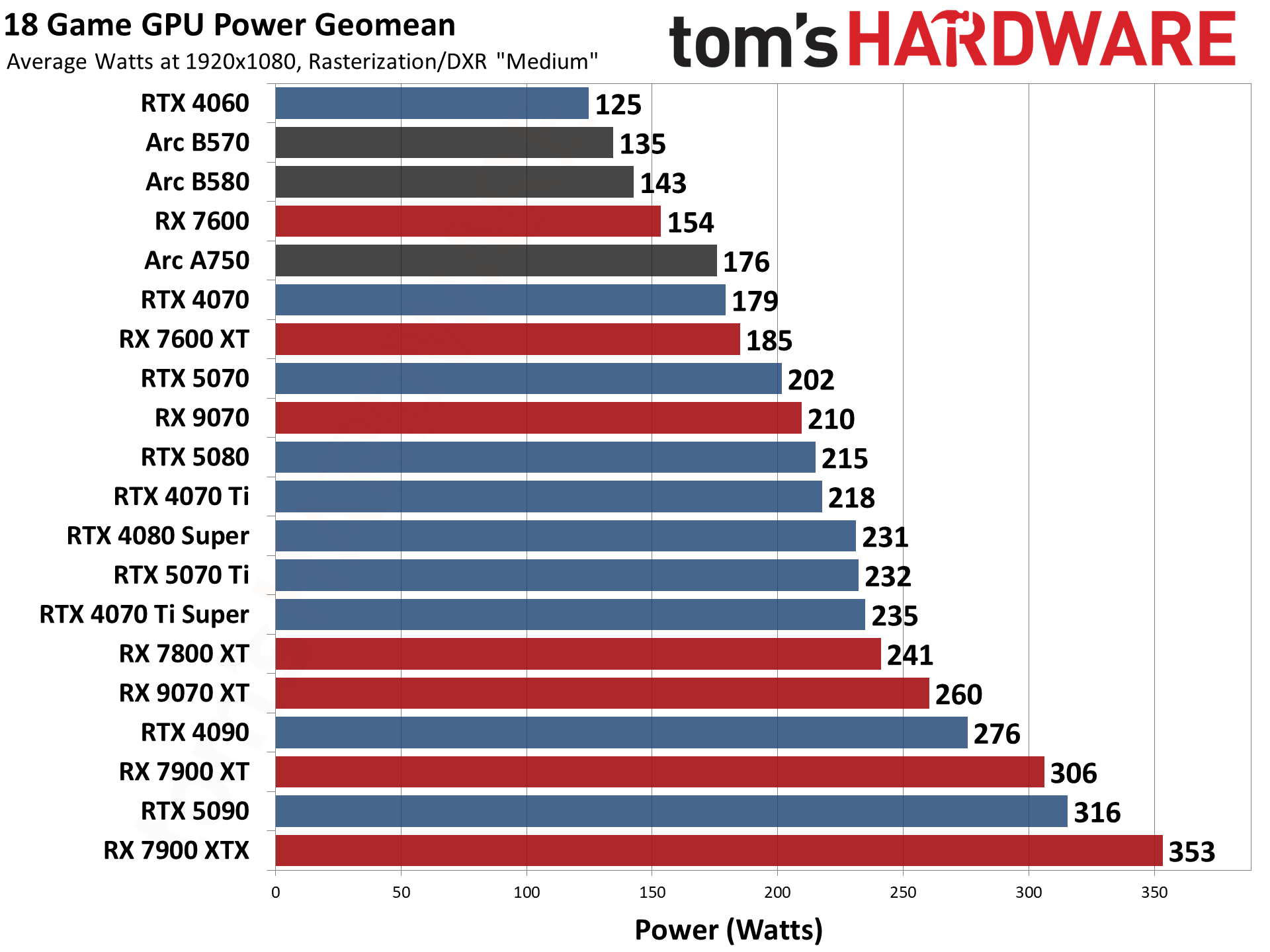
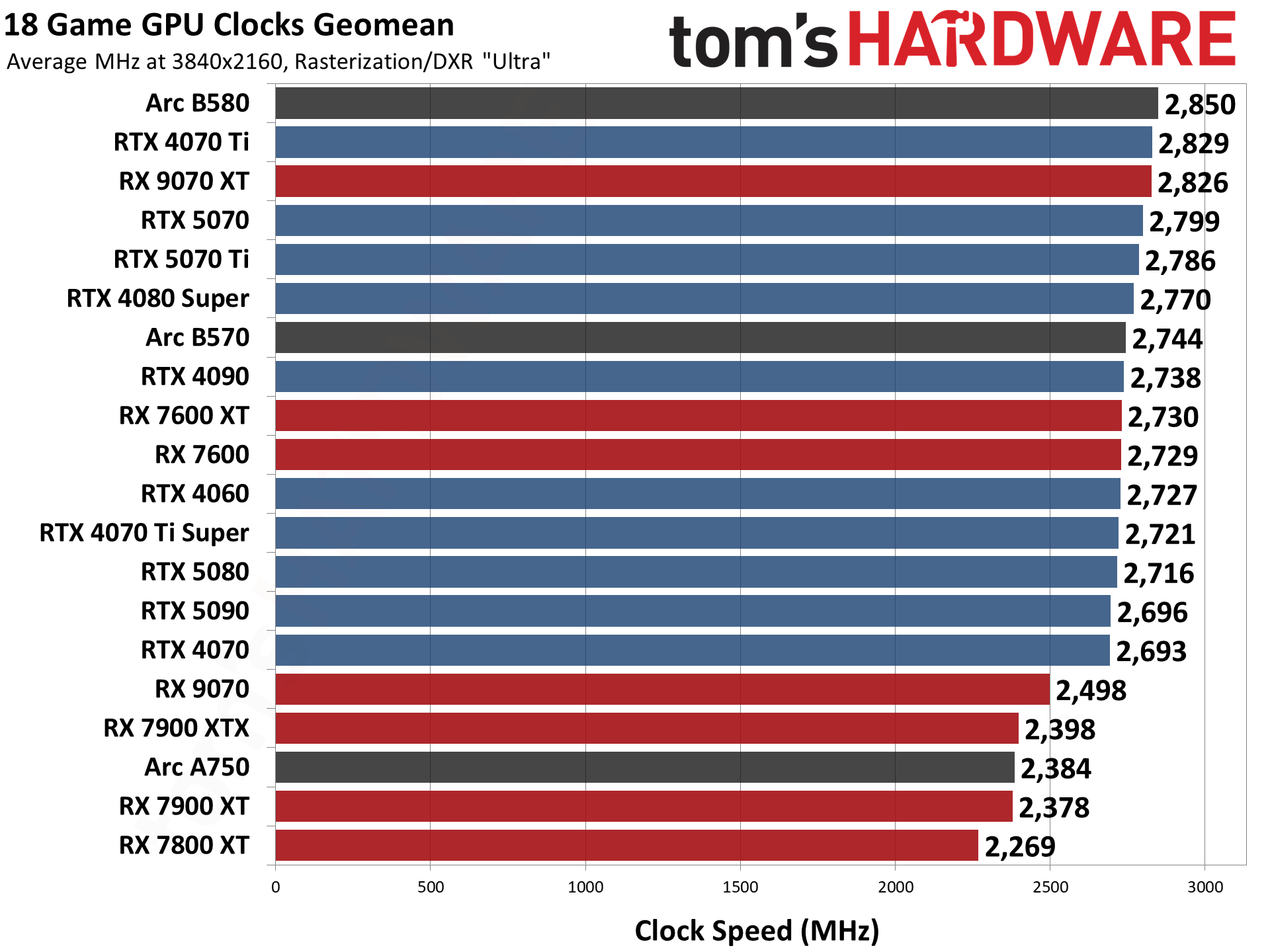
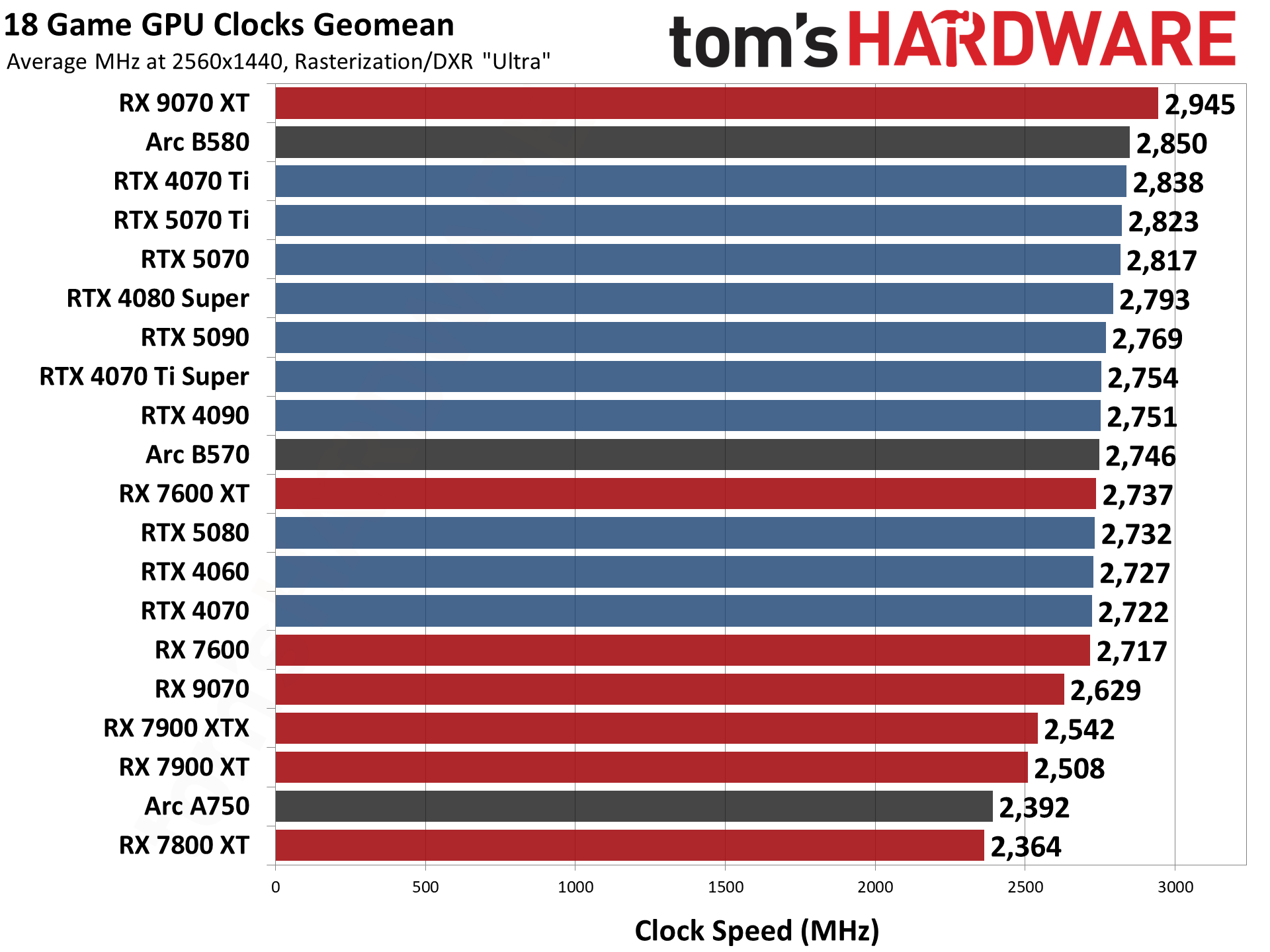
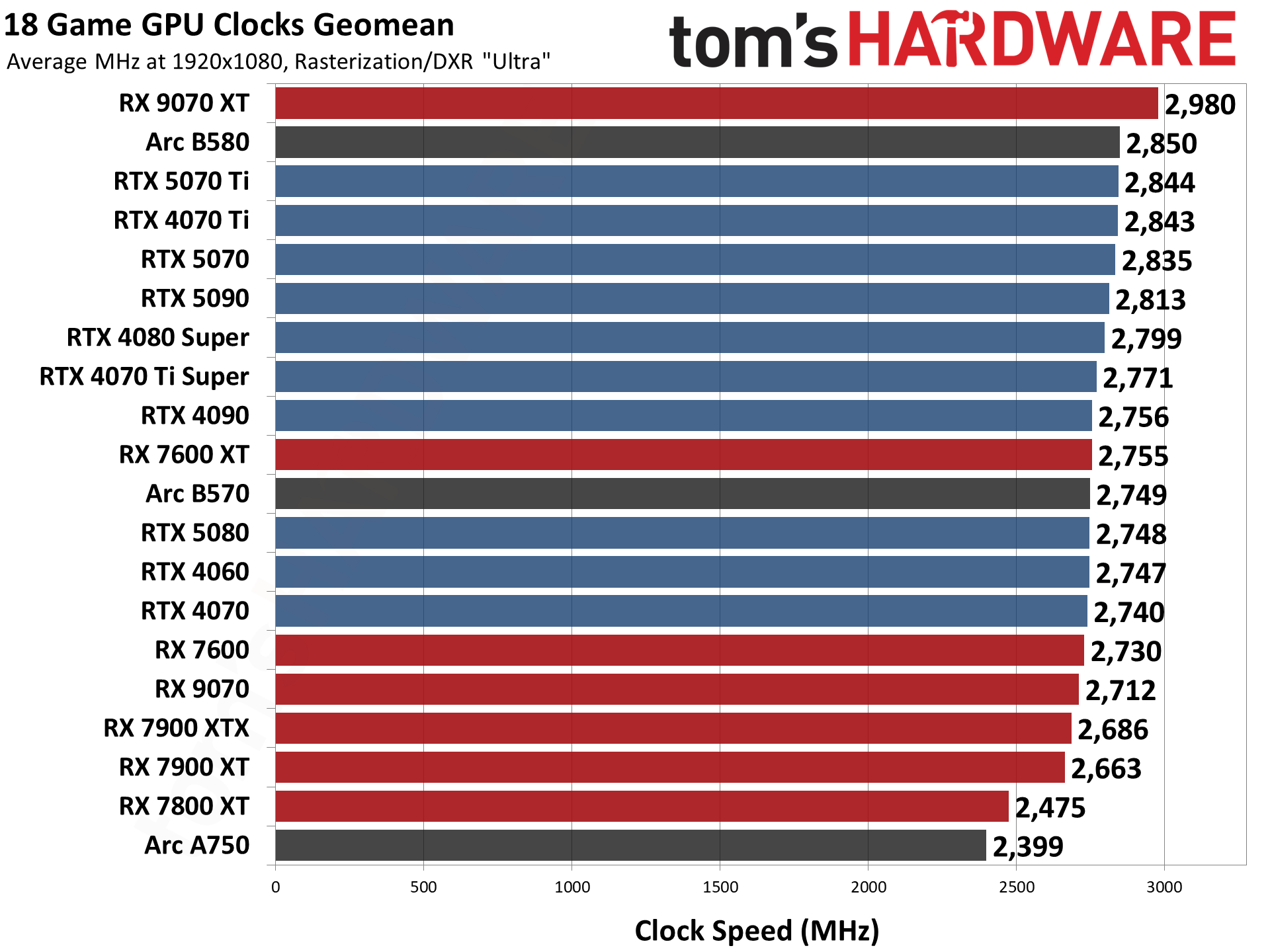
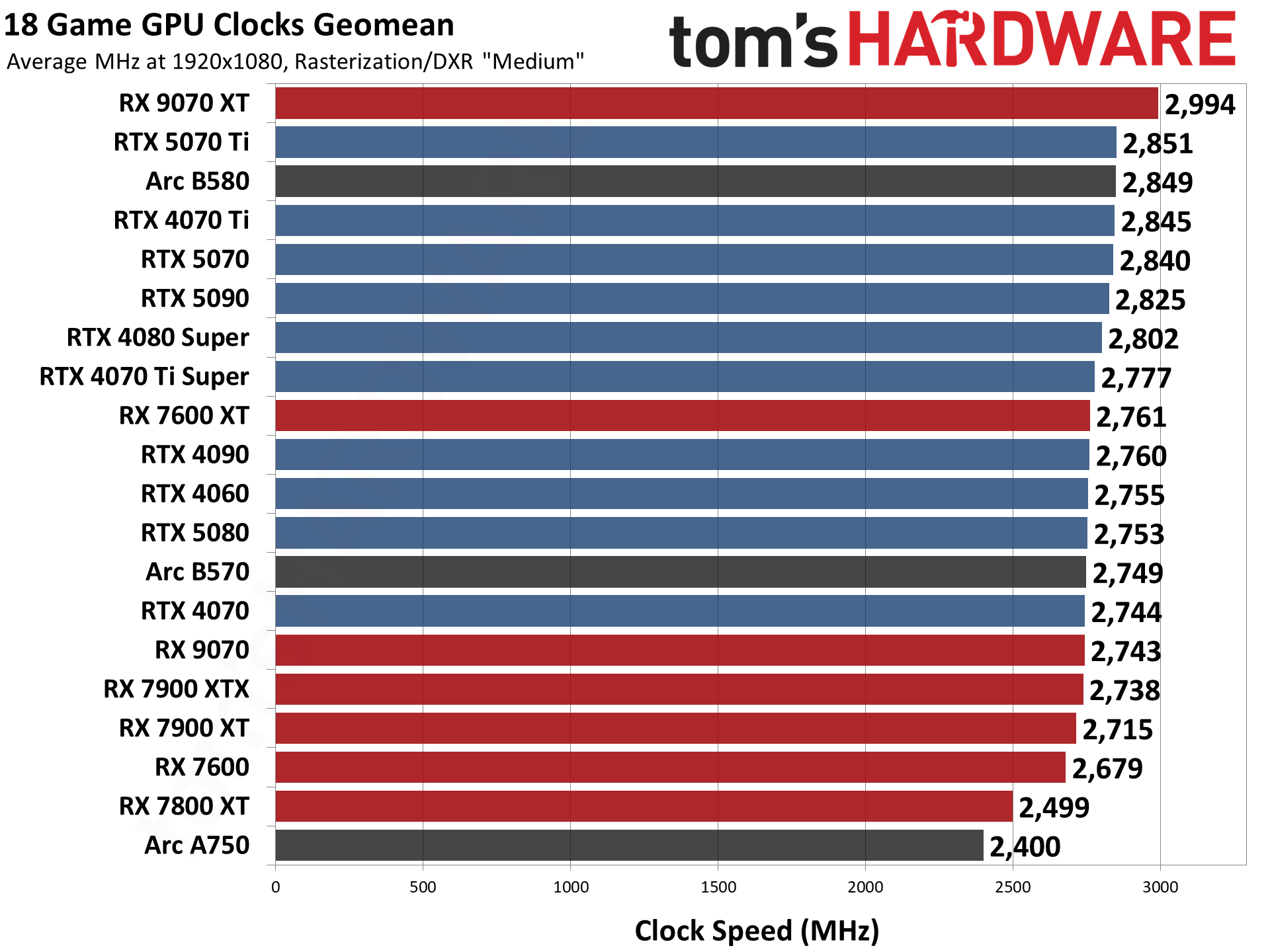
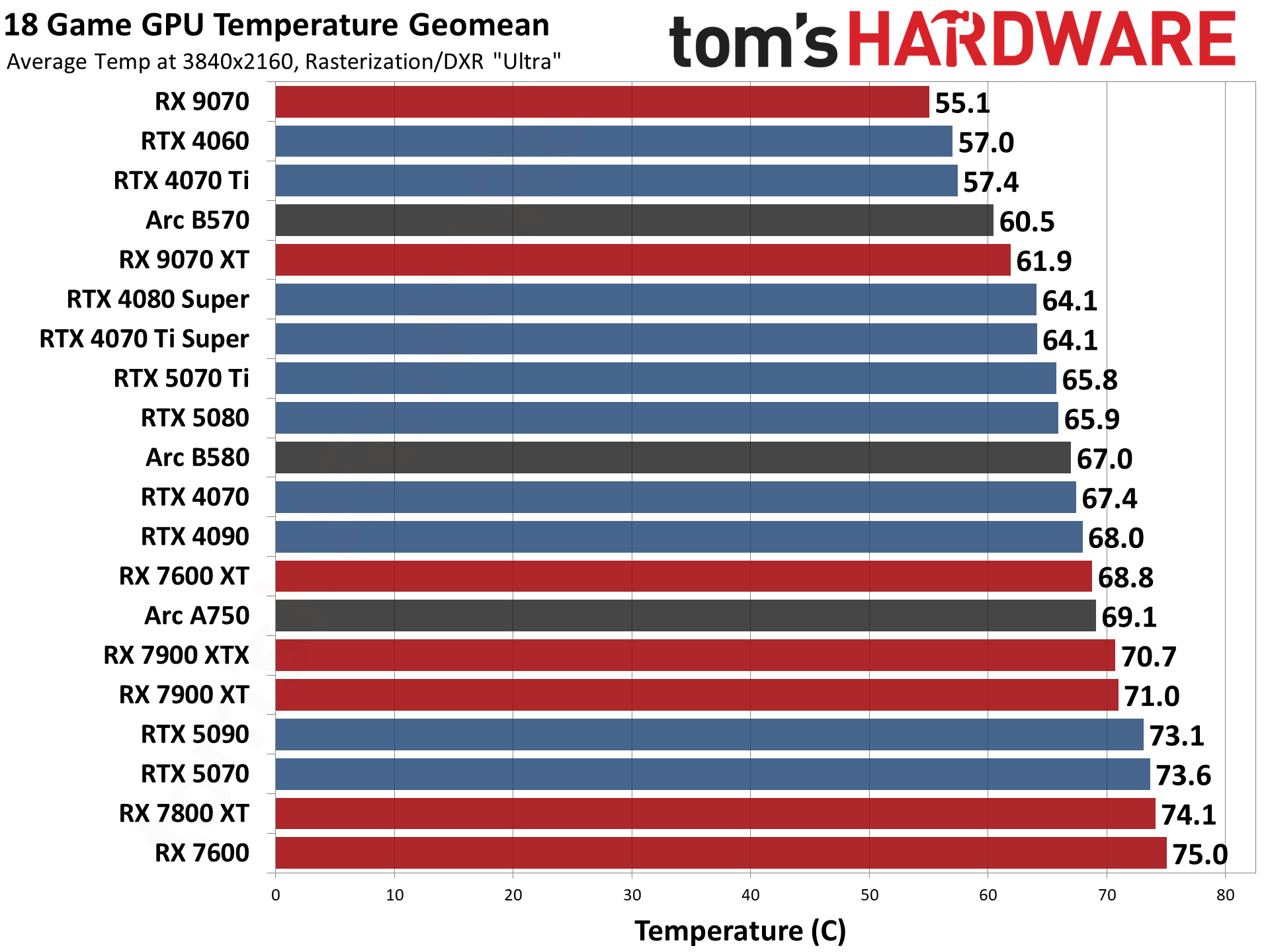
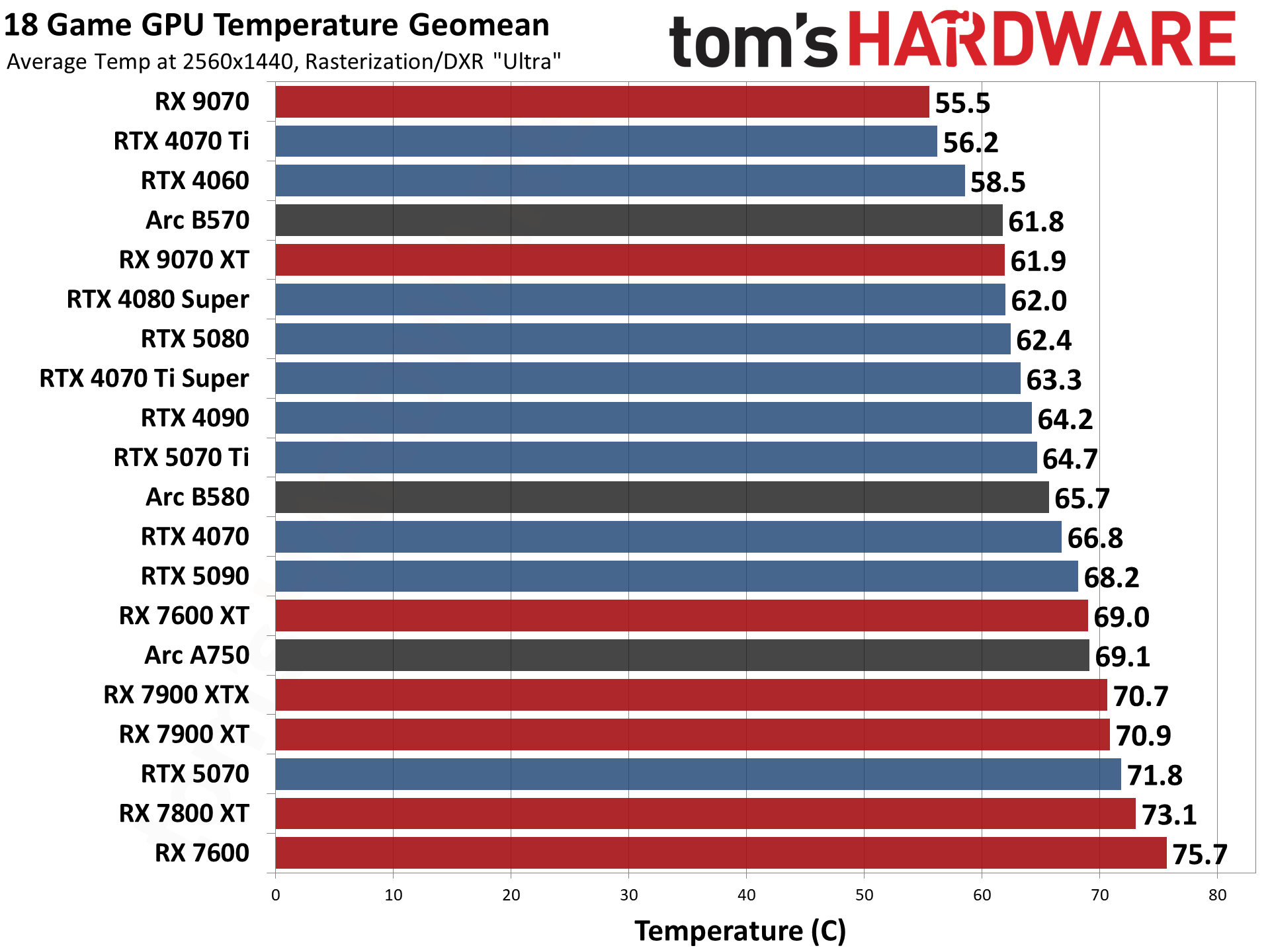
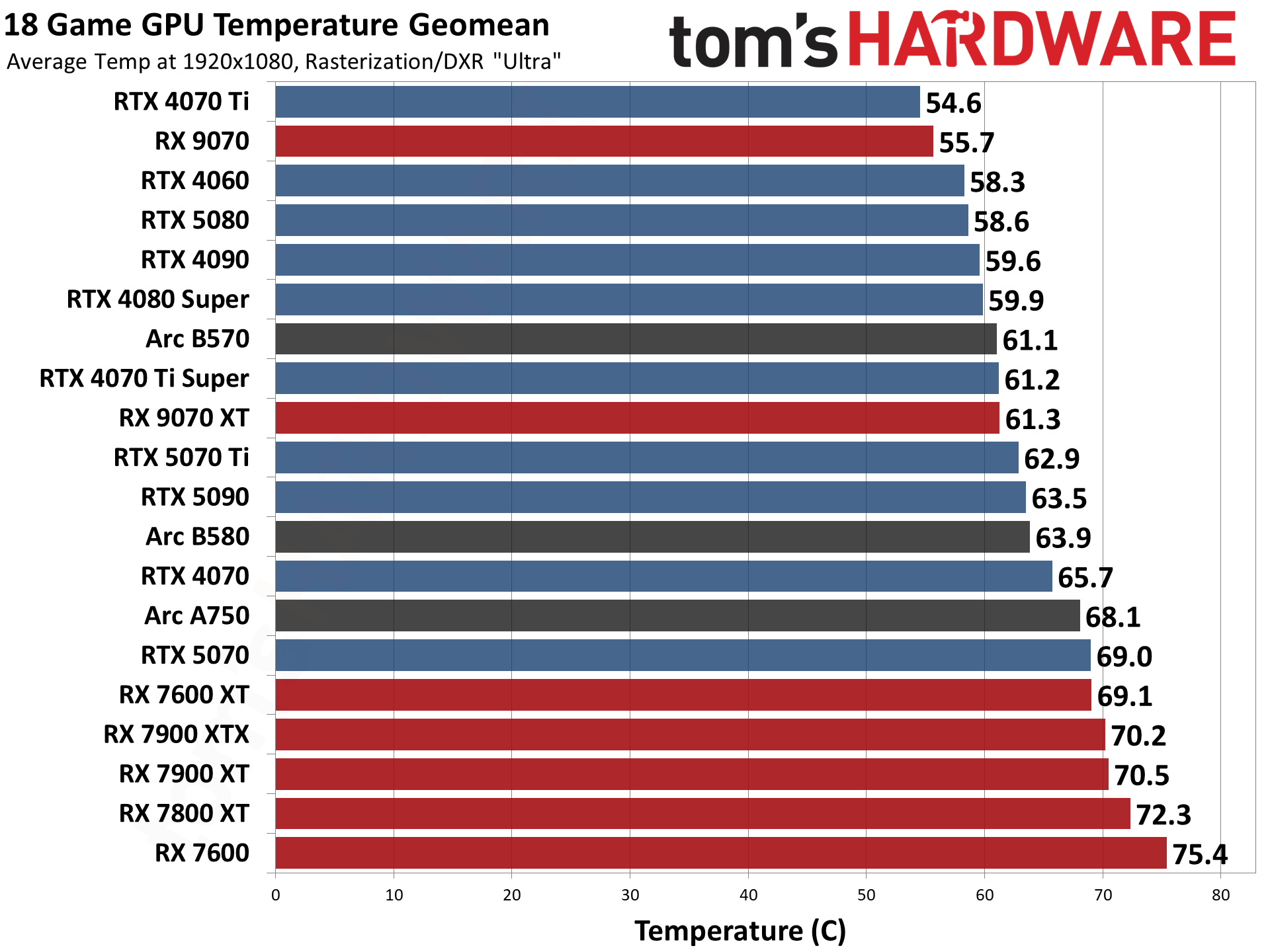
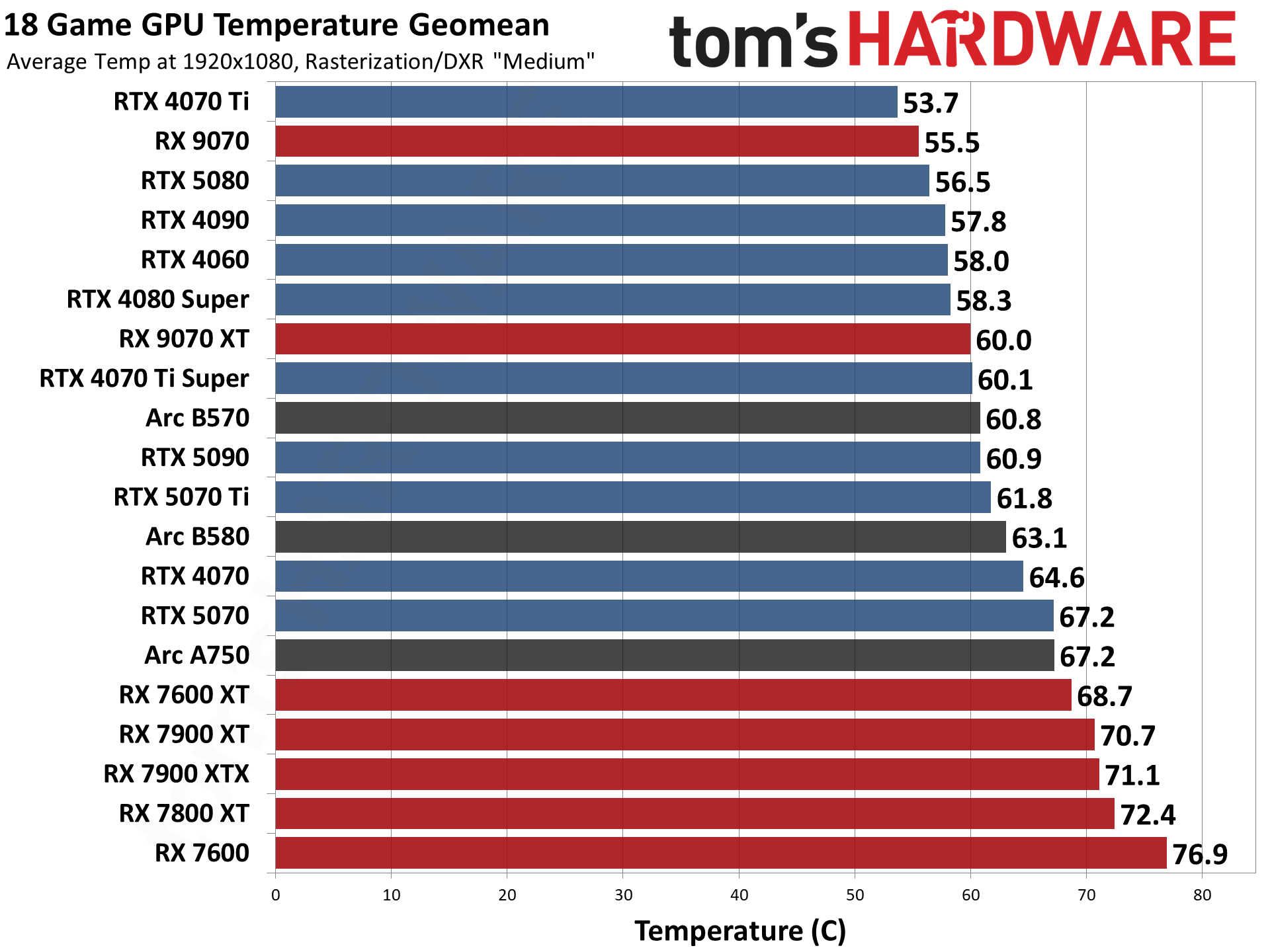
Choosing among the best graphics cards
We've provided eleven choices for the best graphics cards, recognizing that there's plenty of potential overlap. The latest generation GPUs aren't as readily available as we'd like, and the bottom of the new product stacks aren't completely fleshed out, so we've also included a few selections from the prior generation GPUs until such time comes that they're no longer relevant.
We've listed the best graphics cards that are available right now, along with their current online prices, which we track in our GPU prices guide. With so many cards selling above MSRP and a tight supply, it's not the greatest time to upgrade. Hopefully things continue to improve. Our general advice: Don't pay more today for yesterday's hardware, but if it's time for an upgrade, don't get stuck playing the waiting game — there's always something new coming down the pipeline.
If your main goal is gaming, you can't forget about the CPU. Getting the best possible gaming GPU won't help you much if your CPU is underpowered and/or out of date. So be sure to check out the Best CPUs for Gaming page, as well as our CPU Benchmark hierarchy to make sure you have the right CPU for the level of gaming you're looking to achieve.
Our current recommendations reflect the changing GPU market, factoring in all of the above details. The GPUs are ordered using subjective rankings, taking into account performance, price, features, and efficiency, so slower cards may end up higher on our list.
Additional Shopping Tips
When buying a graphics card, consider the following:
• Resolution: The more pixels you're pushing, the more performance you need. You don't need a top-of-the-line GPU to game at 1080p.
• PSU: Make sure that your power supply has enough juice and the right 6-, 8- and/or 16-pin connector(s). For example, Nvidia recommends a 550-watt PSU for the RTX 3060, and you'll need at least an 8-pin connector and possibly a 6-pin PEG connector as well. Newer RTX 40-series GPUs use 16-pin connectors, though all of them also include the necessary 8-pin to 16-pin adapters.
• Video Memory: A 4GB card is the absolute minimum right now, 6GB models are better, and 8GB or more is strongly recommended. A few games can now use 12GB of VRAM, though they're still the exception rather than the rule.
• FreeSync or G-Sync? Either variable refresh rate technology will synchronize your GPU's frame rate with your screen's refresh rate. Nvidia supports G-Sync and G-Sync Compatible displays (for recommendations, see our Best Gaming Monitors list), while AMD's FreeSync tech works with Radeon cards.
• Ray Tracing and Upscaling: The latest graphics cards support ray tracing, which can be used to enhance the visuals. DLSS provides intelligent upscaling and anti-aliasing to boost performance with similar image quality, but it's only on Nvidia RTX cards. AMD's FSR works on virtually any GPU and also provides upscaling and enhancement, but on a different subset of games. New to the party are DLSS 3 with Frame Generation and FSR 3 Frame Generation, along with Intel XeSS, with yet another different subset of supported games — DLSS 3 also provides DLSS 2 support for non 40-series RTX GPUs.
Finding Discounts on the Best Graphics Cards
With the GPU shortages mostly over, you might find some particularly tasty deals on occasion. Check out the latest Newegg promo codes, Best Buy promo codes and Micro Center coupon codes.
Want to comment on our best graphics picks for gaming? Let us know what you think in the Tom's Hardware Forums.
Stay On the Cutting Edge: Get the Tom's Hardware Newsletter
Get Tom's Hardware's best news and in-depth reviews, straight to your inbox.
Jarred Walton is a senior editor at Tom's Hardware focusing on everything GPU. He has been working as a tech journalist since 2004, writing for AnandTech, Maximum PC, and PC Gamer. From the first S3 Virge '3D decelerators' to today's GPUs, Jarred keeps up with all the latest graphics trends and is the one to ask about game performance.
